If you’re an adventure seeker looking for a thrilling backpacking experience, Central America is the perfect destination for you. With its stunning natural beauty, diverse cultures, and fascinating history, this region is a backpacker’s paradise. But with so many incredible countries to explore, planning one month in Central America itinerary can be overwhelming.
That’s why I’m here to help. In this blog, I’ll share my recent personal experiences and tips for backpacking in Central America. I’ll guide you through how to visit all 7 Central American countries in one month, things to do, where to stay, and the safest ways to travel. So, whether you’re a solo traveler or exploring with friends, get ready for an unforgettable adventure as I take you on a journey through the heart of Central America!
I am on the mission to travel all the 195 countries in the world (not in a race, more like in a slow and steady fashion) and recently completed 108 countries. It was a big milestone because I work hard, save for these trips and share what I know here on the blog for free so fellow travellers like you can benefit from it. Feel free to return the favour by ordering my new book on Amazon – A solo female traveler’s story: from Kathmandu to finding peace in 100+ countries
I completed this trip recently for 4 weeks and was able to see and do everything I wanted in all of these 7 countries.
Some might say it’s not enough time blah blah. The reality is yeah I would like to spend at least a month in every country I visit and which I have in the past sometimes even up to 6 months but this time, I was time-poor. And when you don’t have enough time you have to be strategic in terms of what exactly you want to see in each country so you can fit that into your itinerary.
After you visit 50+ countries places start to seem a little the same, so on this one-month central America itinerary, I wanted to see something specific, something particular in each of these 7 countries. Also, there are and will be more videos and pictures on the Instagram highlights if you are interested.
Btw I did land and water crossing between the borders independently and used the shuttle service twice (more details coming down below) but you could probably save more time by flying between countries.
Backpacking one month in Central America itinerary
For accommodation, I recommend using booking.com and sorting with price, then consider the ones with highest reviews plus within 1km of center/old town. Below I have researched and linked the best ones with this filter (at the time of writing)
For tours, I recommend using get your guide and walking tours available in most places
If you prefer I assist in your travel planning, pls email at anna (at) annasherchand (dot) com with your budget and subject name of the destination
Here’s my Central America travel route
1. Guatemala (9 Days 9 Nights)

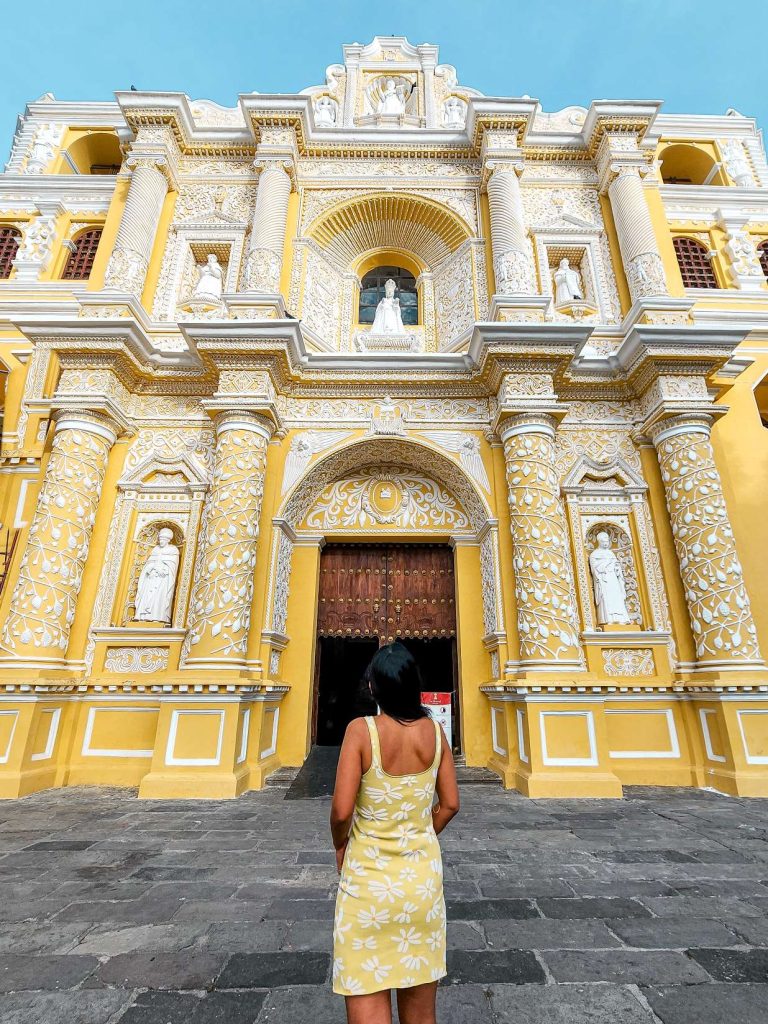
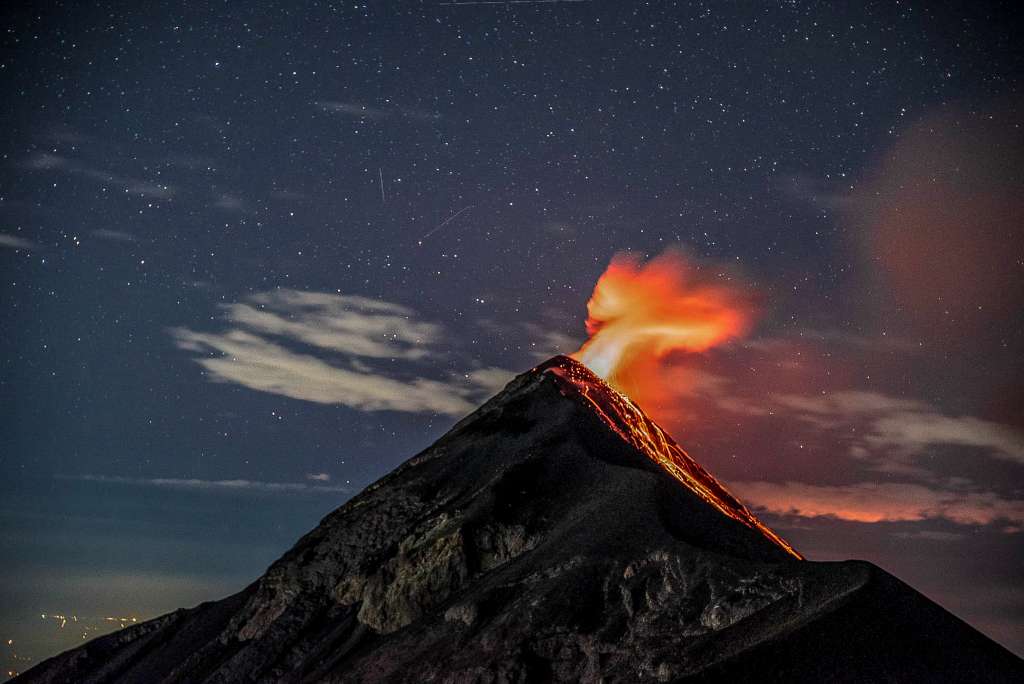
It may come as a shocker to you as I spent a total of 9 nights in the first country itself (2 nights in Antigua, 1-night camping and 3 nights in Lake Atitan, 1 night in Rio Dulce, and 2 in Livingston) It was because I couldn’t cross the border from Livingston to Belize on 1st January as boats were not running that day and I also enjoyed the vibe in San Pedro Lake Atitlan so I extended a couple of nights there. I ramped up the itinerary after this country though and still managed to visit all the countries in Central America.
I. Antigua
Landcross or via air, when you arrive in Guatemala suggest heading straight to Antigua. ( If you land in Guatemala at night, use Uber or stay a night in the city but not much to do there). So as you exit the baggage section there are many little shops selling shuttles to Antigua for $15 USD pp (at the time of writing) Wait a bit to form a group of 3-4 people and you are good to go.
I was excited about climbing an active volcano so as soon as I arrived in Antigua, I booked an overnight Acatenango trek for the next day!
Which hostels to stay in?
I recommend Central Hostel, Hostal Antigüeño, Selina Hostel, or Meson La Esperanza if you really need to save money but it is 15 mins walk from the center. After checking in I walked to the supermarket to buy a sim card called Claro. They had a deal going 7 GB for 50 Quetzal (currency in Guatemala). Now that I had the Internet I went to spend half a day exploring Antigua, had lunch, and then later went to the supermarket again to buy some protein-rich snacks and chocolate for the hike tomorrow and dinner.
For all the safety tips read this blog below –
Solo female travel Safety Tips
Where to eat/drink?
Some popular Guatemalan dishes to try include pepian (a thick stew made with chicken or beef), rellenitos (a sweet plantain stuffed with black beans and chocolate), and tamales (a steamed corn dough filled with meat, vegetables, or cheese).
When I travel I like to try local food so I rarely cook. I recommend Rincon restaurant in Antigua for local food. This place gets super busy so go early. Other ones would be Restaurante Fridas, Café Sky, and Charleston for drinks.
Highlights in Antigua
Below are some things to see and highlight in Antigua, Guatemala which you can do on the first day and when you return from the hike. They are all within walking distance from each other so won’t take long.
- Antigua Guatemala Cathedral: This impressive cathedral was built in the 16th century and is a must-see attraction in Antigua. It has impressive baroque architecture and its ruins give it an air of mystery.
- Cerro de la Cruz: This viewpoint is located on a hill overlooking the city of Antigua. From there, you can enjoy a stunning panoramic view of the city and the surrounding mountains.
- Antigua Market: This is a bustling market that offers everything from traditional handicrafts to fresh produce. It’s a great place to experience the local culture and pick up some souvenirs.
- Santa Catalina Arch: This iconic arch is one of the most photographed landmarks in Antigua. It was built in the 17th century and has become a symbol of the city.
- La Merced Church: This beautiful church is known for its elaborate façade and impressive baroque interior. It’s a great place to appreciate colonial architecture and religious art.
- Jade Museum: This museum is dedicated to the history and culture of jade in Guatemala. It has a large collection of jade artifacts and offers guided tours that explain the importance of jade to the ancient Mayan civilization.
- ChocoMuseo: This chocolate museum offers a fun and educational experience for chocolate lovers. You can learn about the history of chocolate and see how it’s made, as well as sample some delicious chocolate treats.
Acatenango trek
As above the highlight for me in Antigua was the overnight Acatenango trek. Although I like independently exploring places I do enjoy small group tours because they are not like 50 people walking in a school excursion. Also, our base camp was the highest one, so we had the best views of Mt Fugeo and the surroundings.
On the tour I booked we had nice mashed potatoes, chicken veggies for lunch, marshmallows on a campfire, hot chocolates, stir-fry for dinner, amazing sunsets, and hot teas. We saw Mt Fugeo erupting and witnessed one of the most stunning sunrises. I was with 4 other lovely people plus the guide and the whole trip felt like a close group of friends traveling and hiking together.
Not my first volcano hike, but it was definitely the first ever Active volcano hike and a hike I will always remember. After the hike, I spent an afternoon and a night in Antigua and the next day it was time for the lake.
II. Lake Atitlan
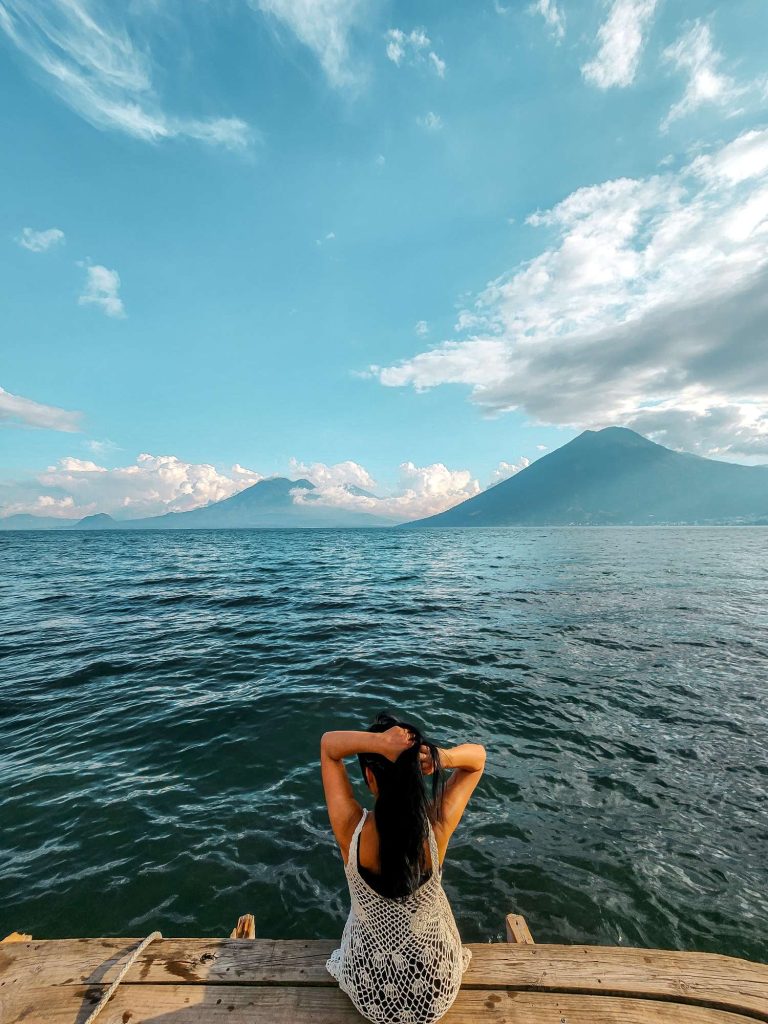
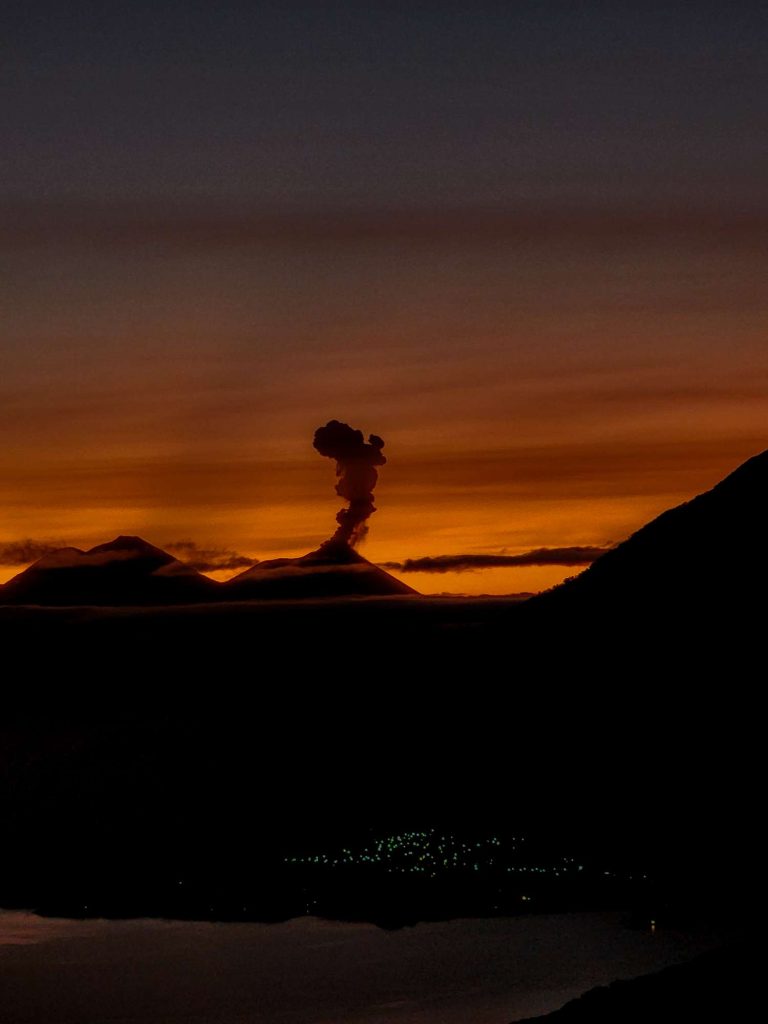
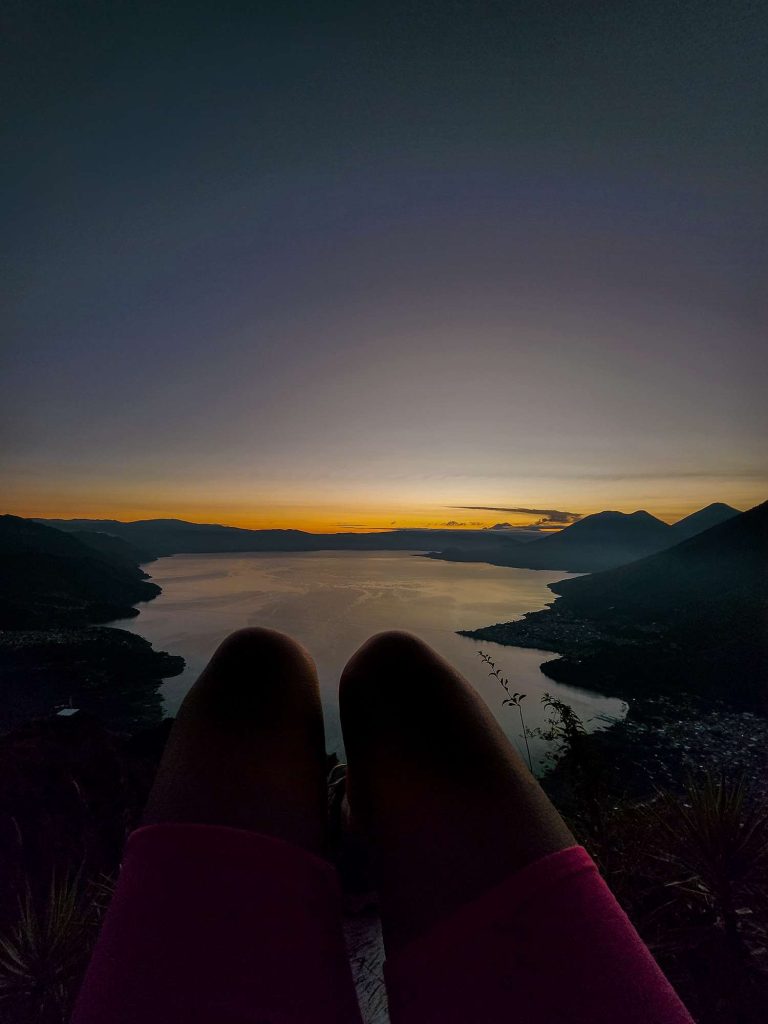
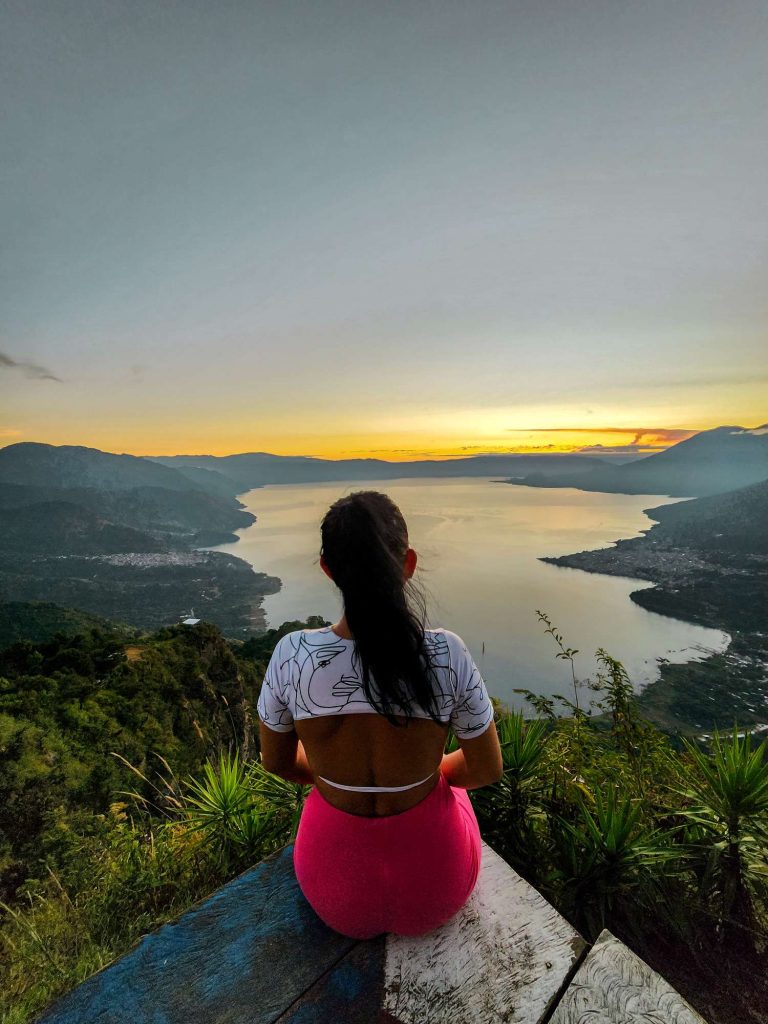
Lake Atitlan is a beautiful lake located in the Guatemalan Highlands, surrounded by towering volcanoes and traditional Mayan villages.
Where to stay in Lake Atitlan?
Before you book anything, decide where you want to stay in Lake Atitlan first. It is a big lake with many small villages dotted around. Many travelers end up in San Pedro first because that is where the shuttle drops off people from Antigua. Then you take a boat or transfer to other islands such as San Macros (hippy vibes), Panajchel (sunsets), Santiago (street arts), or Santa Cruz (hikes).
I decided to keep it simple and stayed in San Pedro and took the lancha (boat) to other islands on day trips which worked out great. I stayed at Mandala’s hostel but their WIFI was terrible. So, I moved to Amigos Hostel their wifi was great but the music coming out from Sublime – the club at the front was too loud. You could book a private room at the Hotel Amigo which is the same place but at the back, so less noise, or I would recommend these hostels Hospedaje Lolita, Don Pascual or Casa LLEMO.
Regardless of where you book, make sure it is in the spot where you want to be and somewhere that has tons of positive reviews.
Where to eat in San Pedro, Lake Atitlan?
Sababa is a vegetarian restaurant that offers a range of healthy and delicious dishes. They use fresh, locally sourced ingredients and offer a variety of vegan and gluten-free options.
The Fifth Dimension is a rooftop bar and restaurant in San Pedro La Laguna that offers stunning views of Lake Atitlan. They serve a mix of international and Guatemalan cuisine, as well as a range of cocktails and wines.
Shanti Shanti is a vegetarian restaurant that offered good food also. And the Crepe place was great too- had the banana crepe with peanut butter. Not sure but I think it’s called Dolphin.
Apart from these, don’t forget to try the street vendors. We had something similar to a sandwich for Q20! ( videos and pictures in my Instagram highlights) And the best thing is all of these places offered a view of the lake and mountains!
How to go from Antigua to Lake Atitlan?
There are several ways to get from Antigua to Lake Atitlan. Here are some of the most common options:
- Shuttle: Many shuttle companies operate between Antigua and Lake Atitlan. They offer door-to-door service and are a convenient and comfortable option. The journey takes around 3-4 hours, depending on traffic and road conditions. I booked it through a local company in Lake Atitlan called Shuttle Guatemala – fast response on WhatsApp. (2 mins from Amigo hostel where I stayed)
- Private transfer: If you prefer more flexibility and privacy, you can hire a private car or van to take you from Antigua to Lake Atitlan. This option is more expensive than the shuttle, but you can customize your itinerary and stop along the way if you want.
- Chicken bus: The cheapest way to get from Antigua to Lake Atitlan is by taking a “chicken bus.” These are colorful, old American school buses that have been converted into public transportation. They can be crowded and uncomfortable, but they are also a fun and authentic way to travel. You’ll need to take a chicken bus from Antigua to Chimaltenango, then another one from Chimaltenango to Lake Atitlan.
- Private driver: If you want more comfort and convenience than a chicken bus, but don’t want to pay for a private transfer, you can hire a private driver. This option is less expensive than a private transfer but more expensive than a shuttle or chicken bus. You can negotiate the price with the driver and customize your itinerary.
No matter which option you choose, the journey from Antigua to Lake Atitlan is a scenic one, with beautiful views of the Guatemalan highlands and the volcanoes.
Highlights from Lake Atitlan
- Take a boat tour: One of the best ways to experience the beauty of Lake Atitlan is by taking a boat tour. You can explore the lake and visit some of the charming Mayan villages that dot its shores.
- Hike a volcano: Several volcanoes around Lake Atitlan offer great hiking opportunities. Volcano San Pedro is the most popular one, with a challenging but rewarding hike to the summit. I did the Indian nose hike which was an easy sunrise hike (pics above)
- Visit a Mayan village: There are several traditional Mayan villages around the lake, each with its own unique culture and traditions. Santiago Atitlan, San Juan La Laguna, and Santa Catarina Palopo are some of the most interesting ones to visit.
- Go kayaking: If you’re looking for a more active way to explore the lake, kayaking is a great option. You can rent a kayak and paddle around the lake, taking in the stunning views and enjoying the peace and tranquility of the water.
- Relax at a spa: Lake Atitlan is a great place to unwind and recharge. Several spas around the lake offer a range of treatments and services, from massages to yoga classes.
- Learn about Mayan culture: Lake Atitlan is home to many indigenous Mayan communities, and there are several cultural centers and museums where you can learn about their history, traditions, and way of life.
- Take in the views: Finally, Lake Atitlan is simply a stunning place to behold. Take some time to sit back and enjoy the incredible views of the lake and the surrounding volcanoes, especially at sunrise or sunset.
- Learn Spanish: There are several schools here where you can get admission to be a student. My friend was taking Spanish classes and coming back to the hostel but you can also choose to homestay.
These are just a few of the many things to see and do at Lake Atitlan. It’s a truly magical place and a must-visit destination in Guatemala.
III. Rio Dulce
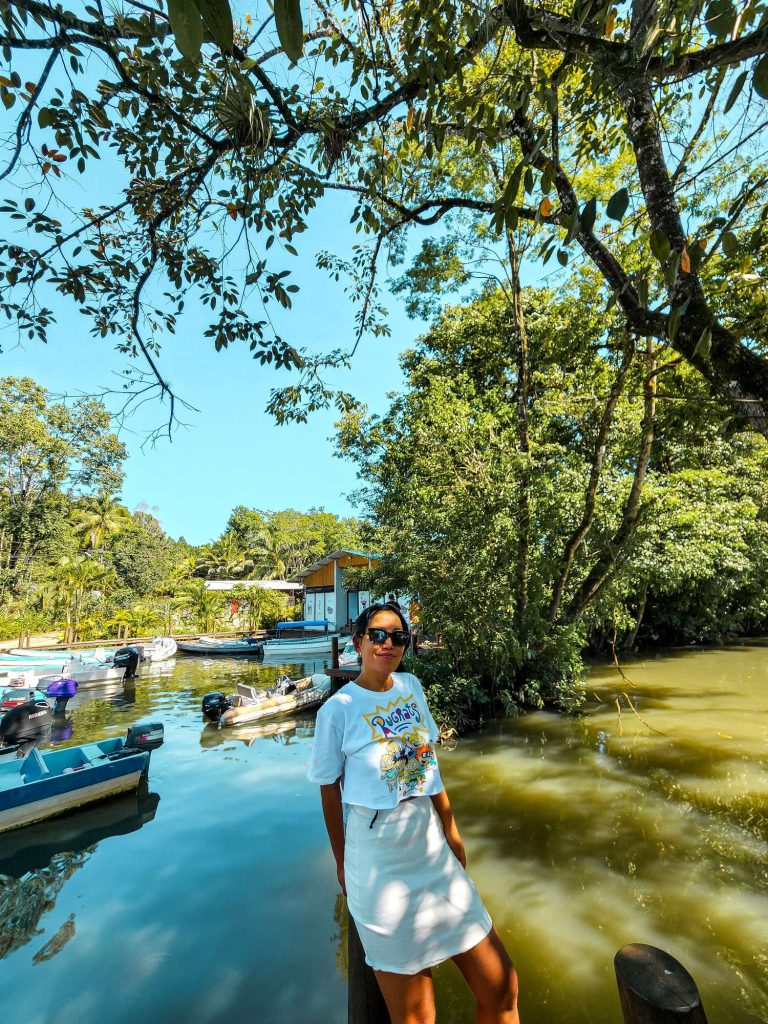
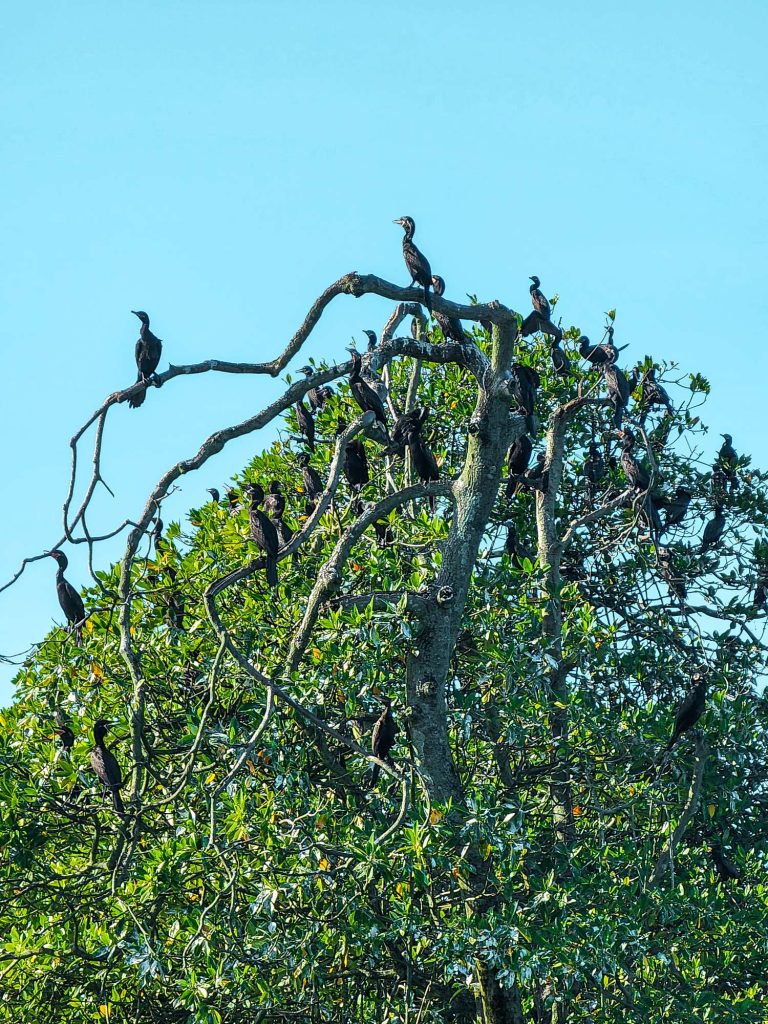

It was hard to leave Lake Atitlan as it was such an easy place to just chill and relax but time was ticking and I had to say goodbye to Sabine and I left for Rio Dulce.
I skipped Semuc champey because I had seen something similar before and Tikal too because I wanted to see ruins in Honduras. As I said above, I wanted to make a special highlight for each country and as I don’t dive, the islands in Honduras didn’t interest me. So I’d planned to see Mayan ruins in Honduras.
Where to stay and eat in Rio Dulce?
I stayed at this hostel called Hostal Blood Moon. It was a clean hostel but note that it is a 14-minute walk from the bus stop and at night after the highway, there is a dark street that you have to cross which could be scary. I found this AFTER I made the booking and contacted the hostel for taxi driver details but as it was already 10 pm no one wanted to pick up a passenger. So I walked which went ok thankfully!
Some alternative options are Dreamcatcher Eco Lodge, Boatique Hotel and Marina, Hotel Casa Perico, or Hotel Kangaroo Rio Dulce (need to take a boat after the bus)
There are many restaurants to eat at but I only had 1 meal here. So my recommendation is the restaurant next to the ticket office as the food was decent and no chance of missing a boat as it is right in front.
How to go from Lake Atitlan to Rio Dulce?
Here are some of the most common ways to make the journey:
- Private transfer: You can hire a private car or van to take you from Lake Atitlan to Rio Dulce. This is the most comfortable and convenient option and allows you to customize your itinerary and make stops along the way. The journey takes around 5-6 hours, depending on traffic and road conditions.
- Shuttle: Several shuttle companies operate between Lake Atitlan and Rio Dulce. They offer door-to-door service and are a convenient and affordable option. The journey takes around 6-7 hours, depending on traffic and road conditions. I booked it through a local company in Lake Atitlan called Shuttle Guatemala – fast response on WhatsApp. (2 mins from Amigo hostel where I stayed)
- Chicken bus: If you’re on a tight budget, you can take a “chicken bus” from Lake Atitlan to Rio Dulce. However, this option can be uncomfortable and time-consuming, as you’ll need to make several transfers along the way. The journey can take up to 8-10 hours, depending on the connections.
- Combination of shuttle and boat: Another option is to take a shuttle from Lake Atitlan to the town of Panajachel, and then take a boat across Lake Atitlan to the town of San Pedro La Laguna. From there, you can take another shuttle to Rio Dulce. This option is more scenic and allows you to break up the journey, but it can also be more time-consuming and expensive.
I chose the same shuttle company to get to Lake Atitlan, called the Guatemala shuttle. 9 AM pick up from Lake Atitlan and I arrived in Rio Dulce at 10 PM!
Things to do in Rio Dulce:
- Explore the Rio Dulce Canyon: The Rio Dulce Canyon is a narrow and winding waterway that runs through a lush tropical forest. You can take a boat tour to explore the canyon and see the stunning scenery, including waterfalls, wildlife, and unique rock formations.
- Visit the Castillo de San Felipe: The Castillo de San Felipe is a historic Spanish fortress that was built in the 16th century to protect against pirate attacks. You can explore the fortress and learn about its fascinating history, as well as enjoy panoramic views of the river and surrounding jungle.
- Relax at hot springs: There are several hot springs in the area, including the popular Finca Paraiso. You can soak in the warm waters and enjoy the tranquil surroundings, surrounded by lush greenery and the sounds of the river.
- Hike in the jungle: The area around Rio Dulce is home to several national parks and nature reserves, offering opportunities for hiking and wildlife spotting. The Biotopo Chocon Machacas is a popular destination for hiking, where you can see a variety of birds, monkeys, and other wildlife.
IV. Livingston
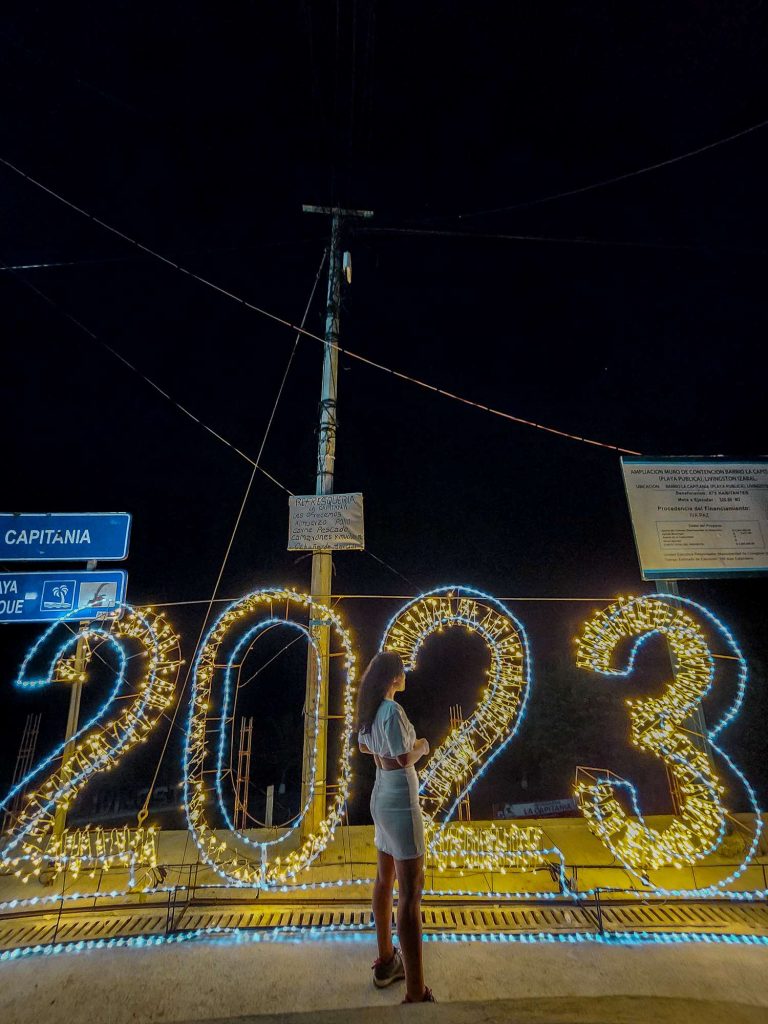
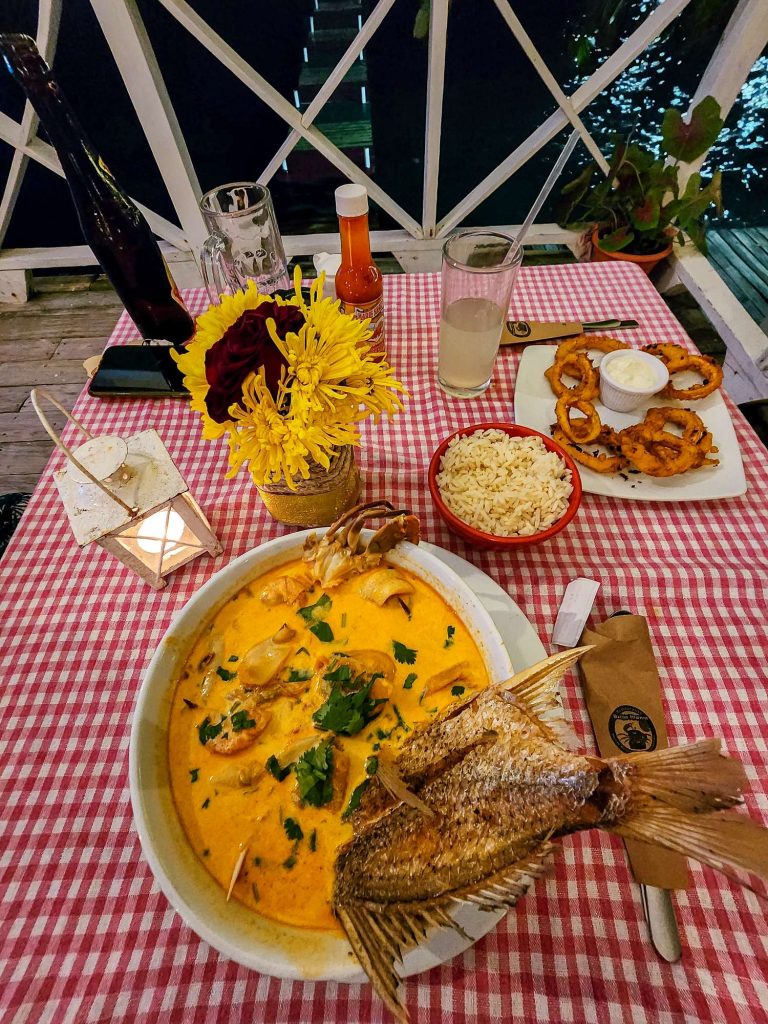
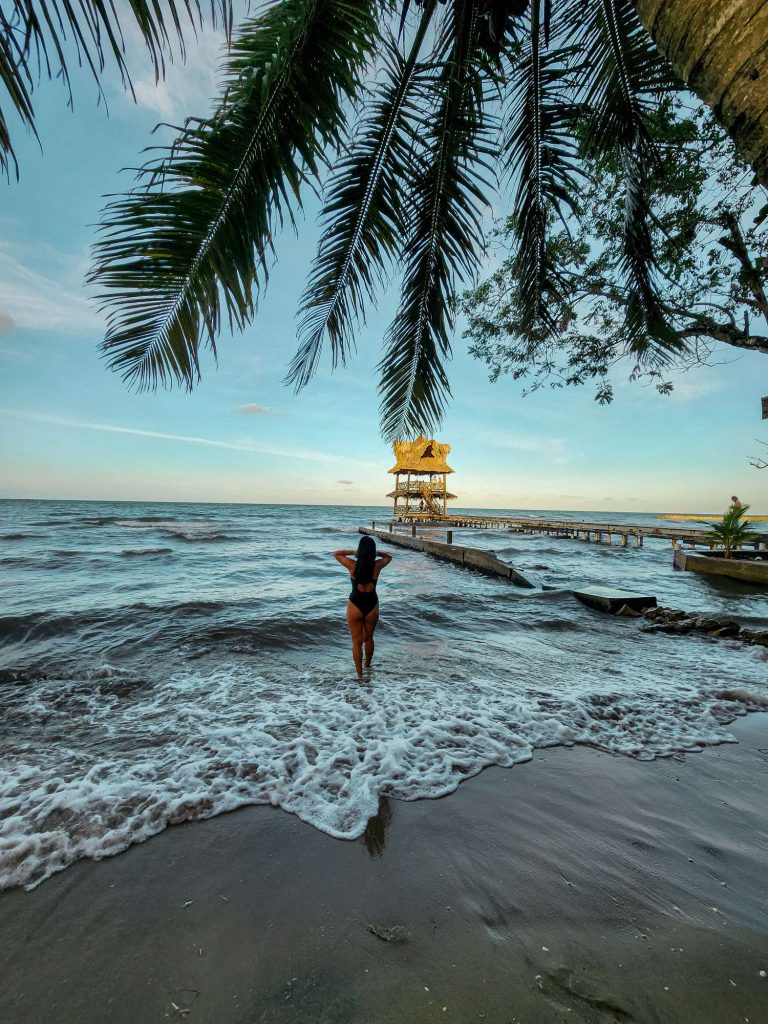
Livingston is a unique town in the region that is known for its Afro-Caribbean culture and cuisine. You can explore the colorful streets, visit the local market, and try the local specialty dish “tapado” which is a seafood soup made with coconut milk and served with rice. And don’t forget to wash it down with a refreshing “coco loco” cocktail, made with coconut water and rum.
This was also a place I happen to arrive on New Year’s Eve and I could not cross the border the next day because there were no boats running. So, I stayed one more night.
Rio Dulce and Livingston are both located in the Izabal department of Guatemala and are connected by the Rio Dulce river.
Where to stay in Livingston?
I stayed at Casa de la Iguana, they had dorms as well as private rooms, a pool, common areas, and hammocks. Other places that comes highly recommended are Hotel La Casa Rosada, Hotel Casa Maya, and Casa Tranquilo.
Make sure to ask the ticket booth at the pier to ask for current timetables for boats and book in advance if you like.
Where to eat in Livingston?
Buga Mama (I had the tapado above here), Happy Fish, Casa Nostra, Bahia Azul, Villa Caribe, Casa Rosada or Hotel Salvador Gaviota
How to get from Rio Dulce to Livingston?
- Take a boat: The most common way to travel from Rio Dulce to Livingston is by boat. You can hire a boat from one of the many tour operators in Rio Dulce or at the dock in Fronteras (also known as Rio Dulce town). This is where I bought the ticket to Livingston. It left at 2 pm. The journey takes around 2 hours and offers beautiful views of the river and surrounding jungle. You may also be able to arrange a private boat with a local captain, which can be a more flexible and personalized option.
- Take a shared shuttle: If you prefer to travel by land, you can take a shared shuttle from Rio Dulce to Livingston. You can book a shuttle through a tour operator or travel agency in Rio Dulce or at your accommodation. The journey takes around 1.5 hours and passes through scenic countryside and small towns.
- Rent a car: If you have your own vehicle or want the freedom to explore the area at your own pace, you can rent a car in Rio Dulce and drive to Livingston. The journey takes around 1.5 hours and follows the CA-13 highway along the coast.
No matter how you choose to travel, the journey from Rio Dulce to Livingston is a scenic and enjoyable one, with plenty of opportunities to see the natural beauty of the region
Things to do in Livingston
- Visit the local market: The market in Livingston is a colorful and bustling place where you can find fresh fruits and vegetables, seafood, traditional crafts, and other local goods. You can immerse yourself in the local culture and try some of the delicious street food, such as fried plantains, empanadas, and coconut bread.
- Relax on the beaches: Livingston is surrounded by beautiful beaches, including Playa Blanca, Playa Quehueche, and Playa de los Siete Altares. You can swim, sunbathe, and relax in the warm Caribbean waters, or take a boat tour to explore the nearby mangroves and coral reefs.
- Learn about Garifuna culture: Livingston is home to a vibrant Garifuna community, who are descended from West African, Arawak, and Carib people. You can learn about their unique music, dance, and cuisine, and even take a drumming or dance class to immerse yourself in the culture.
- Take a boat tour: The Rio Dulce river is a stunning waterway that connects Livingston to other nearby towns and attractions, such as the Castillo de San Felipe and the hot springs at Finca Paraiso. You can take a boat tour to explore the river and see the lush jungle scenery and wildlife.
- Enjoy the nightlife: Livingston is known for its lively nightlife, with plenty of bars, clubs, and music venues where you can dance to the rhythms of reggae, salsa, and Garifuna music. You can also try some of the local rum and cocktails, such as the popular Guifiti.
These are just a few examples of the many great things to do in Livingston. Don’t be afraid to explore and discover the beauty and culture of this fascinating town.
2. Belize (2 Days 1 Night)
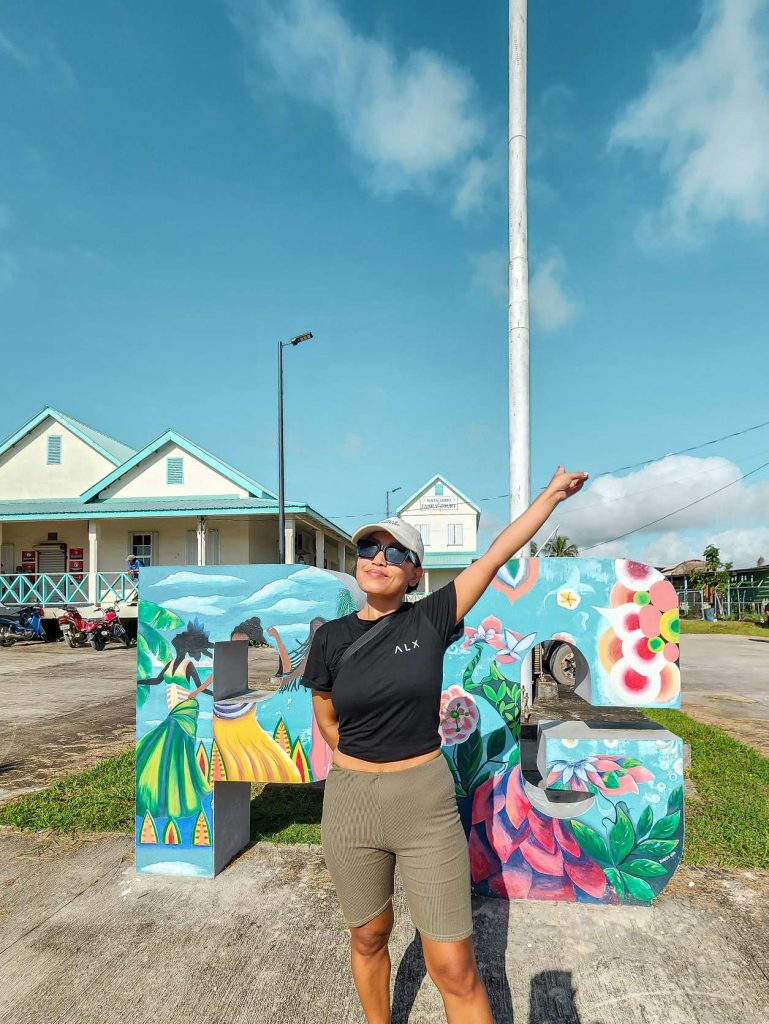
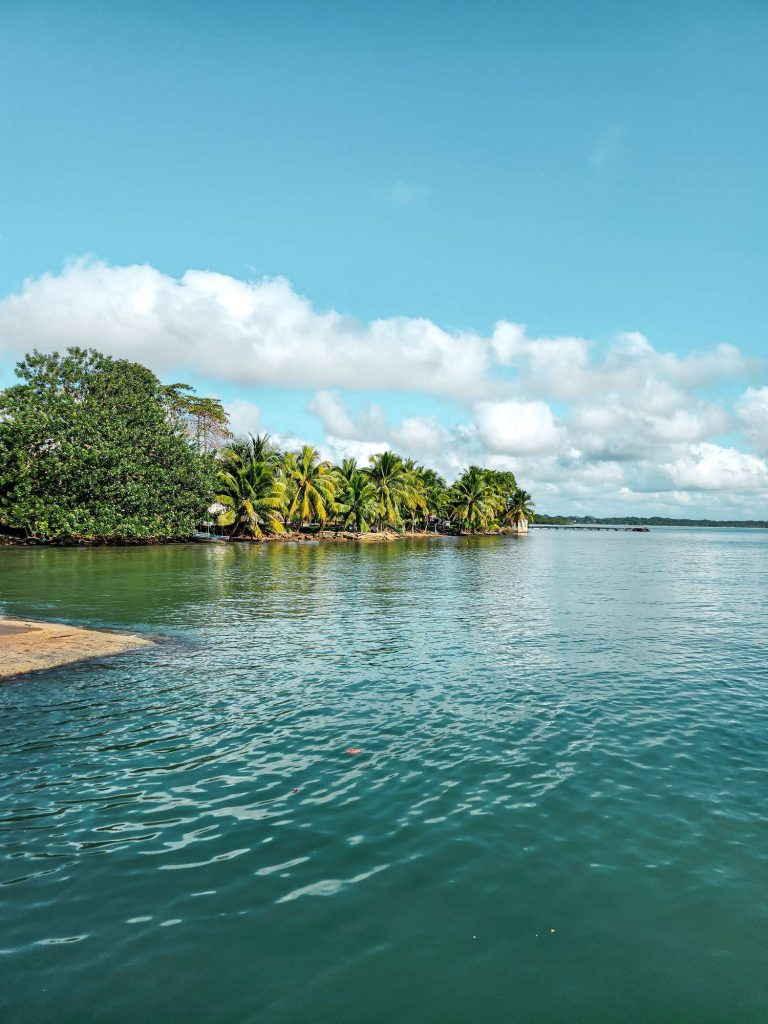
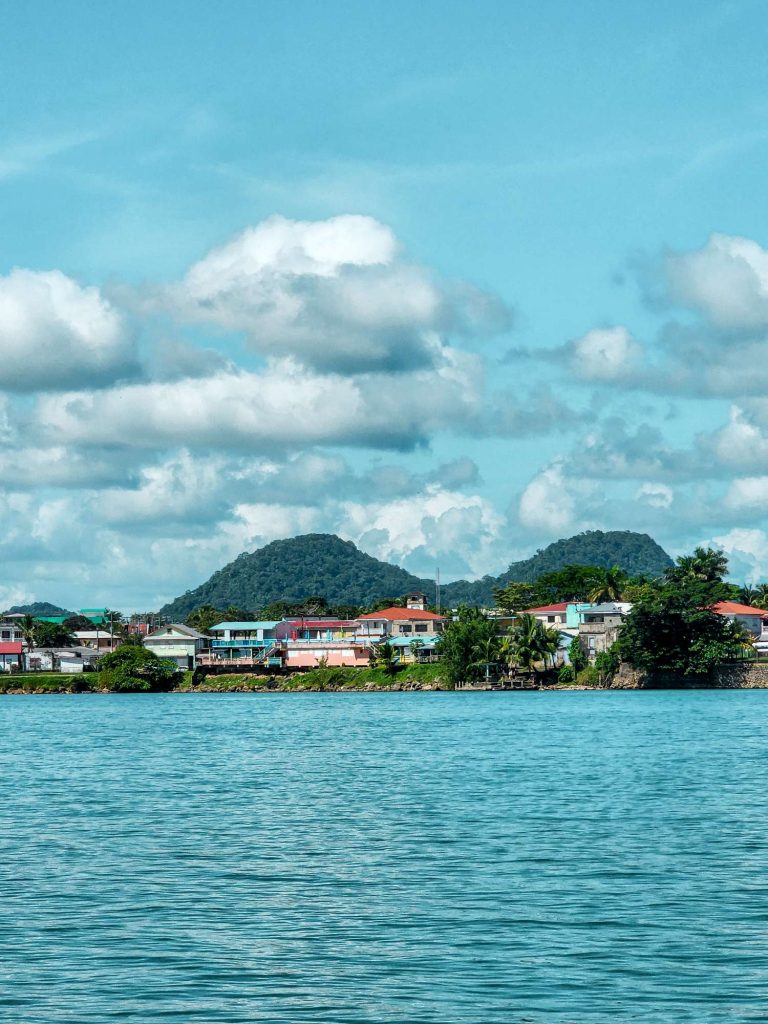
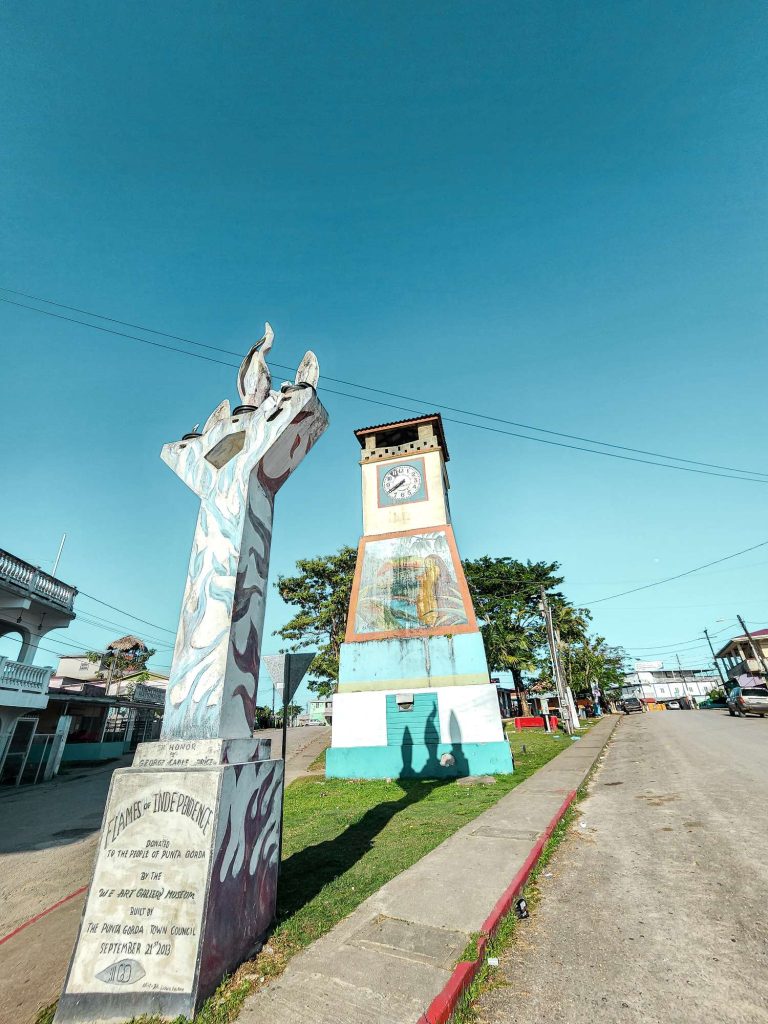
Stamp out of Nicaragua in Livingston. There is a small migration office in town and you to the window, pay the fee and they will stamp you out.
Belize is a small country nestled in Central America, which offers a unique blend of stunning natural beauty, vibrant culture, and adventure-filled activities that appeal to solo travelers and backpackers alike. With its pristine beaches, lush jungles, and ancient ruins, Belize has become a popular destination for those looking to explore the wonders of Central America.
Here’s the most traveled path – After Lake Atitlan in Guatemala, go to Sumuc Champney, Tikal ruins in the north, then cross the border to Belize through San Ignacio and make your way to Belize City and Cuya caulker. Then go south.
However, I had no interest in seeing Tikal (the plan was to see Mayan ruins in Honduras and Mexico), San Ignacio (couldn’t be bothered with the caves), or Caye Caulker (I don’t dive). So I choose to go straight from Lake Atitlan to Rio Dulce- Livingston, cross the border to Belize, and spent two relaxing days, and 1 night at the lesser visited part of Belize around the Carribean sea.
Punta Gorda in Belize is a small fishing village/coastal town located in the southern part of the country near the Guatemalan border. It has a population of only about 6,000 people and is known for its relaxed vibe and diverse cultural heritage, which includes Garifuna, Maya, Mestizo, and East Indian communities. You can experience these cultures through food, music, and art.
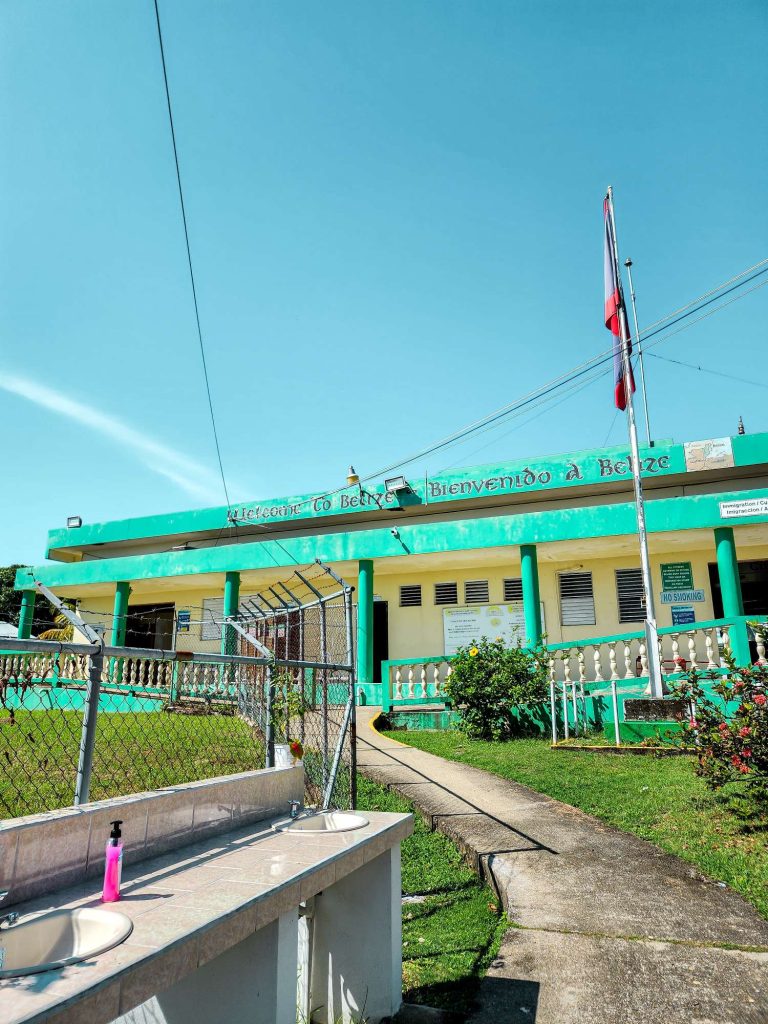


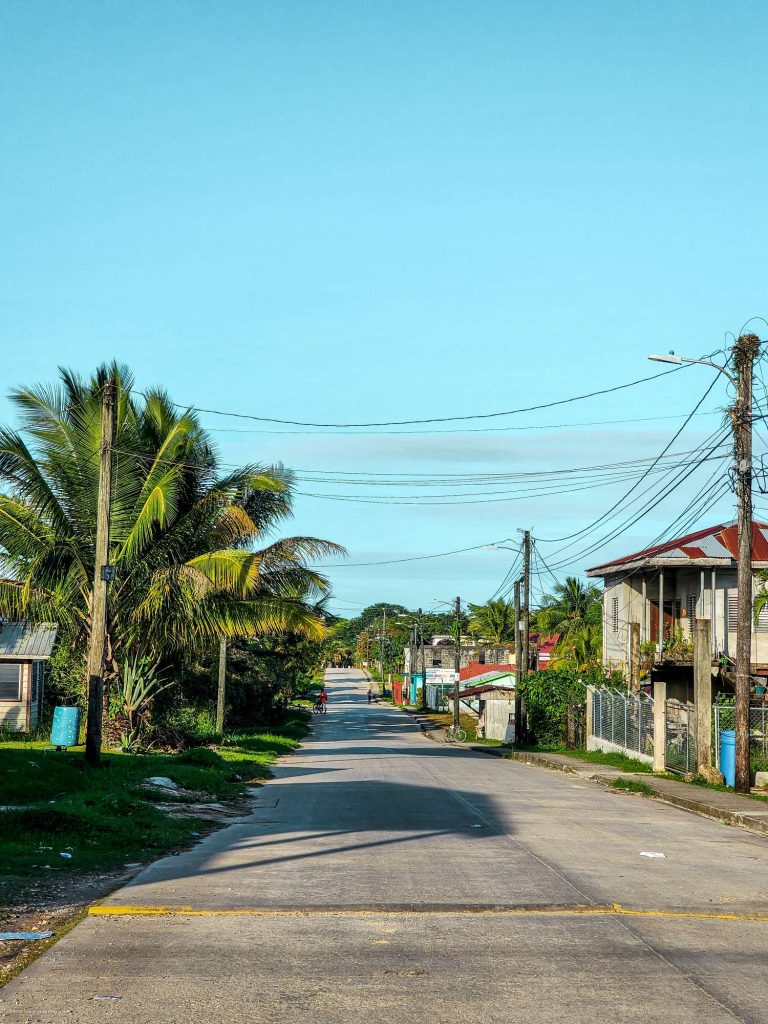
How to go from Livingston to Punta Gorda, Belize?
It’s important to note that boat trips may be affected by weather conditions, or public holidays (I couldn’t cross the border on 1st Jan because there was 0 boat running that day).
Solo border crossing from Guatemala to Punta Gorda Belize for more details.
- Simply go to the ticket booth at the pier in Livingston and book the next boat to Punta Gorda. It’s recommended to book your trip in advance to ensure availability.
- Alternatively, you can book your boat trip once you have found a boat operator online or in person in town. I found one online but there was not much difference in price roughly about 10 Q less but decided to stick with the ticker booth at the pier.
- The boat trip takes approximately 1-2 hours and offers scenic views of the coastline. The boat can accommodate up to 20 passengers and may depart in the morning or afternoon or every few hours depending on the seasonality.
- During the boat trip, you can enjoy the stunning views of the Caribbean Sea and the surrounding landscape.
- Once you arrive in Punta Gorda, go through the immigration office at the dock. Fill out the immigration form (if you are an Australian citizen no need to pay anything.) and from there, you can explore the town and its attractions, such as the market, the waterfront, and the nearby Mayan ruins.
The direct boat service from Livingston to Punta Gorda offers a unique and memorable way to travel and explore Belize’s coastline.
Which hostels to stay in?
There are several hostels in Punta Gorda, Belize that you can consider staying at. Here are a few options:
- The Sea Front Inn: This hostel is located on the seafront and offers dorms and private rooms. It has a communal kitchen and lounge area, as well as a restaurant and bar.
- Saint Charles Inn: This hostel offers private rooms and dorms with shared bathrooms. It has a communal kitchen and lounge area, as well as a garden and outdoor seating area.
- BlueBelize B&B: This hostel offers private rooms and dorms with shared bathrooms. It has a communal kitchen and lounge area, as well as a restaurant serving Italian and Belizean cuisine.
It’s always a good idea to check reviews and ratings from other travelers to help you choose the best hostel for your needs and preferences.

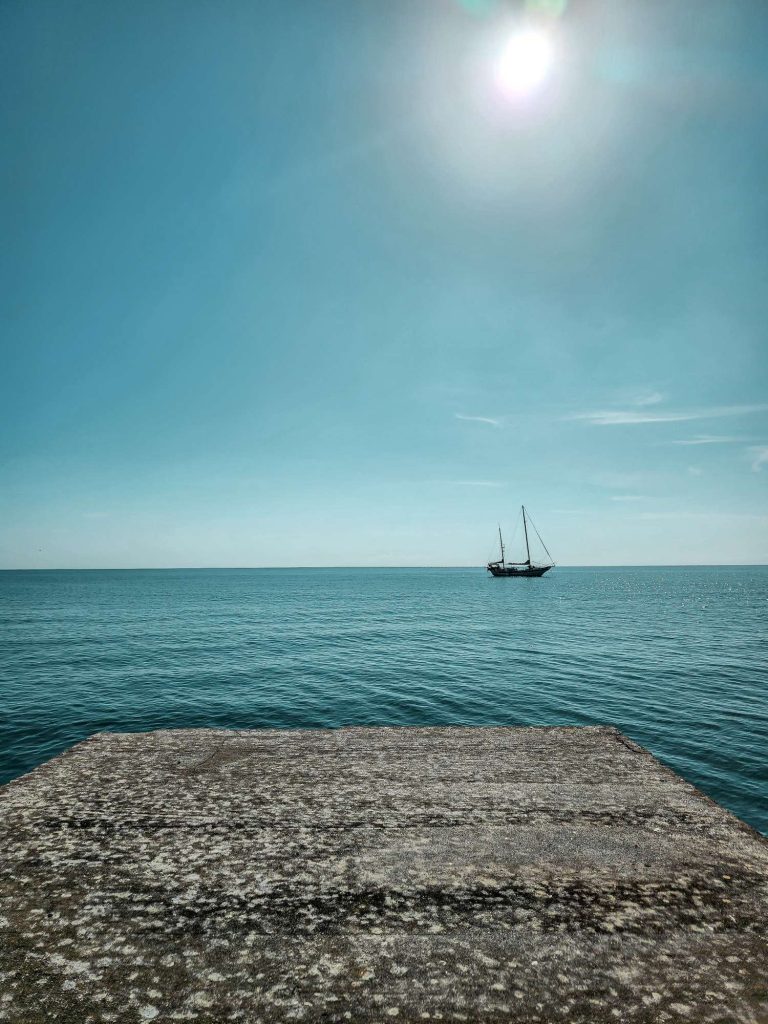


Where to eat?
Punta Gorda, Belize offers a variety of dining options, ranging from local street food to international cuisine.
When I visited it was the New years holiday so almost every restaurant was closed apart from 1 and 2 below. The town was actually dead! Videos and pic on my Belize Instagram highlights.
- Grace’s Restaurant: This restaurant was clean and I got to try the famous Belize fired Jackfruit! (Pic 1) This is what locals eat for breakfast here btw! Too heavy but too good not to eat! They have air conditioning and an extensive menu.
- Caribbean Colors Art Cafe: This restaurant offers a Caribbean-inspired menu with dishes such as jerk chicken, conch fritters, and seafood gumbo. They also have vegetarian options and a selection of cocktails. (pic 3)
- Barracuda Bar and Grill: This waterfront restaurant serves Caribbean and international cuisine, including seafood, burgers, and salads. They also have a bar with a variety of drinks.
- Juntos Restaurant and Beach Bar: This restaurant is located on a beautiful beach and offers Caribbean and international cuisine, including fresh seafood, jerk chicken, and coconut rice. They also have a selection of cocktails and beers.
- Belize Spice Farm and Botanical Garden: This restaurant is located on a spice farm and offers a Caribbean-inspired menu with dishes such as coconut shrimp, curried goat, and plantain chips. They also offer tours of the spice farm and botanical garden.
I hope these recommendations help you find some delicious Caribbean cuisine in Punta Gorda!
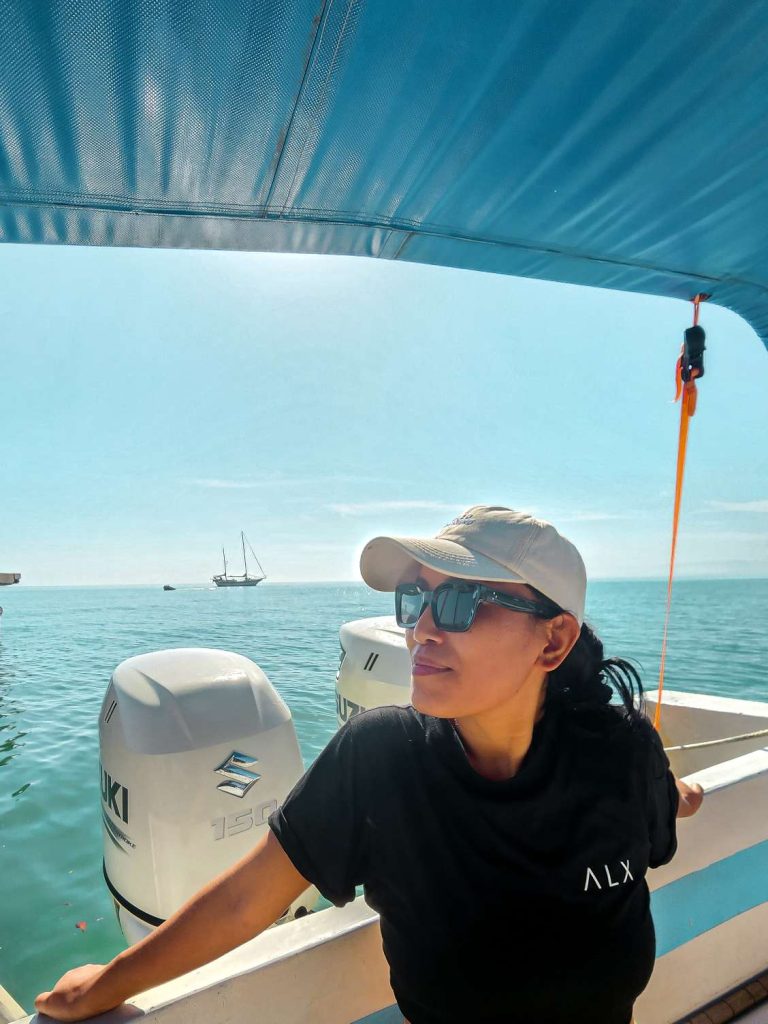

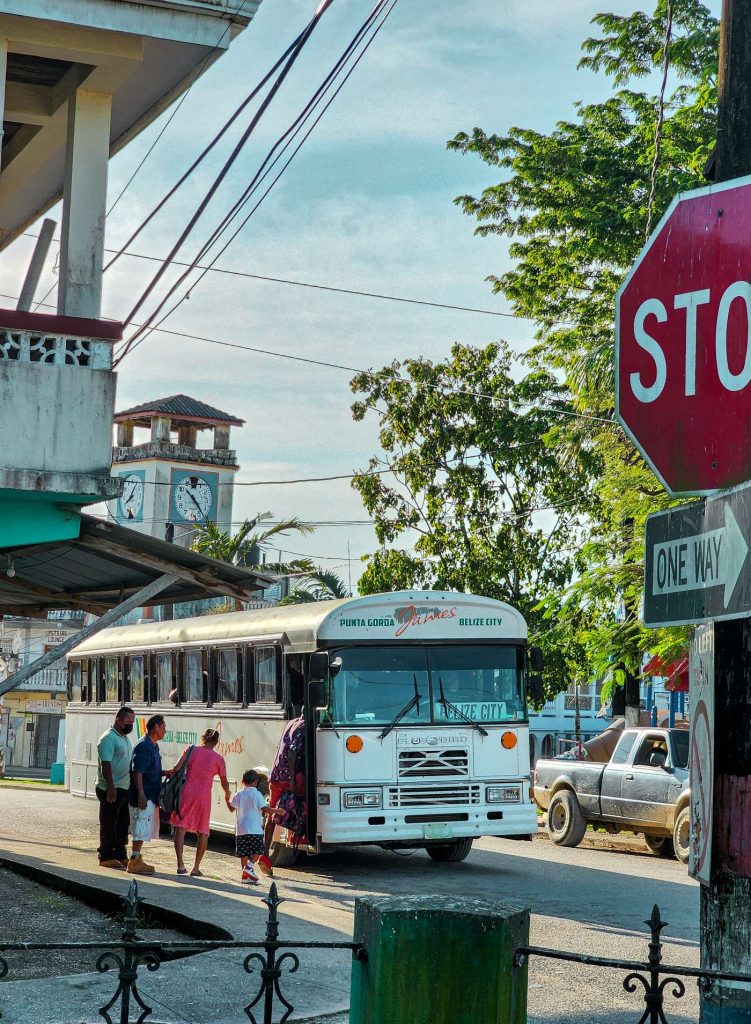
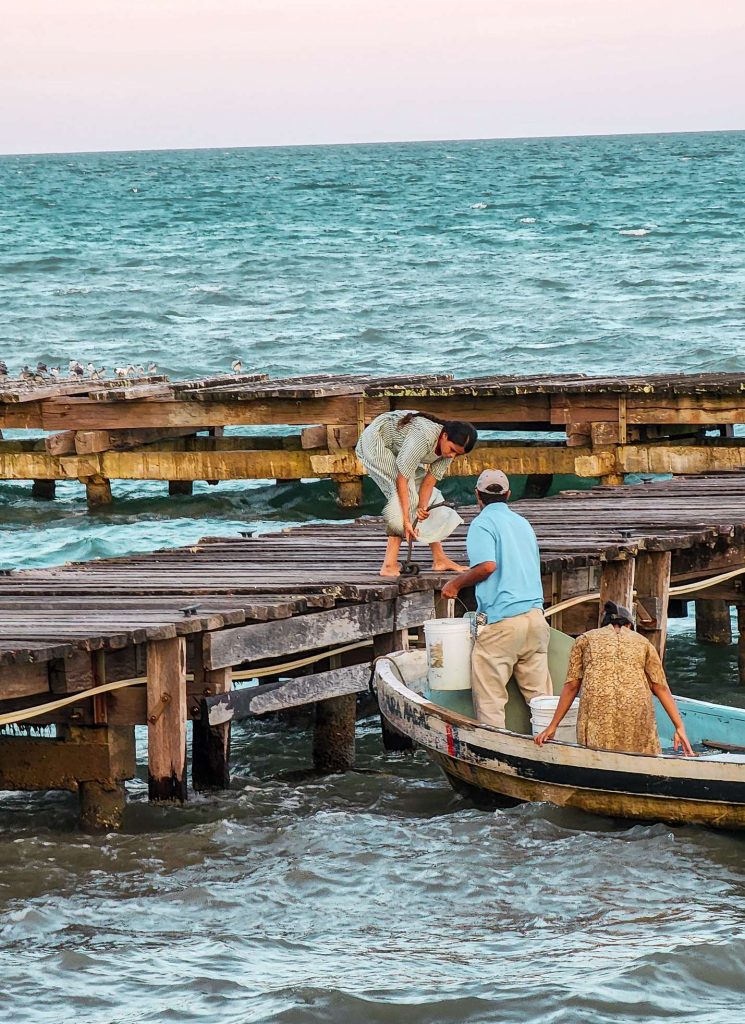
Things to do in Punta Gorda
It is a small town so not much to do in the town itself but there are half to full-day trips that can be easily accomplished.
- Visit the Nim Li Punit Mayan Ruins: Nim Li Punit is an ancient Mayan site located about 40 minutes outside of Punta Gorda. It’s known for its well-preserved stelae and carvings. You can take a guided tour or explore on your own.
- Explore the Rio Blanco National Park: This park is located about 30 minutes from Punta Gorda and features waterfalls, swimming holes, and hiking trails. You can also spot wildlife such as monkeys, toucans, and parrots.
- Visit the Toledo Chocolate Factory: This chocolate factory is located in Punta Gorda and offers tours where you can learn about the process of making chocolate from cacao beans.
- Take a Garifuna Drumming Lesson: The Garifuna are an indigenous group in Belize with a rich cultural heritage. You can take a drumming lesson and learn about their music and dance traditions.
- Independence, Mango Creek, and Placencia: In the town of Punta Gorda, in front of the immigration office is a Police station, and next to it is a bus office called the “James bus line”. They run buses from Punta Gorda to Independence. Once you arrive in Independence, find a bus heading to Mango Creek, and from there, you can take a taxi or another bus to The Placencia Peninsula. The journey takes approximately 2-3 hours from Punta Gorda to Independence and 30-45 minutes from Independence to Mango Creek. Taxis are available to take you to The Placencia Peninsula, or you can take a bus and ask to be dropped off at any of the nice beaches in Placencia.
3. Honduras (3 Days 2 Nights)
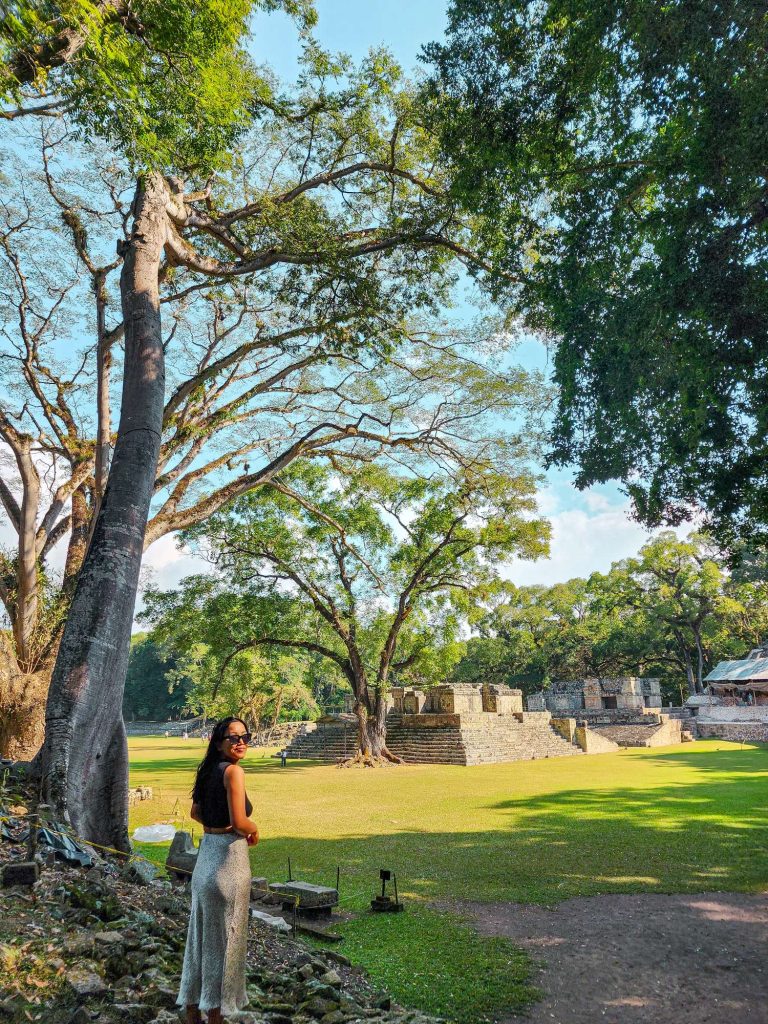
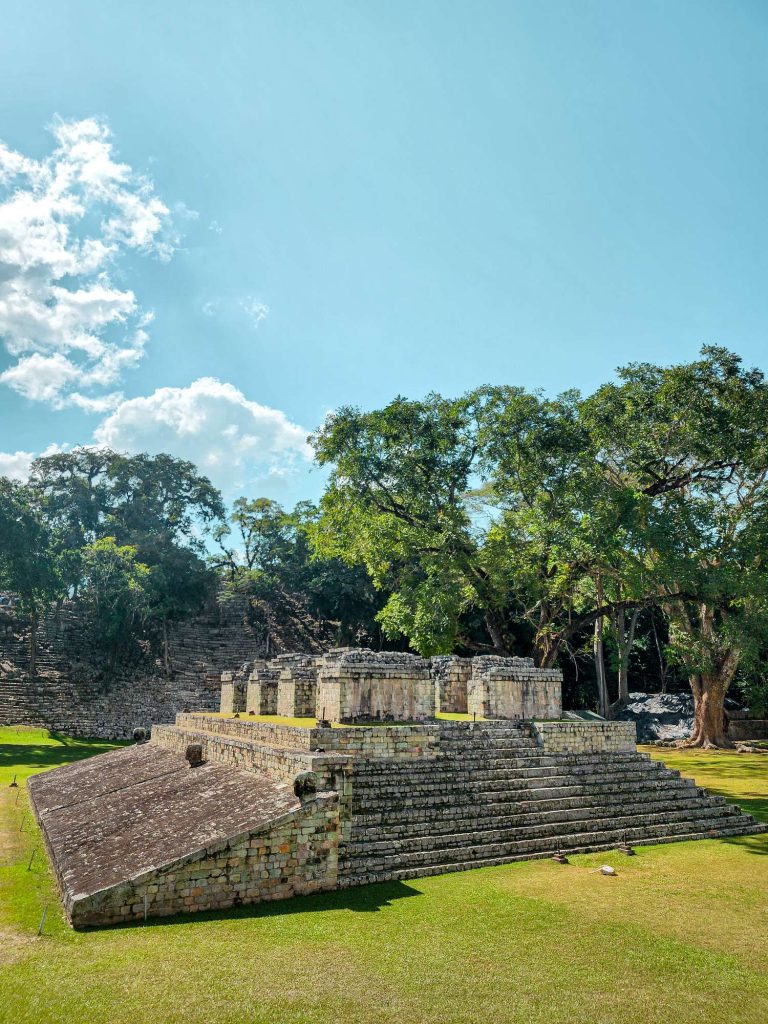
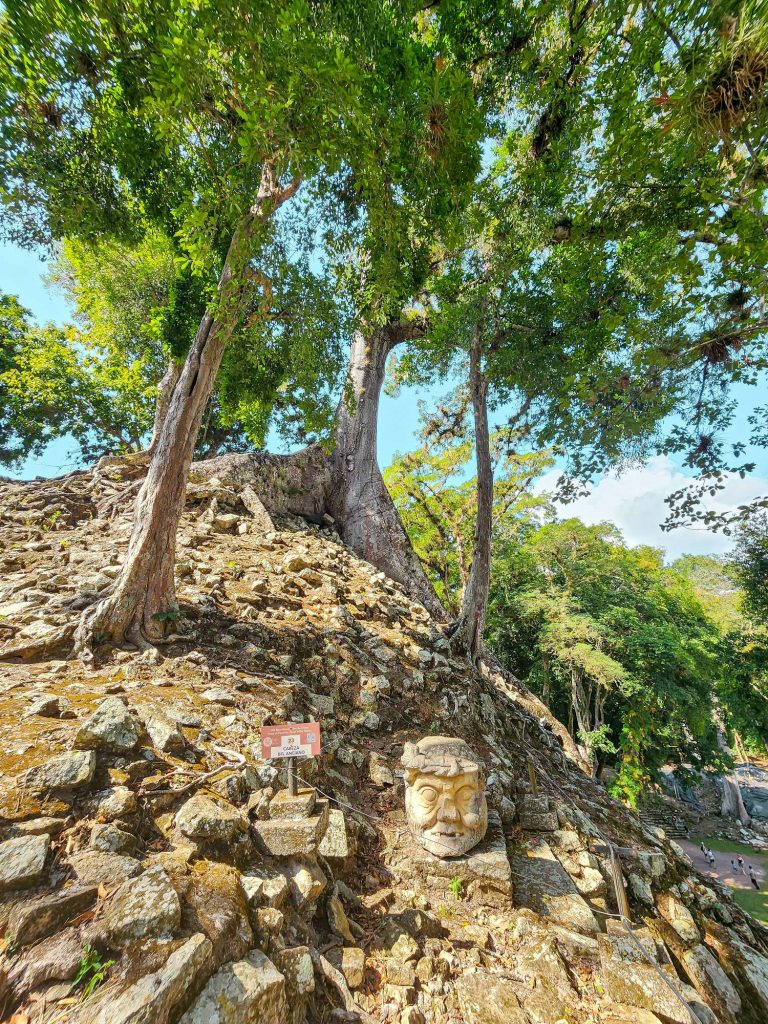
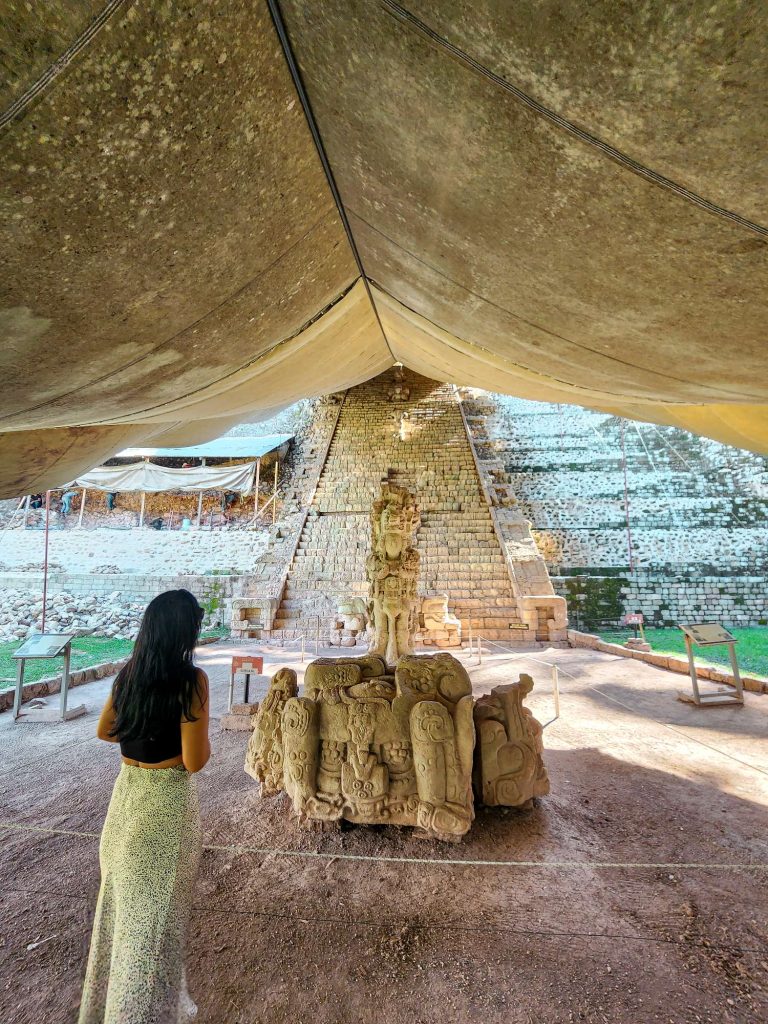
Honduras is a country located in the heart of Central America. It is bordered by Guatemala to the west, El Salvador to the south, Nicaragua to the east, and the Caribbean Sea to the north. It is known for its stunning coral reefs, and diverse landscapes, including mountains, forests, and beaches. Roatan, an island off the coast of Honduras, is a popular destination for divers due to its clear waters and abundant marine life. That said, if you are following this travel blog you know I don’t dive so my plan was to see my first-ever Mayan ruins in Copan. (more on that below)
However, Honduras is also considered one of the most dangerous countries in Central America due to high levels of crime, including gang violence and drug trafficking. The smart traveller Australian government website and U.S. State Department both have issued travel advisories warning visitors to exercise increased caution when traveling to Honduras, particularly in urban areas and along the borders with Guatemala, El Salvador, and Nicaragua.
Despite the risks, Honduras remains a popular destination for adventure travelers and those seeking to experience the rich culture and natural beauty of Central America.
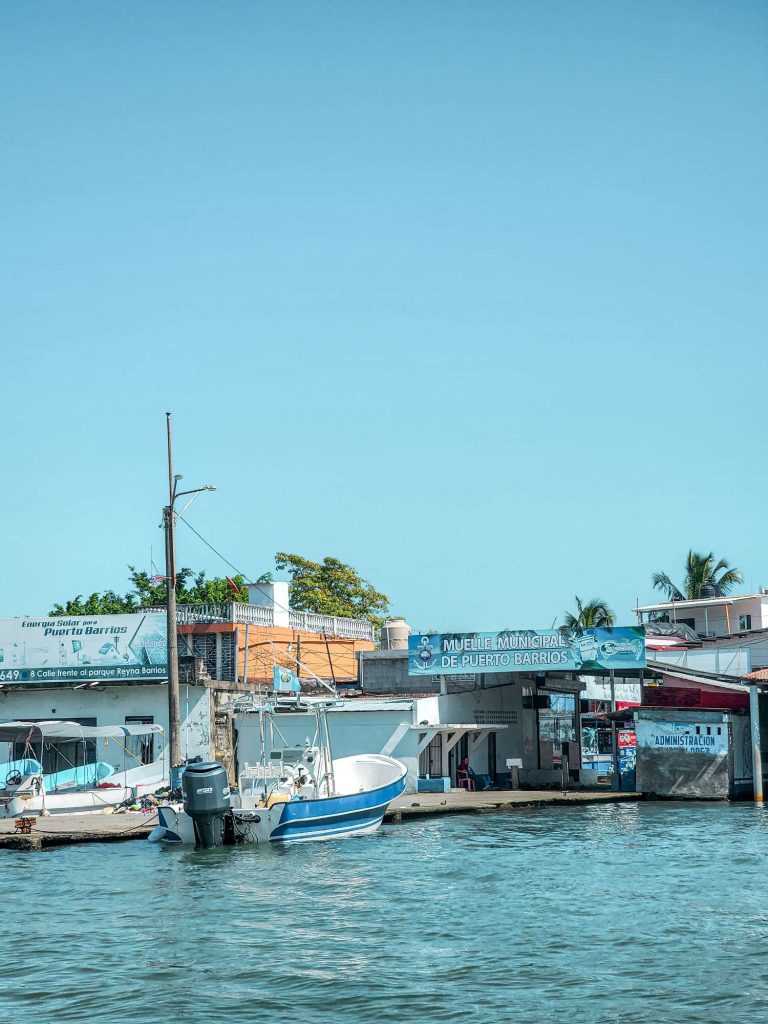
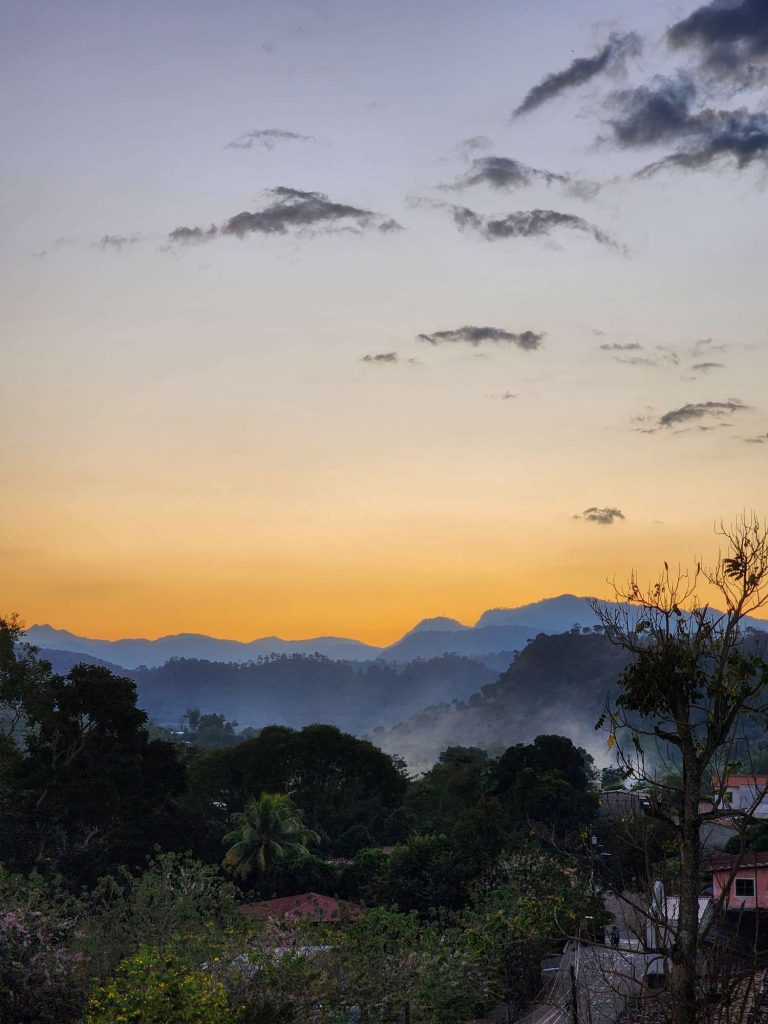

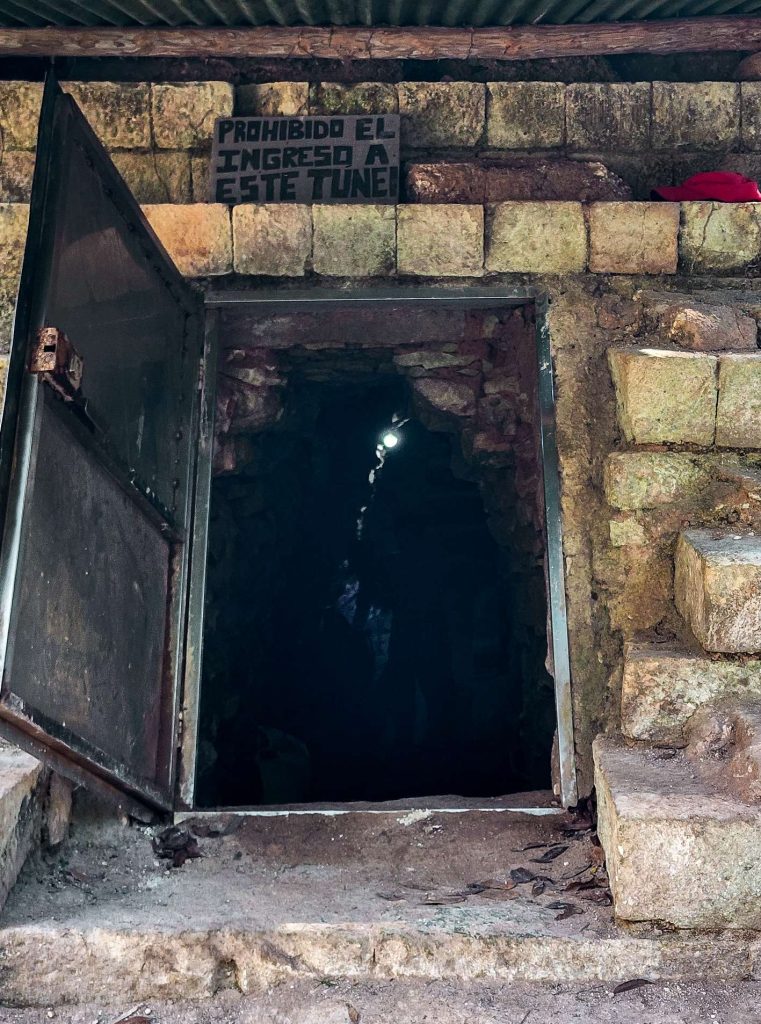

How to go from Punta Gorda, Belize to Copan Ruins, Honduras?
After days of dilemma, in the end, I chose not to be on the open water for too long (going from Punta Gorda to Puerto Cortes over Ocean and taking the bus to San Pedro Sula (the place everyone warns you about) then changing bus to Copan Ruins). I’m positive if you travel during the day and keep your wits about you that route would be fine (also Putero Cortes could be a starting point to get to the bay islands if you are into diving) but I decided to play it safe and travel through Guatemala again to enter Honduras.
This one is a long trip so I strongly recommend starting early. First, I went from Punta Gorda, Belize to Puerto Barrios, Guatemala then by bus to Copan ruins, Honduras.
I found two ferry companies that operate between Punta Gorda, Belize, and Puerto Barrios, and the one I used is called Requena’s Charter. They were really easy to deal with and you could also buy the ticket in half BZD, Q, or USD. (Also good communication in Whatsapp)
While in Punta Gorda, Belize go to Requena’s Charter office (they’re on google maps), the day before or before 8:30 am in the morning if you want to leave Belize the same day. They sell the boat ticket at the office to Puerto Barrios.
The boat journey takes around 2-3 hours ( we left at 930 and arrived at 11 am ish), depending on the weather conditions, and their schedules can vary. So it’s best to check their company’s website or contact them directly for the latest information on schedules and fares.
For your interest, I paid 81 BZD = 300 Q (Jan 2023) for the boat
Then from Puerto Barrios to Copan Ruins, the bus was 22 USD or about 540 Honduran Lempira.
Here’s how you can get to Copan Ruins from Puerto Barrios
Before they stamp you OUT of Belize at the dock, there is an exit fee that needs to be paid 20 USD but you don’t have to pay if you are there for only 24 hours.
And once you land at the dock of Puerto Barrios, don’t forget to stamp IN at the Guatemala immigration office.
As you walk out of the ferry dock, head left and straight. I remember there was a sign along the way that said “inmigración” which is immigration in Spanish. Have your passport stamped and from there head to the bus stop which is a quick 5mins walk. Apologies as I don’t have the exact immigration office location nor the bus stop address but I am positive if you ask on the boat they should be able to point you in the right direction or at the immigration office for the bus stop.
There are several bus companies that operate on the route from Puerto Barrios to Copan Ruins, including Hedman Alas, Fuente del Norte, and Linea Dorada. And you can buy the bus ticket at the bus stop ticket office. The fare for a one-way ticket can cost around $20 to $35 USD, depending on the bus company and the type of seat you choose.
However, in case the buses are all full don’t worry because, in front of the bus stop, there were many small buses running to Copan ruins also! The bus conductors shout “Copan Ruins” or other destinations so listen carefully.
Realistically the bus journey from Puerto Barrios to Copan ruins takes 8-10 hours so be prepared.
Alternatively, you can also hire a taxi or a private car from Puerto Barrios to Copan Ruins, which can be a more comfortable and convenient option but can also be more expensive.
Another option is, you take a shuttle service that operates from Puerto Barrios to Copan Ruins. The shuttle service usually includes door-to-door transportation, with pickups from your hotel in Puerto Barrios or at the bus stop (pls enquire) and drop-offs at your hotel/hostel in Copan Ruins.
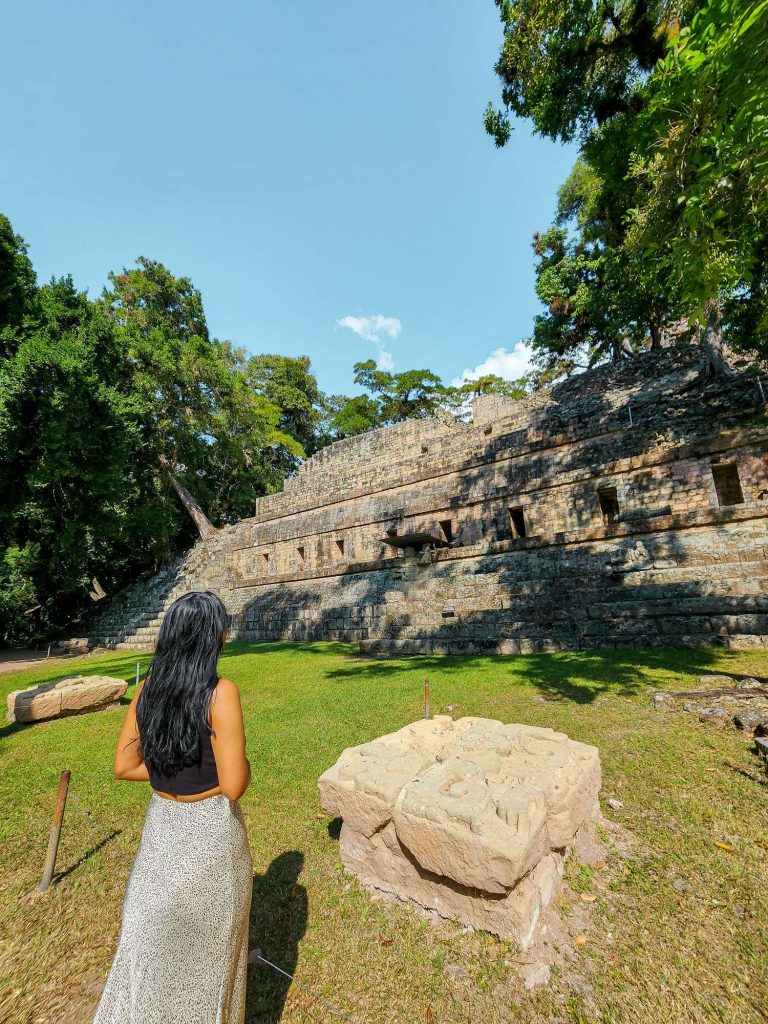
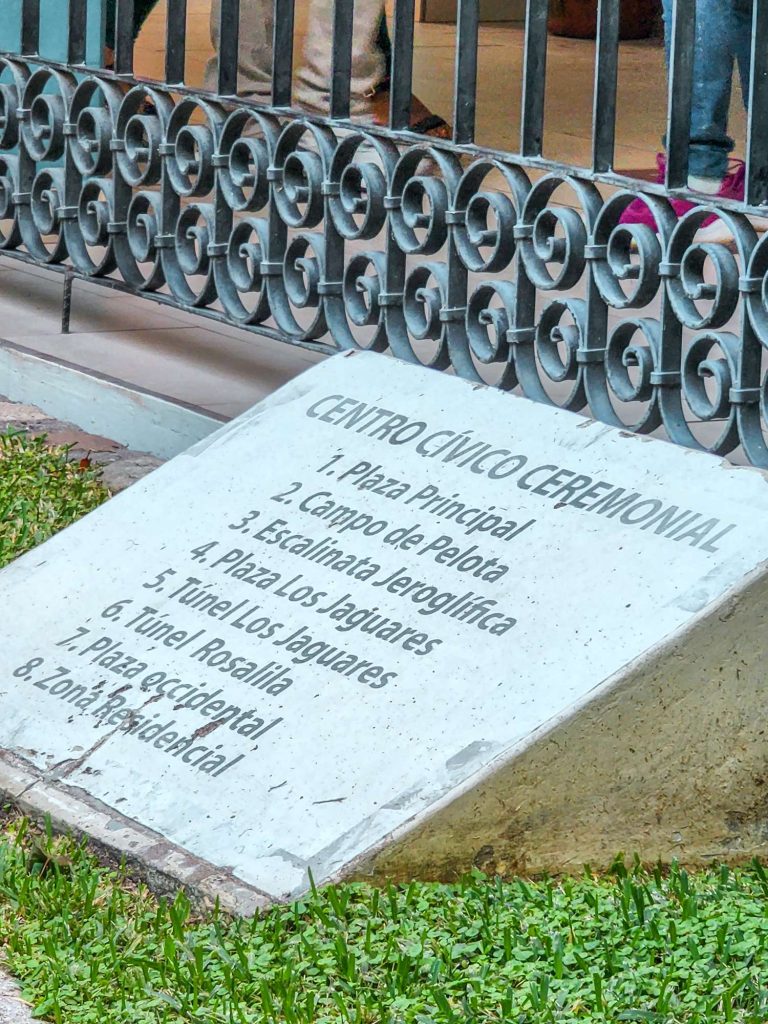

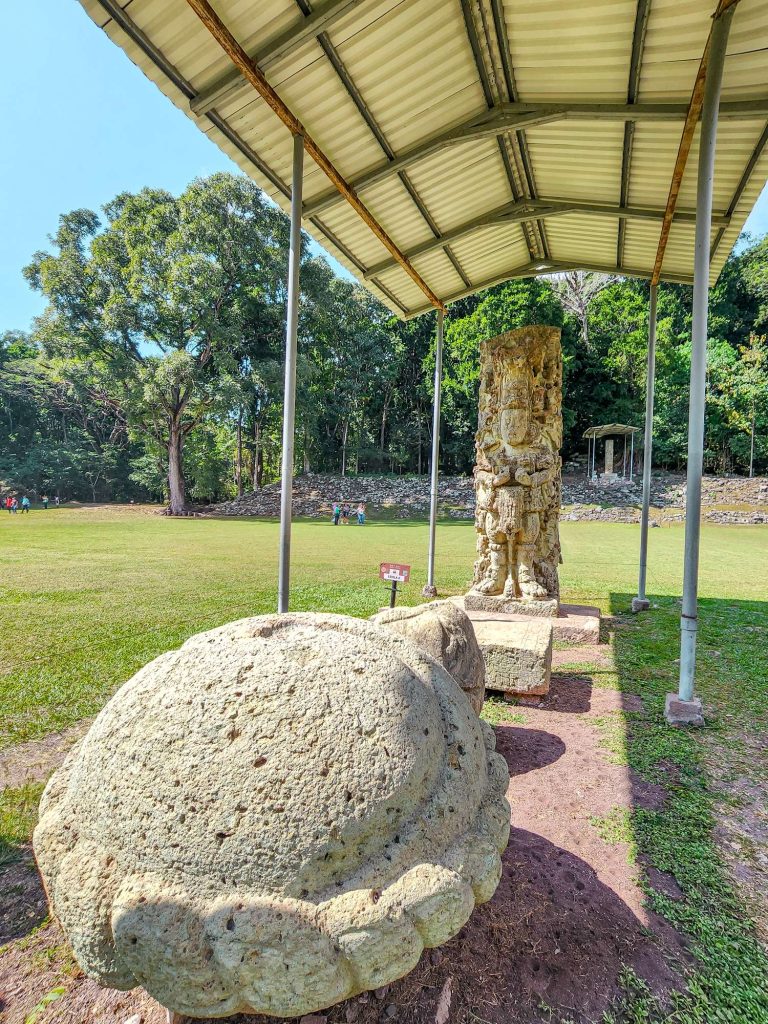
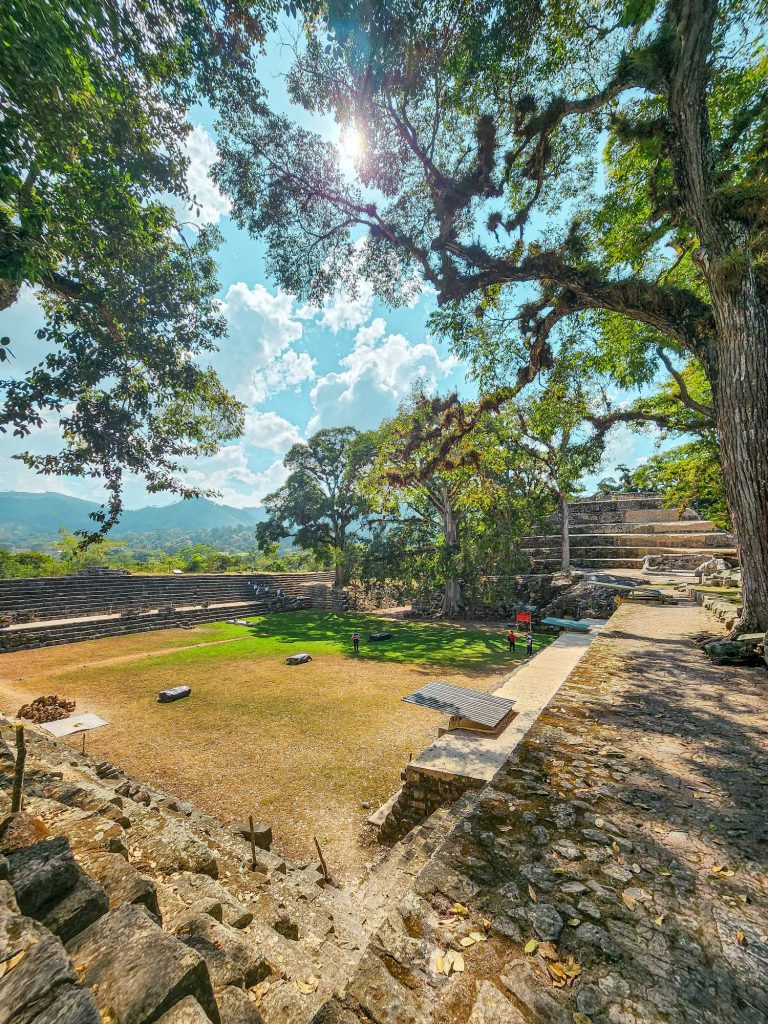
Is Honduras safe for solo travellers?
First of all, let’s establish the understanding of (solo) traveling is brutality! It forces you to trust strangers and to lose sight of all that familiar comfort of home and friends. You are constantly off balance. Nothing is yours except the essential things – air, sleep, dreams, the sea, the sky – all things tending towards the eternal or what we imagine of it. If you are okay with it, you will adapt, and you will survive.
I still remember the night before I was planning to enter Honduras I was rereading my notes on every step I had to take to enter the country, and due to relentless press and negative media about the place, I was feeling anxious about this whole trip.
But the next day on the boat I met a friendly British ex-pat daughter and father, their family living in Belize (btw they offer volunteering positions in their eco house if you are interested lmk) and she went to school in Honduras! What are the chances hey! If anything I was thinking maybe bumping into fellow travelers but this was even better as they had done this route several times in the past which meant I was with the Pros!
That just goes to show that step number 1 in achieving anything you want is to show up, first.
In addition to that, during my stay in Copan ruins, people at my hostel, locals at the shops, exploring around town and also in buses, I encountered friendly and kind local Hondurans only. Maybe I was lucky? I don’t know but my collective memory of Honduras is a feeling of happiness that I got to visit this country and never once felt in danger.
So yeah unless there is a drastic change in the country’s political situation, pandemic, or some natural disaster it is safe to travel to Honduras. Just remember to apply the general rule of thumb. Such as
- Stay in well-lit areas/ don’t walk down that dark alleyway on your own
- Avoid large crowds
- Don’t carry too much cash or valuables
- Stay aware of your surroundings
- Keep important documents in a locker at the hostel/hotel
- Carry a printed copy of your ID/passport
- Respect the culture
- Don’t argue about religion
- Dress modestly
- Trust your instincts, and don’t be afraid but be cautious.
With proper planning and caution, you can enjoy the many attractions that Honduras has to offer.
Which hostels to stay in?
There are several options for accommodation in the area, including hotels, hostels, and guesthouses. Here are a few other popular choices including the first one i stayed at:
- Hostel Iguana Azul – This hostel has tons of positive reviews and has backpacker-friendly costs as the other 3.
- Hotel Don Moises – It’s centrally located and run by a family who is very helpful and responsive on Whatsapp.
- Hotel Brisas de Copan – Hot water in the shower, good WiFi, and also close to ruins.
- Berakah B&B- Central Park – Right in the center, rooms with fans and AC, so you can use whichever you prefer

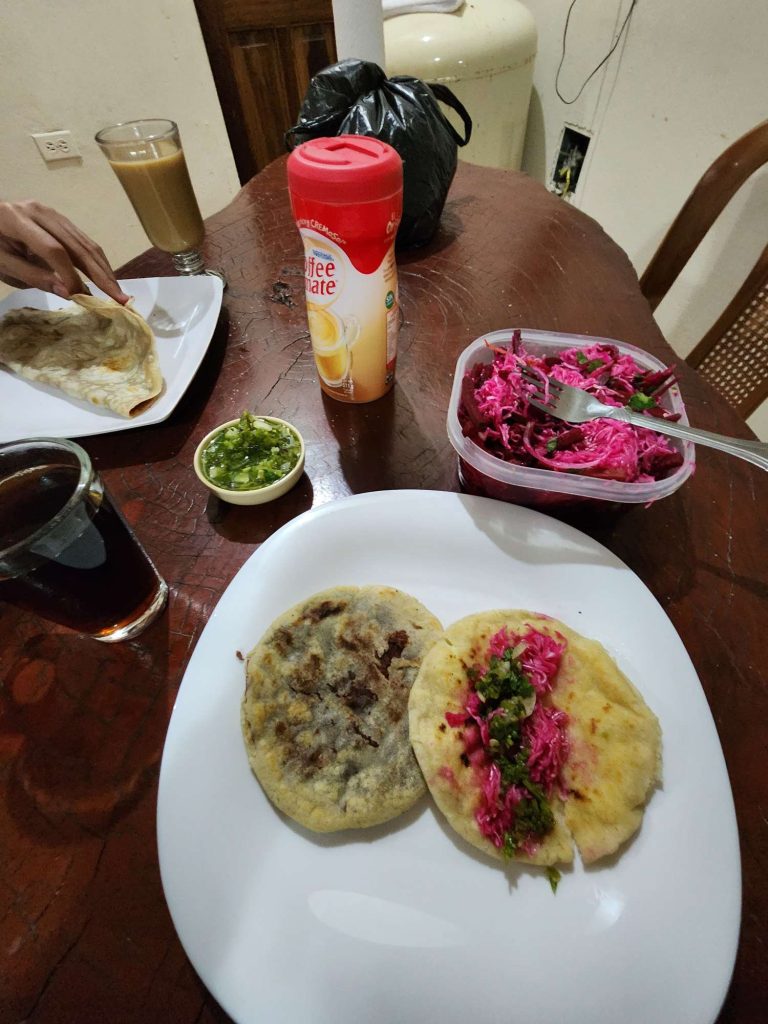
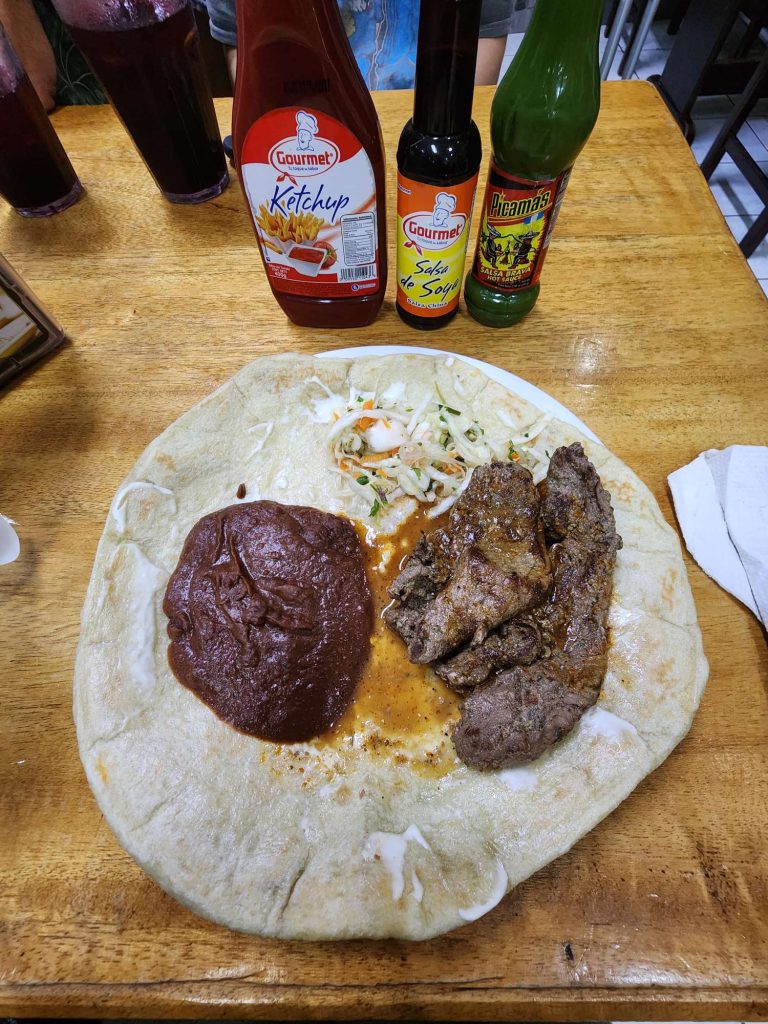

What to eat?
Honduran cuisine is a blend of indigenous, African, and Spanish influences, and offers a unique taste experience. Some popular dishes include:
- Baleadas: A traditional Honduran dish made with flour tortillas, beans, and cheese.
- Sopa de Caracol: A seafood soup made with conch and coconut milk.
- Tamales: Corn masa stuffed with meat, vegetables, and sometimes cheese, wrapped in plantain leaves and steamed.
- Plato Tipico: A traditional Honduran dish consisting of rice, beans, plantains, and a choice of meat, usually chicken or beef.
- Pastelitos: Fried empanadas filled with meat, beans, or cheese.
Local Customs and Traditions:
Honduras has a unique blend of indigenous, African, and Spanish cultures that have influenced its customs and traditions. Some examples of local customs and traditions in Honduras include:
Honduras is a country full of surprises and adventure. As a solo traveler, you will have the opportunity to explore some of the most breathtaking destinations in Central America, including ancient Mayan ruins, pristine beaches, and lush rainforests.
- Garifuna Culture: The Garifuna people are descendants of West and Central African, Carib, and Arawak people who settled in Honduras in the 18th century. They have their own language, music, and dance traditions that are still practiced today. Some popular Garifuna festivals include the Punta music festival and the Dugu festival.
- Mayan Culture: Honduras is home to many ancient Mayan ruins, such as Copan, that offer insight into the country’s rich history. Mayan traditions and beliefs are still evident in some rural areas of Honduras, including traditional clothing, food, and religious practices.
- Semana Santa: Holy Week or Semana Santa is a week-long religious celebration that takes place in Honduras. This is an important time of the year for Hondurans, and many participate in processions, attend church services, and perform acts of charity.
By incorporating all these elements into my blog, I hope you can gain a better understanding of the local customs, traditions, and cuisine of Honduras, and feel more prepared for your travels.
Highlights in Honduras
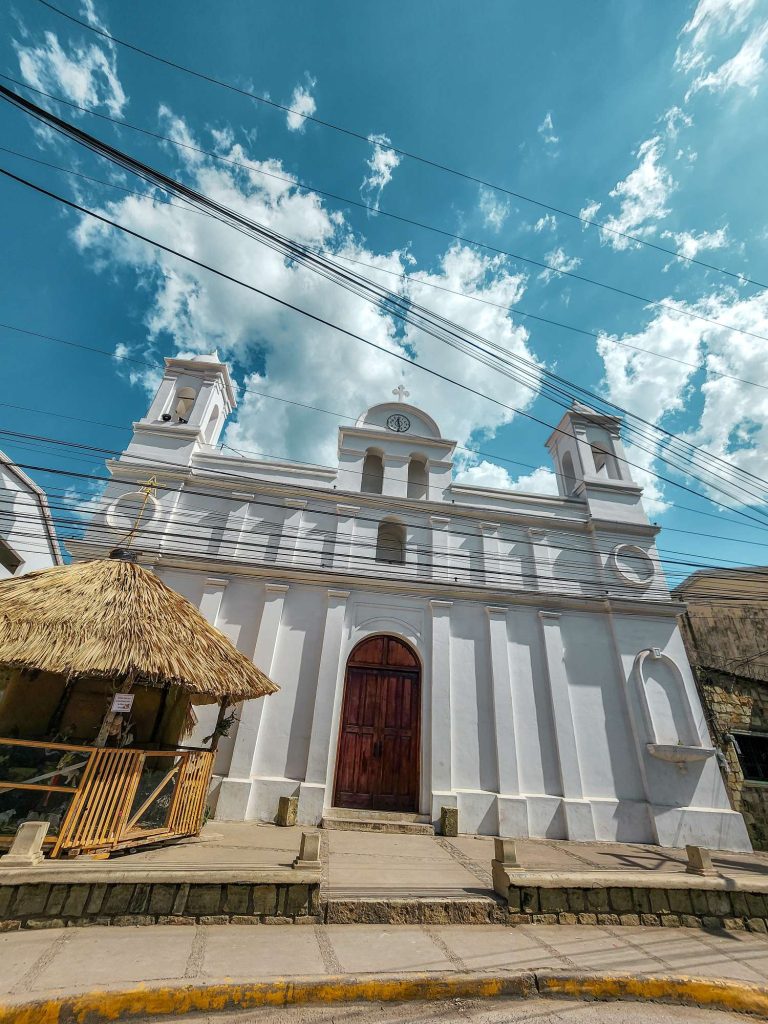
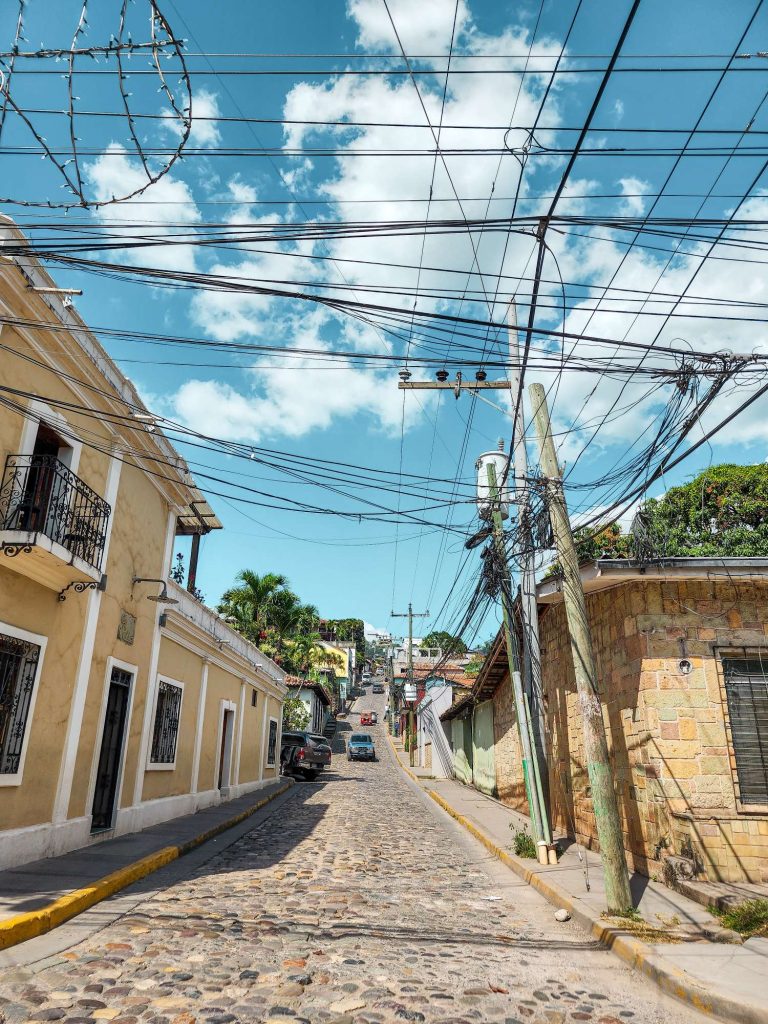
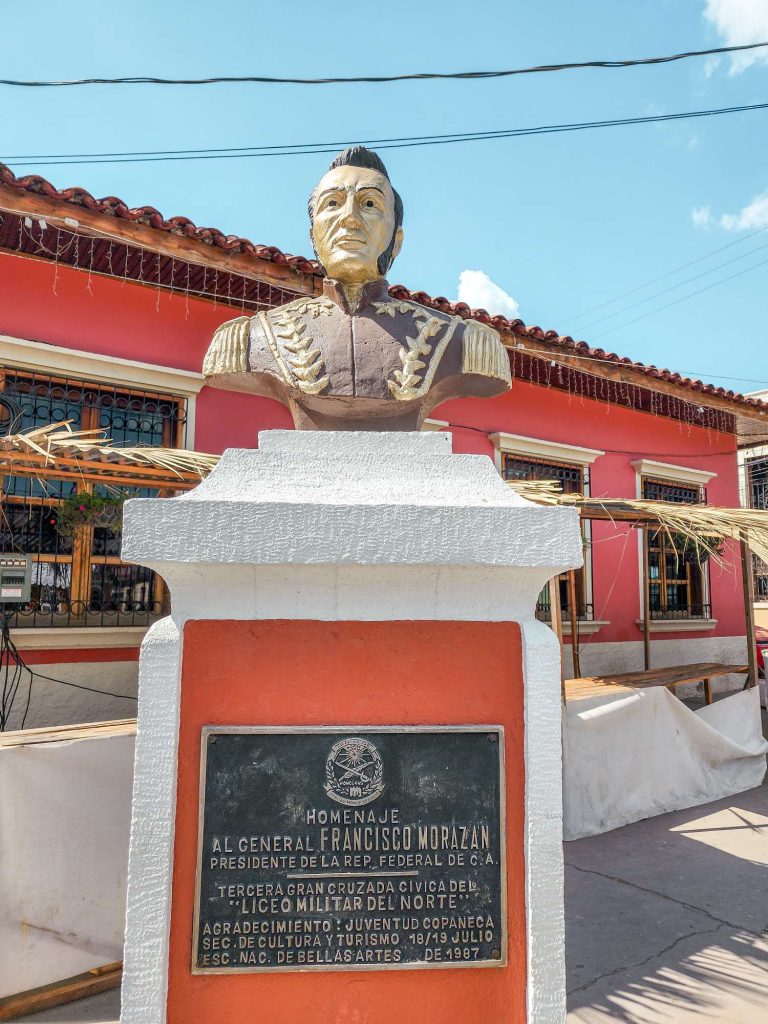
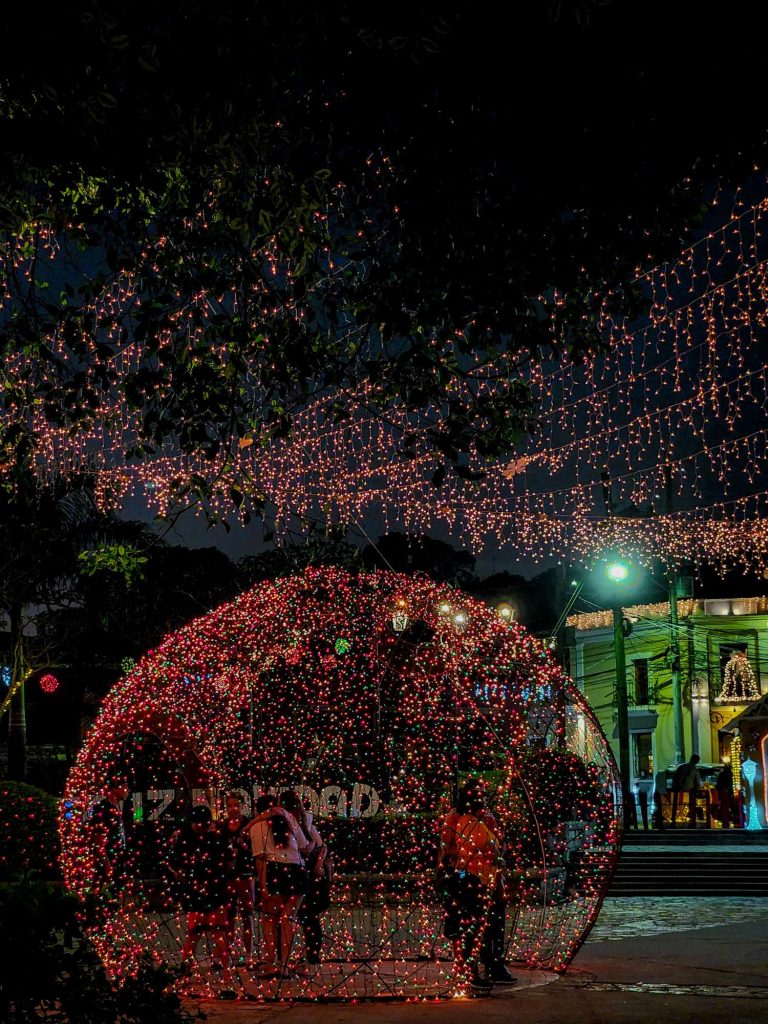
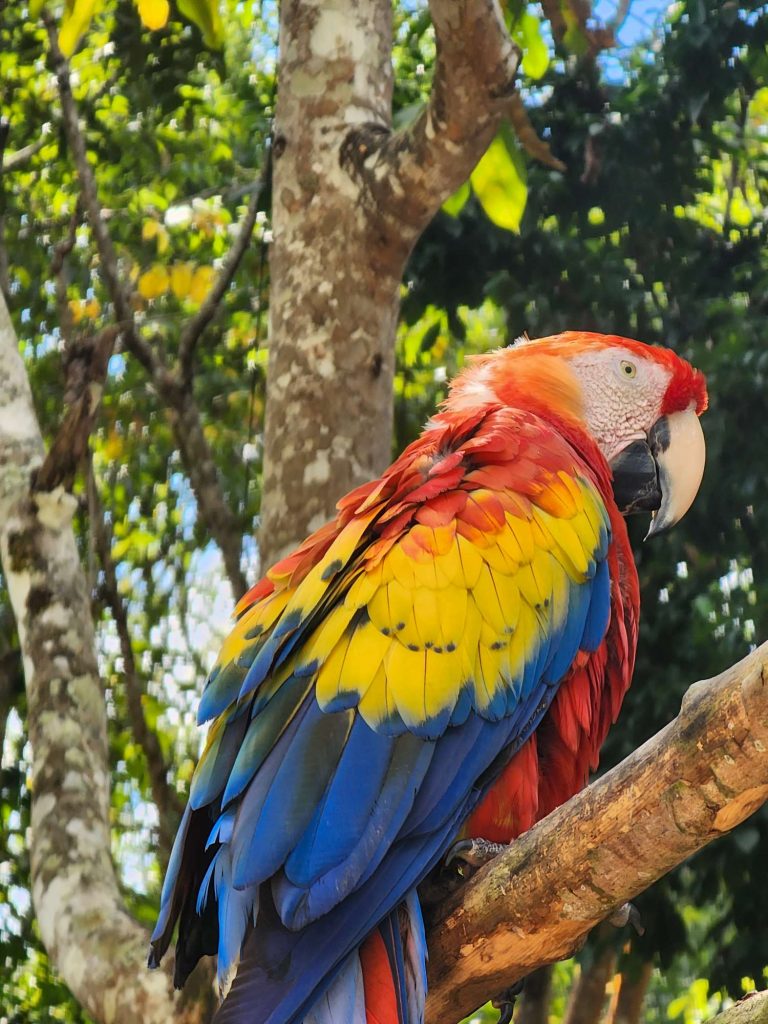
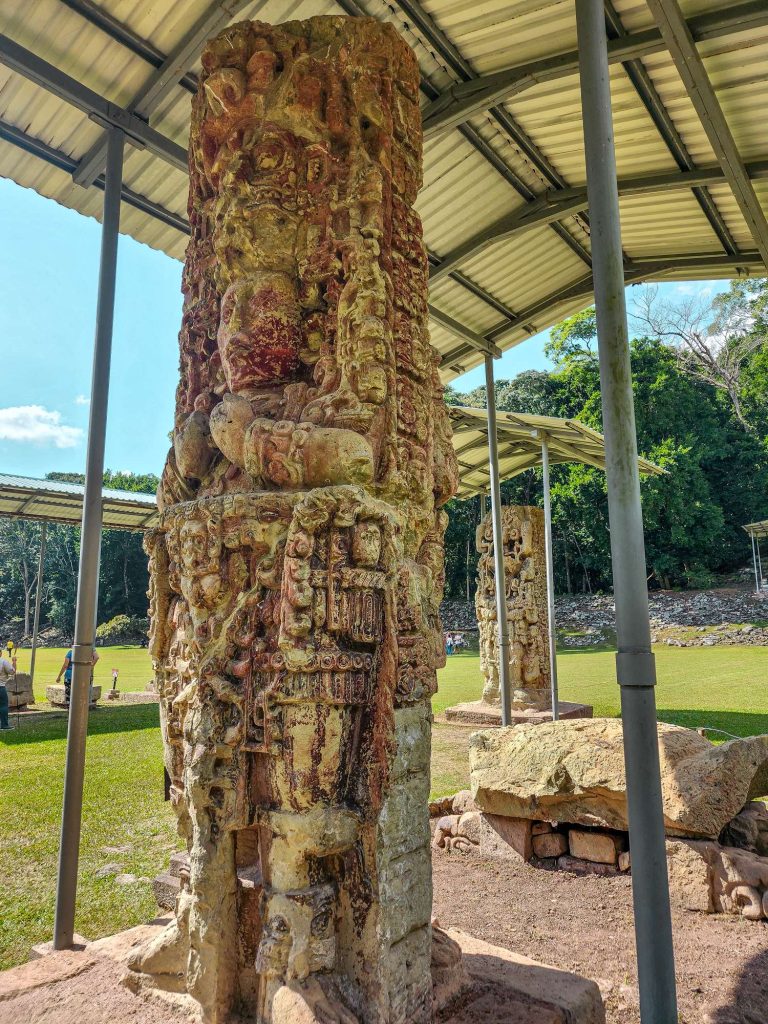

1. Copan Ruins
Copan Ruins is an archaeological site located in western Honduras, near the border with Guatemala. The ruins are considered one of the most important Mayan sites in Central America and are recognized as a UNESCO World Heritage Site. They are famous for their intricate stone carvings and sculptures that depict the lives and mythology of the ancient Maya civilization.
The site of Copan Ruins dates back to the 5th century AD when the Maya civilization was at its height. The city was an important center of culture, trade, and political power in the region, and it reached its peak between the 7th and 9th centuries. The city was eventually abandoned, and the ruins were hidden by the jungle for centuries until they were rediscovered in the 19th century.
The main structures of Copan Ruins are the Acropolis, the Great Plaza, the Ball Court, and the Hieroglyphic Stairway. The Acropolis is a complex of buildings that served as the political and administrative center of the city. The Great Plaza is a large open space that was used for ceremonies and public gatherings. The Ball Court was used for a traditional Mayan game that was played with a rubber ball, while the Hieroglyphic Stairway is a monumental staircase that has inscriptions of over 1,000 hieroglyphs, making it the longest known Mayan text.
One of the most interesting aspects of Copan Ruins is its intricate stone carvings and sculptures. The carvings depict the rulers of Copan and their families, as well as mythological beings and scenes from everyday life. The sculptures are made of stone and are incredibly detailed, often depicting animals, such as jaguars and birds, and various gods and goddesses.
Visitors to Copan Ruins can explore the site on foot and see the impressive structures and carvings up close. There are also a number of museums and interpretive centers that provide information about the history and culture of the Maya civilization.
If you’re interested in visiting Copan Ruins, there are a few things to keep in mind. The site is open daily from 8 am to 4 pm, and the entrance fee is $15. It is recommended to hire a local guide who can provide insights into the history and culture of the site. The best time to visit is during the dry season, which runs from November to April, as the site can be difficult to navigate during the rainy season. Finally, be sure to wear comfortable shoes and bring plenty of water and sunscreen, as the site can be hot and tiring to explore.
These places below come recommended as well
2. Gracias
Gracias is a charming colonial town situated in western Honduras, founded by Spanish conquistadors in 1536. It served as the capital of Honduras until 1880 and is now renowned for its picturesque cobblestone streets, colorful houses, and historic landmarks. The town is surrounded by verdant mountains and offers stunning views of the countryside.
You can explore attractions such as Gracias Historic Center: A UNESCO World Heritage site, Celaque National Park, Lenca Trail, the San Cristobal Fort, soak in hot springs and natural pools and participate in outdoor activities like hiking, bird watching, and river rafting. Gracias is also known for its traditional crafts and delicious local cuisine. The friendly and welcoming locals often gather in the central park, where live music and dancing take place.
If you’re coming from Copan Ruins, you can take a bus or hire a taxi for the approximately 4-hour journey. The route will take you through beautiful mountainous landscapes and allow you to experience more of the natural beauty that Honduras has to offer. Overall, Gracias is a must-visit destination that offers a glimpse into Honduras’ rich history, culture, and natural beauty, and is well worth the journey from Copan Ruins.
Pls check with the local bus station or terminal for schedules and fares. In Copan Ruins, the bus station is located on the main street, near the central park. You can also ask your hotel or hostel for assistance in arranging transportation. It’s always a good idea to confirm the schedule and price of the bus beforehand, as schedules can be subject to change and fares may vary depending on the time of day and the type of bus.
3. The Bay Islands – Roatan Island
The Bay islands are known for their stunning beaches, world-class diving, and laid-back Caribbean vibe. These islands are made up of three main islands – Roatan, Utila, and Guanaja – each with its own unique charm and attractions.
Roatan Island is a paradise for solo travelers who love snorkeling and diving. The island is located in the Caribbean Sea and is home to some of the most beautiful coral reefs in the world. You can explore the underwater world and swim alongside colorful fish, sea turtles, and even sharks.
There are plenty of activities to keep you busy on Roatan Island, including zip-lining, kayaking, and horseback riding. The island is also known for its vibrant nightlife, with plenty of bars and clubs to choose from.
4. Utila Island
Utila Island is another paradise for solo travelers who love water activities. It is located in the Bay Islands and is known for its stunning coral reefs, which are home to a diverse range of marine life. You can go scuba diving, snorkeling, or take a boat tour around the island.
Utila Island is also a great place to relax and unwind. You can enjoy the sun on one of the many beautiful beaches, or take a stroll through the colorful streets of the island’s main town.
5. La Ceiba
La Ceiba, on the other hand, is known for its lively Carnival celebration, which takes place in May and features colorful parades, music, and dancing. The city is also home to several beautiful beaches, including the popular Playa de las Palmas. It is a coastal city located in the northern part of Honduras, known as the eco-tourism capital of Honduras, and is home to some of the most beautiful natural attractions in the country. You can hike through lush rainforests, swim in crystal-clear rivers, and explore hidden waterfalls.
One of the most popular attractions in La Ceiba is Pico Bonito National Park, which is home to over 400 species of birds and a diverse range of flora and fauna. The park offers plenty of opportunities for hiking, birdwatching, and wildlife spotting.
FYI, The capital city of Honduras is Tegucigalpa, which is located in the southern part of the country. The city is home to some of the best museums and cultural attractions in the country, including the National Museum of Anthropology and History, which showcases the country’s rich history and cultural heritage.
4. El Salvador (3 Days, 2 Nights)

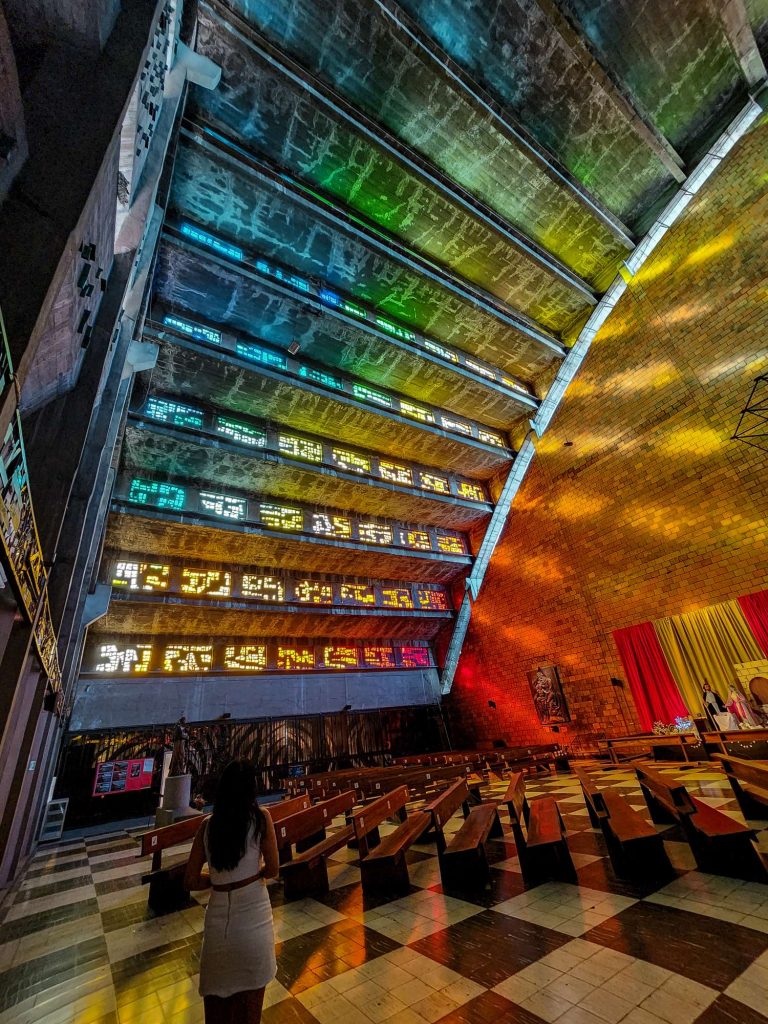
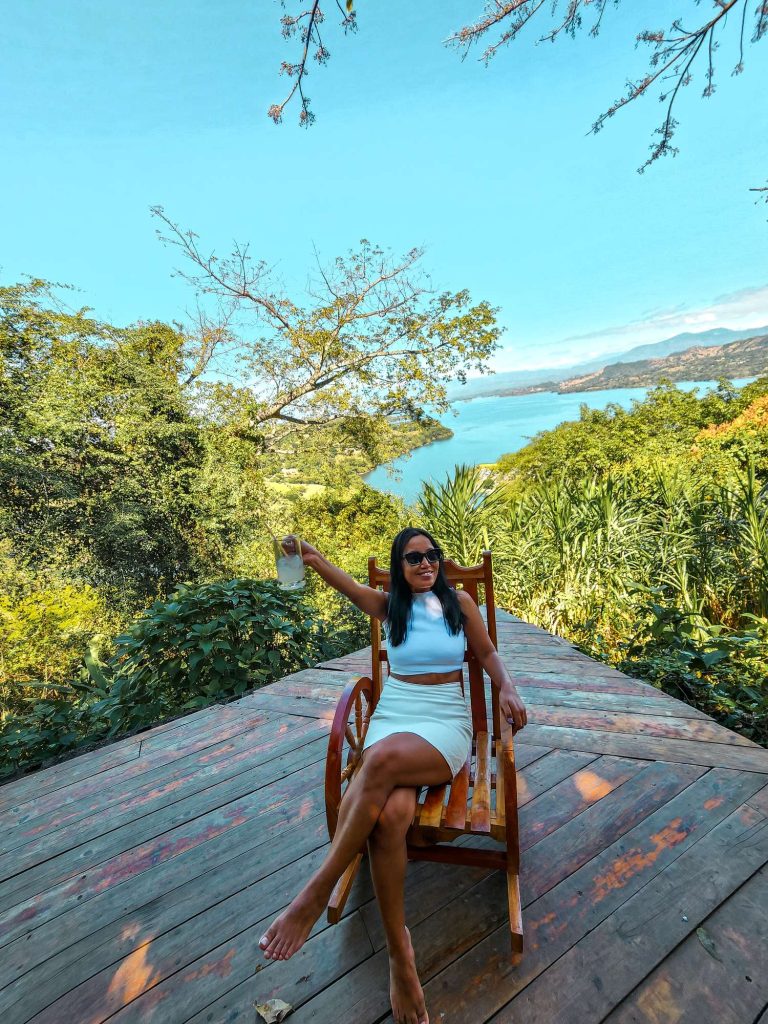
It is time to visit one of the lesser-known countries in Central America. If you’re planning a backpacking trip through Central America, El Salvador is definitely worth considering. As one of the smallest countries in the region, it offers a diverse range of attractions and activities that are perfect for solo travelers.
Most people visit Santa Ana in El Salvador but I skipped it because as mentioned above, my goal for this trip was to see something unique in all 7 countries. So that meant Volcano in Santa Ana wasn’t of interest as it fell under the already seen/done bucket.
So what different things do I see in El Salvador? I’ll elaborate on that below.
San Salvador, the capital of El Salvador, is a must-visit destination. This bustling metropolis boasts a mix of modern and historic architecture, including the stunning Metropolitan Cathedral and the National Palace. If you’re a night owl, you’ll love the vibrant nightlife scene with plenty of bars, clubs, and restaurants to choose from.
But El Salvador isn’t just about city life. The Ruta de las Flores, or “Flower Route,” is a scenic drive through several charming towns known for their colorful flowers and unique artisanal crafts. And if you’re a thrill-seeker, El Salvador has plenty of outdoor activities to offer, from hiking, and riding a bike on a zip line, to surfing on the Pacific coast and more.
How to go from Copan Ruins, Honduras to San Salvador, El Salvador?
ok, this is going to be another long day so start EARLY!
Here is the step-by-step route I followed.
1. Get on a bus to Santa Rosa de Copan (3.5 hours)
In Copan Ruins town, there are two bus terminals. One is in the town between all the shops and the second one is on the way to the Copan ruins itself – If you walk from town to the ruins you will come across a small bridge and right next to it on the right-hand side is the second bus stop.
I did not buy a bus ticket day before because there was no one selling it! So I just decided to turn up early in the morning. The first bus leaves the bus stop at 4:20 am and the second bus leaves at 6 am ( i made it around 545 am – the hostel was nearby recommendation below and the bus left right on time at 6).
2. Take another bus from Santa Rosa de Copan to Ocotepeque (2.5 hours)
The bus will take its sweet time, looking and waiting to pick up passengers in order to fill the seats and buying breakfast for the driver/conductor. I wasn’t sure what they were eating tho but a friendly Honduran man on the bus who spoke good English explained it to me. It was a delicious local breakfast that looked like a tortilla with stuffed meat or veggies inside which was actually tasty
I suggest letting the driver and the conductor know beforehand you want to go Ocotepeque next because along the way the bus may pass other buses heading in that direction. So they just stop and take your bag and move you right then and there!
That is how it happened for me although it was only 5 minutes before arriving in Santa Rosa! So in any case, get to Santa Rosa and on this small bus stop area you should be able to find a bus that goes to Ocotepeque.
3. Taxi drive to the border (7 minutes)
Once you arrive in a town called Ocotepeque, you can either get another microvan heading to Frontera (border) or get a taxi to drop you off at the border.
4. Immigrations: Stamp out/ Stamp In (40 minutes)
At the border, continue walking to the immigration office. Stamp out of Honduras Then walk straight to the San Salvador immigration office You can’t miss it, it is just straight ahead.
There are some people exchanging USD/ Lempheras for the local currency, recommend changing some to use for bus or food, maybe snacks. The man gave me a good rate tbh
5. Walk to the Terminal de buses 119: (10 minutes)
Once you entered El Salvador, you gotta keep walking straight again to get to the bus stop. There are some restaurants and shops along the way. I stopped at once to buy water and snacks for the bus ride and was pleasantly surprised to bump into a local El Salvadorian who spoke perfect American English.
Walk straight about 10 mins from the immigration office until you see the bus terminal on your right-hand side.
6. Take Chicken Bus #119 to San Salvador: (3 hours)
El Salvador was my 4th Central American country and I was finally about to experience the Chicken bus ride everyone talked about!
I must mention it was one of the fun bus rides because of a few things. Firstly, both the driver and the conductor were super nice and polite even when they had 0 English and I had no Spanish. Just looking at them you could tell they absolutely LOVED their job.
Secondly, this chicken bus had a massive TV at the front and throughout the bus journey, they kept playing Daddy Yankee music videos on repeat! So i guess I got familiar with their taste in music now
7. Arrive at a gas station called Gasolinera Puma near Terminal de Oriente bus station
Finally arrived in San Salvador, remember Uber works here so I checked how much was to my hostel and it was $6 but there are also many taxis around. I was at my hostel in 20 minutes due to peak office hours traffic around 5:30 pm.
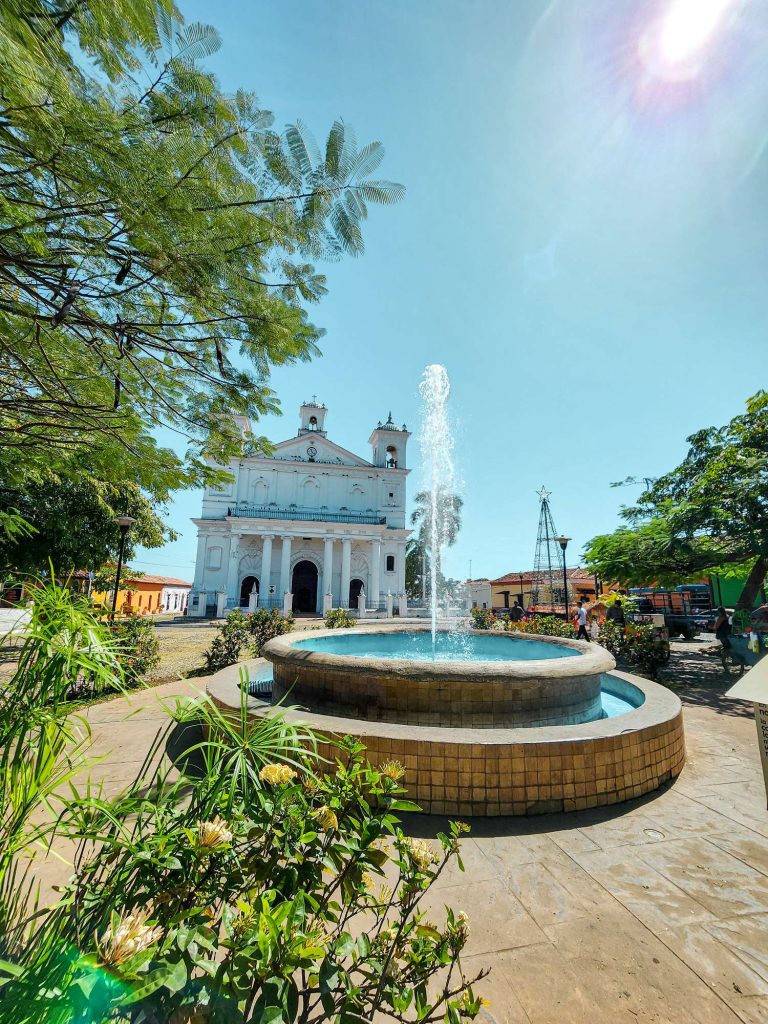
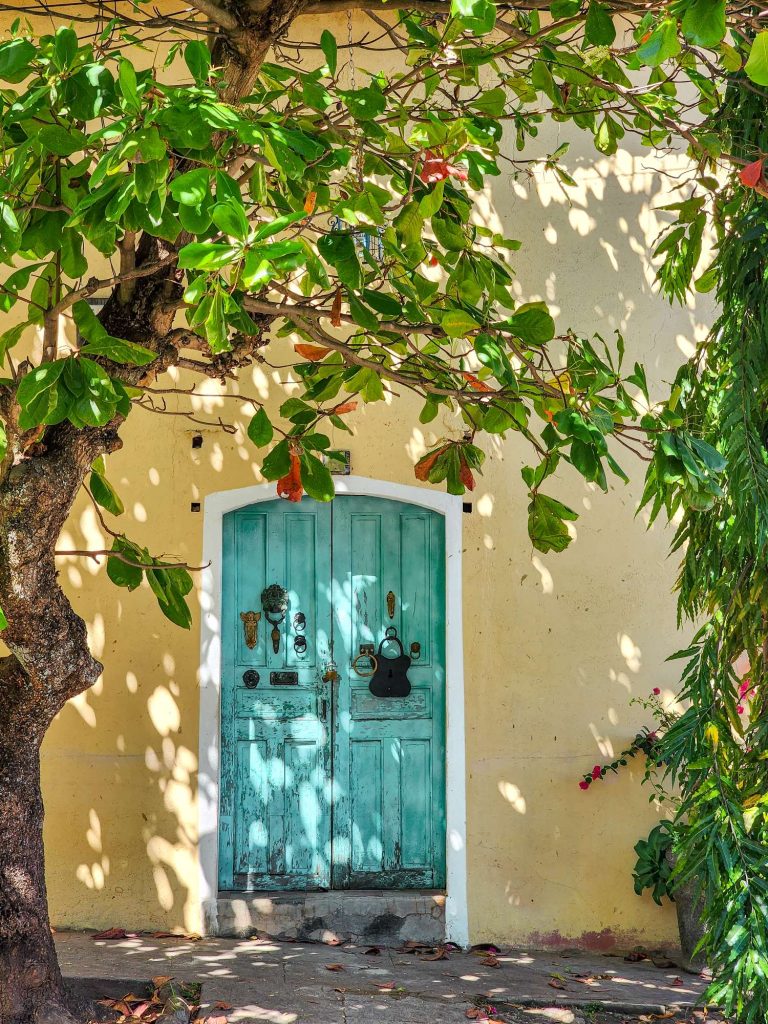
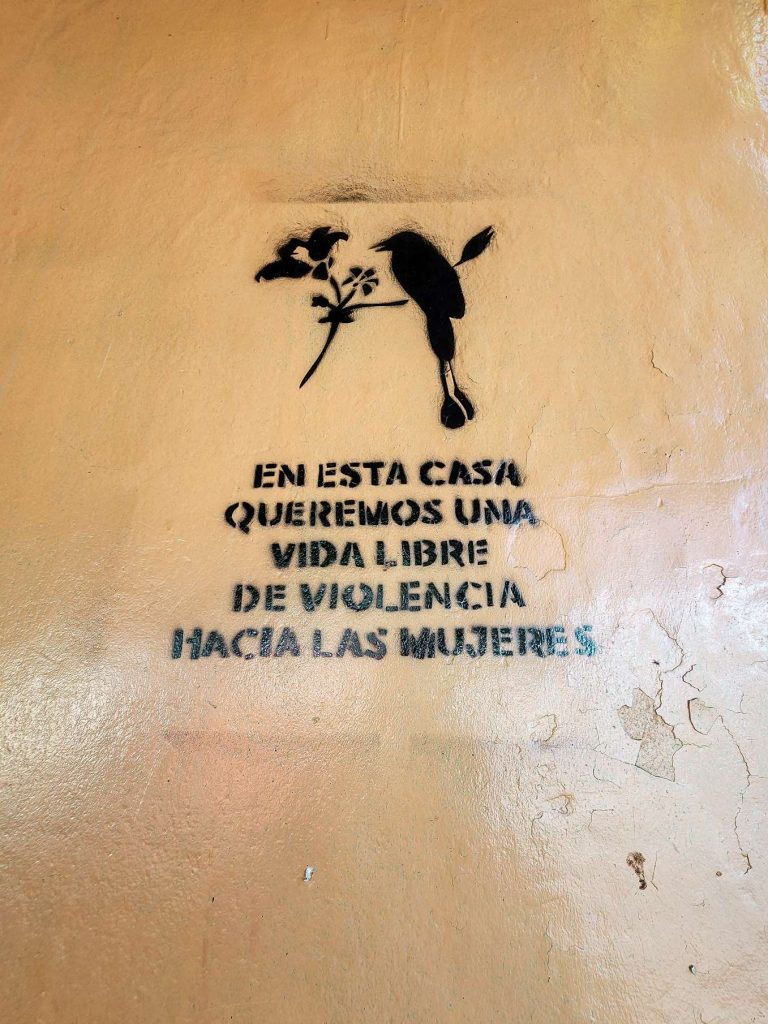
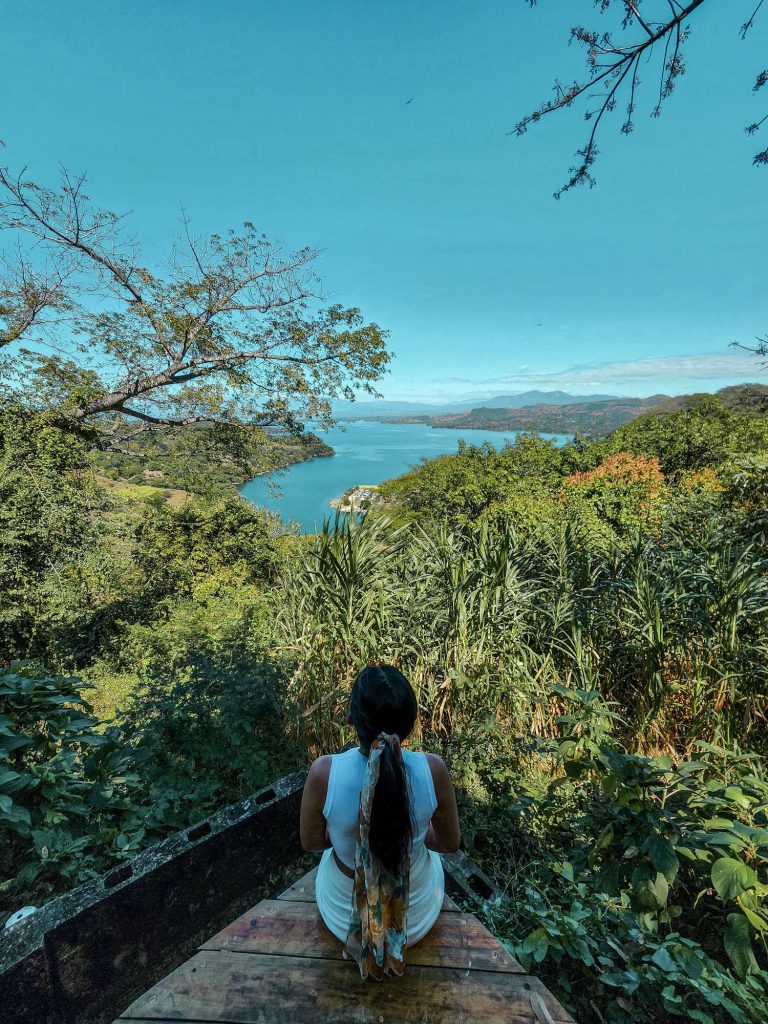
Cost of this independent border crossing:
Here are quick notes from the day
From Copan Ruins the bus left exactly at 6:40 am
Arrived at 9:40 am in Santa Rosa
110 lemp
3 hrs
Left Santa Rosa at 950 am
Arrived at Ocotepeque at 12:50 pm
150 lemp
I gave the bus conductor 500 lemp but had to remind him more than halfway for the change back. Suggest carrying smaller notes for ease.
3 hrs
A shared Taxi to the border with locals left at 1 pm
Arrived at Honduras immigration at 1: 20 pm
12 lemp
Stamp out Honduras immigration
Asked where I’m going next and where I was before
Mentioned that I had too many stamps on my passport!
Walked to the San Salvador immigration
Guard checked passport, stamped in and stamped out of Honduras
At the El Salvador immigration, the officer flicked through all the pages of my passport and checked the stamps again
This time questions were – where was I staying, where was I going, and which country I land first form Australia
Snacks $1.35
2 pm arrived At the bus stop chicken bus guy washing the tires
Left 2:15 pm $5 waiting for change still
Got back $2.80
Finally arrived in San Salvador at 5:30 PM
TAXI to the hostel at 5: 37 pm
Arrived at the hostel in 5 mins
Also checked Uber’s price was $6.10
Taxi wanted $8 but in the end, agreed to go from $6
How long did it take me to get from Honduras to El Salvador?
Total: 12 hours
These steps may look pretty complicated but don’t be put off by the fact that you need to take 3 different buses and 1 taxi to get to San Salvador. It’s not as bad as it looks, I speak barely any words in Spanish and did fine so you can too!
Alternatively, you can pay for a shuttle door-to-door service for about 90 USD.
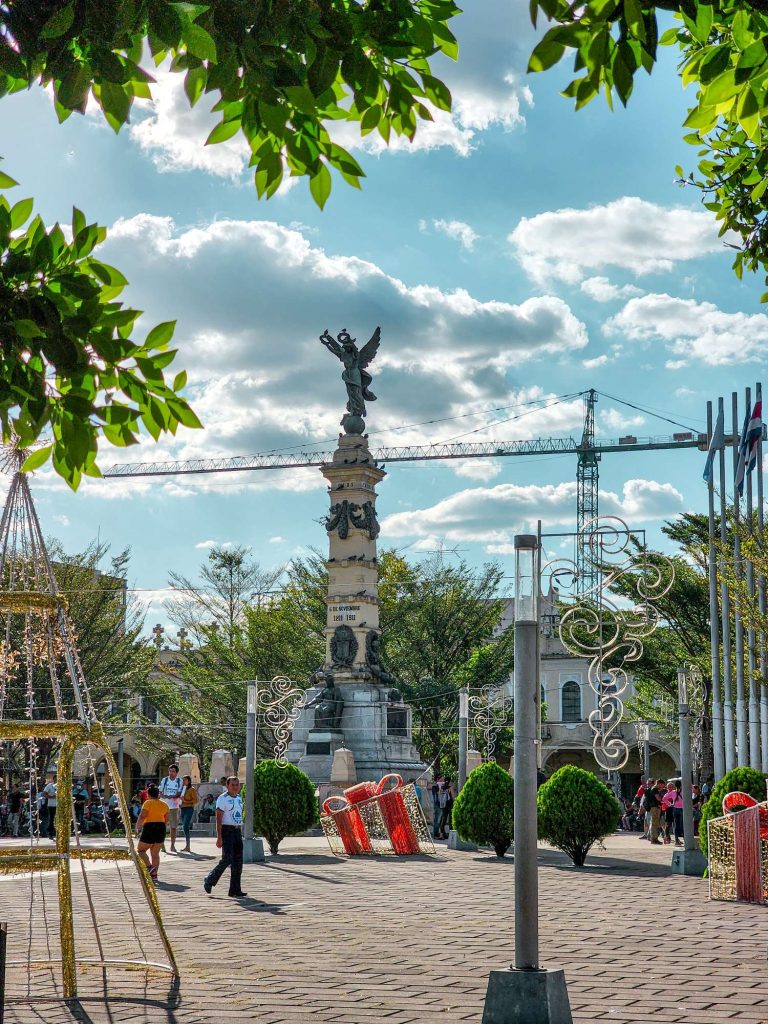
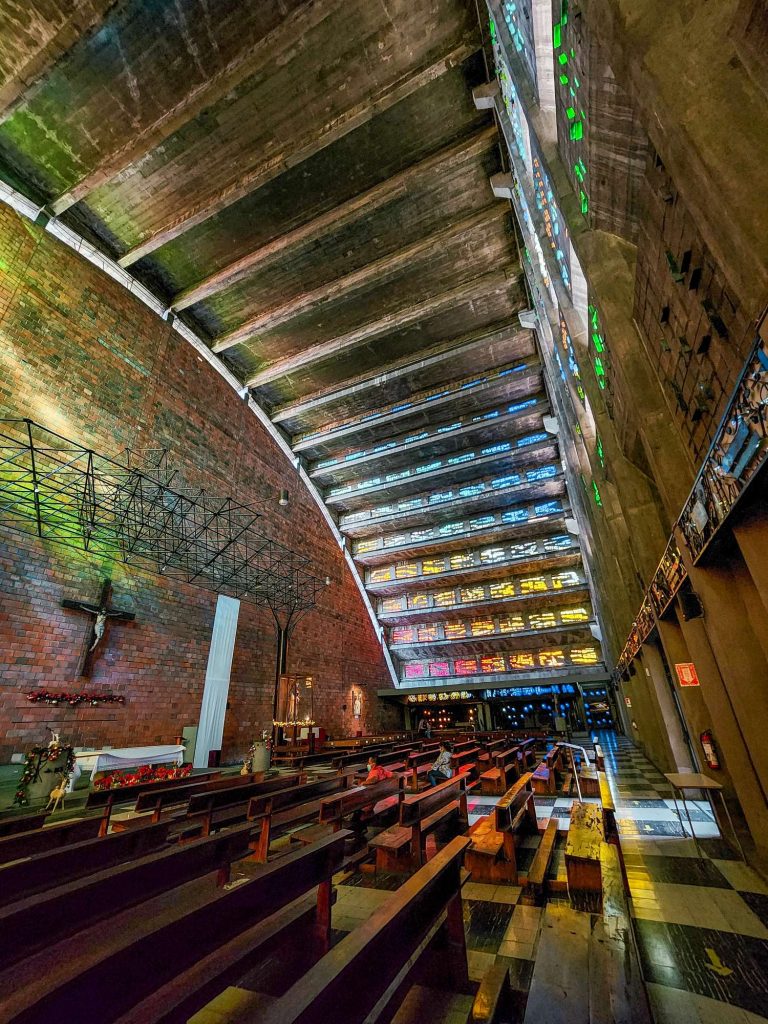

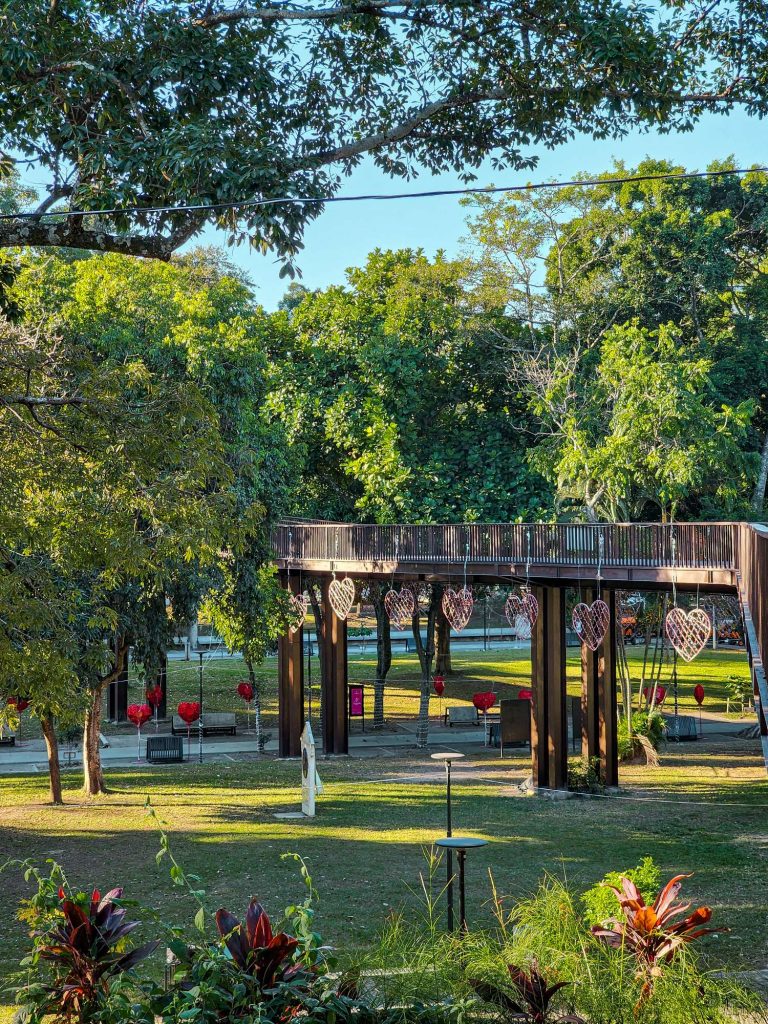
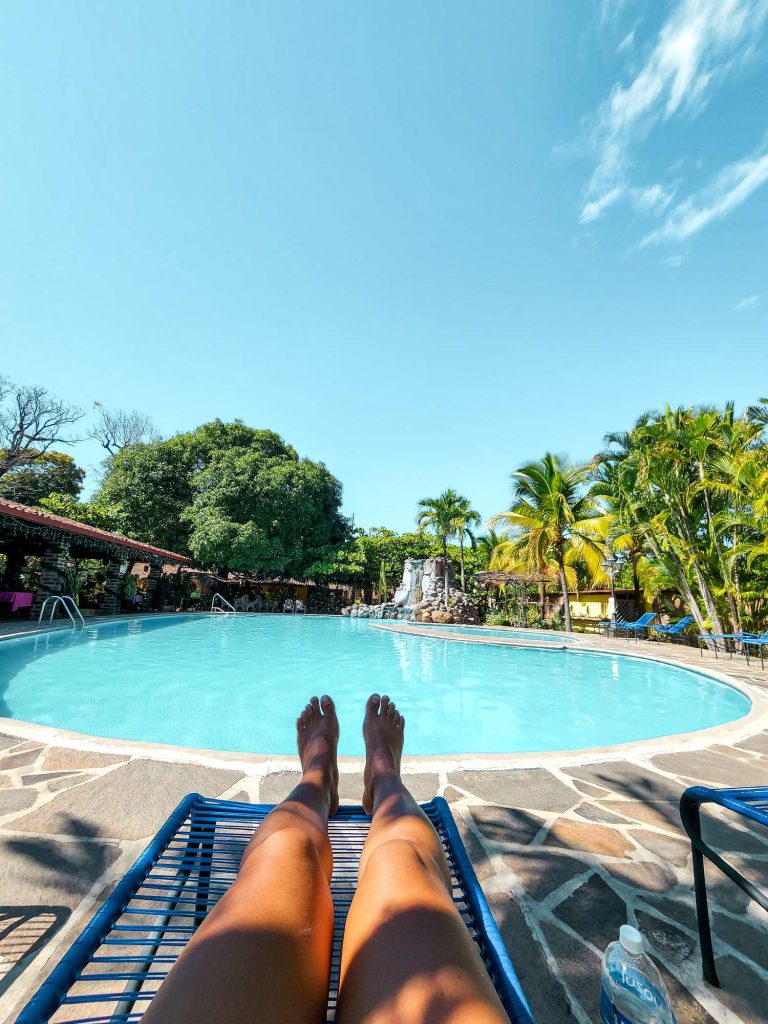
Is El Salvador safe for solo travelers?
El Salvador has a reputation for being a dangerous country, and there are certain safety concerns that solo travelers should be aware of. However, with appropriate precautions, it is possible to have a safe and enjoyable trip to El Salvador.
Here are some tips for staying safe in El Salvador as a solo traveler:
- Stick to well-known tourist areas and avoid traveling alone at night.
- Avoid carrying large amounts of cash or wearing expensive jewelry or watches.
- Use caution when using public transportation. Stick to licensed taxis or Uber.
- Keep your passport and important documents in a secure location, such as a hotel/hostel safe/locker.
- Stay aware of your surroundings and trust your instincts. If a situation feels unsafe, remove yourself from it as quickly and calmly as possible.
- Learn some basic Spanish phrases before your trip, as English is not widely spoken outside of tourist areas.
- Consider staying in a hostel or guesthouse with good reviews and a social atmosphere, where you can meet other travelers and possibly join group activities. (recommendation below)
Overall, while there are safety concerns in El Salvador, solo travelers can have a safe and rewarding trip with careful planning and a heightened awareness of their surroundings.
Which hostels to stay in El Salvador?
Here are some highly-rated hostels in San Salvador, the capital city of El Salvador:
- Hostal Cumbres del Volcan Flor Blanca – The hostel offers comfortable dorms and private rooms, a rooftop terrace, and a communal kitchen.
- Hostal Cumbres del Volcán Escalón – This hostel offers accommodation with a garden, free private parking, a shared lounge, and a terrace.
- La Zona Hostel – This hostel is located in the trendy Zona Rosa neighborhood and offers private rooms and dorms, a swimming pool, and a communal kitchen. The hostel also has a bar and a restaurant
- Hotel Oasis – This hostel offers accommodation with a terrace or a balcony, free WiFi, and flat-screen TV, as well as a garden and a shared lounge.
- Hotel Tazumal House – Hotel Tazumal House features a café and modern rooms with free Wi-Fi. It is located in San Salvador’s university district.


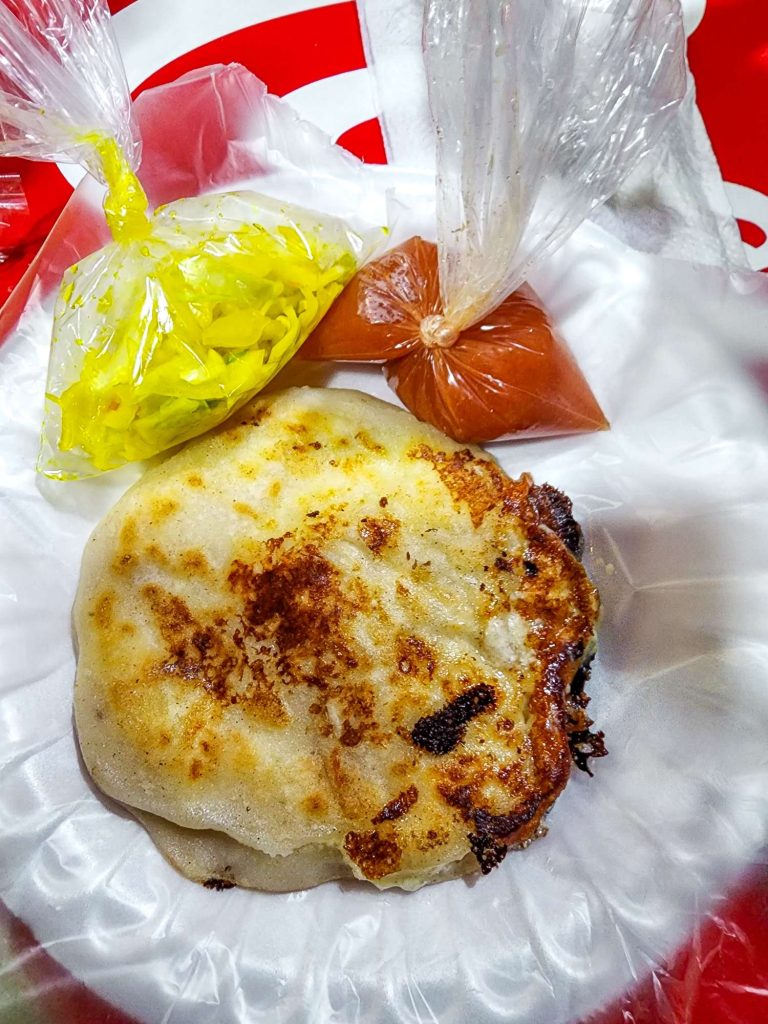
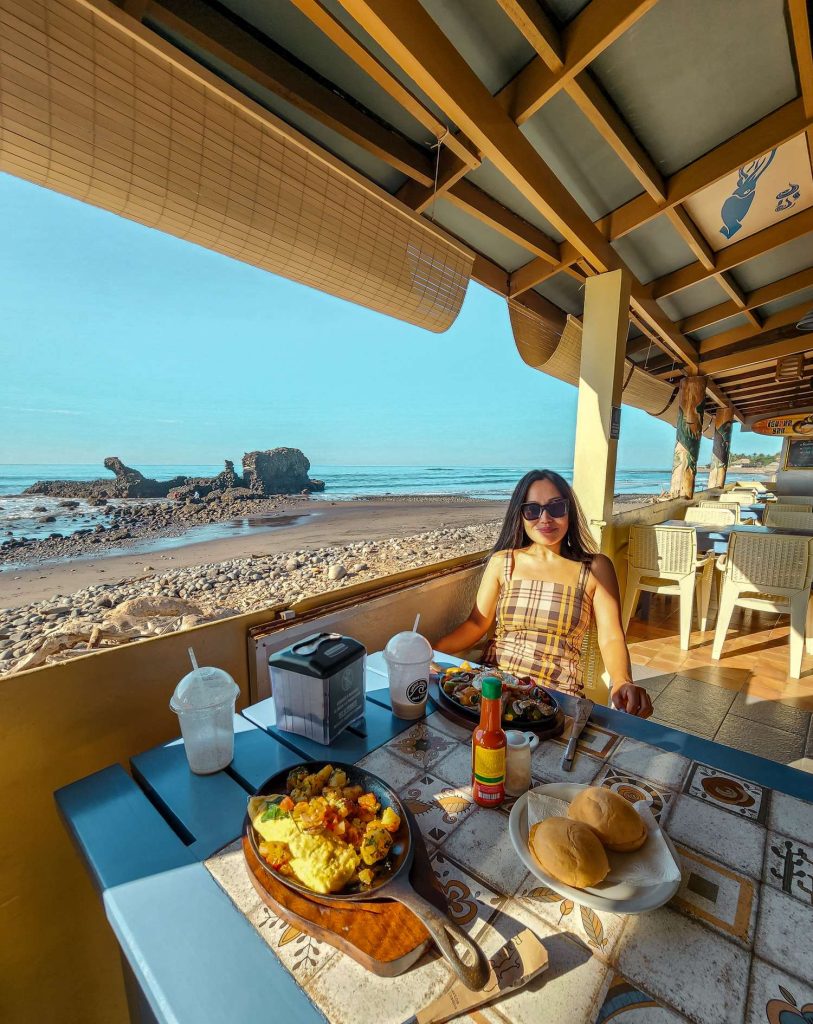
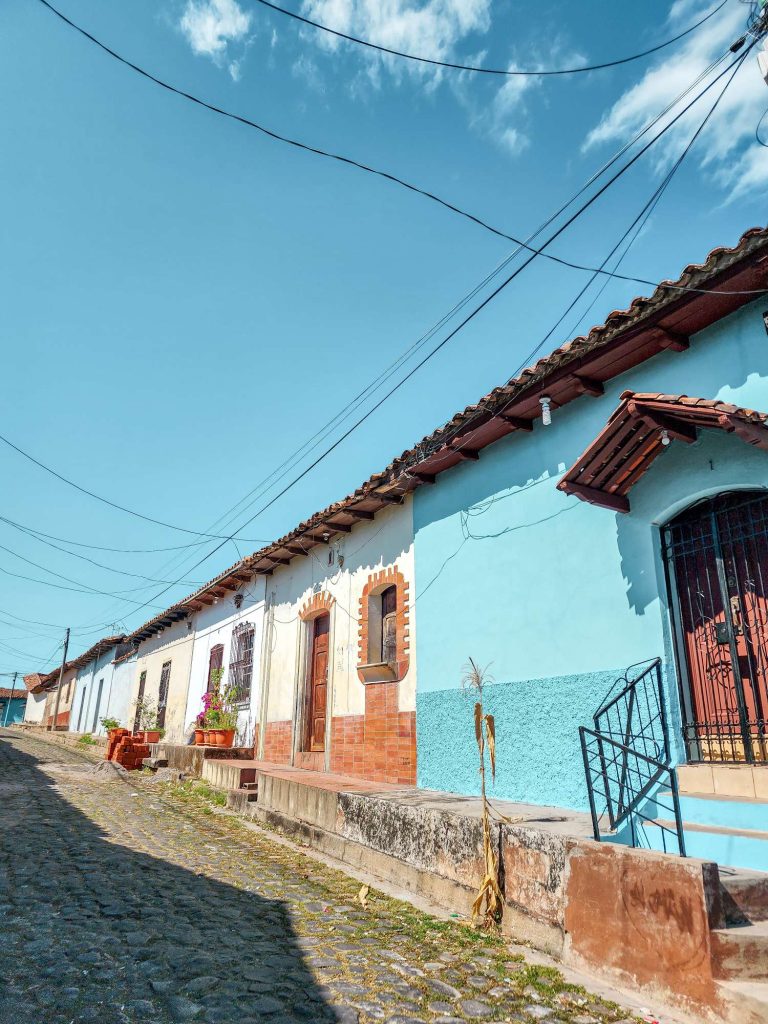
What and Where to eat in San Salvador?
San Salvador has a vibrant food scene, with a mix of traditional Salvadoran cuisine and international options. Here are some popular dishes and places to eat in San Salvador:
- Pupusas – This is the national dish of El Salvador and a must-try when visiting San Salvador. Pupusas are thick corn tortillas stuffed with cheese, beans, or meat, and topped with curtido (a pickled cabbage slaw) and tomato salsa. Some popular places to try pupusas in San Salvador include El Paseo de las Pupusas and Pupusería Paty.
- Mariscada – El Salvador is known for its seafood, and mariscada is a popular dish that features a variety of seafood, such as shrimp, clams, and fish, in a tomato-based sauce. Some popular places to try mariscada in San Salvador include La Pampa Argentina and Los Cebollines.
- Chorizo con lombrices (also known as chorilonga or chorilonza) – It is a popular street food that consists of grilled chorizo sausage and moronga (blood sausage) served on a tortilla.
- Comida Corrida – This is a traditional Salvadoran lunch that typically includes a soup, a main course (such as grilled chicken or beef), rice and beans, and a drink. Many small restaurants in San Salvador offer comida corrida at an affordable price, such as Comedor Guadalupano.
- Coffee – El Salvador is also known for its coffee, and there are many coffee shops and cafes in San Salvador where you can try a cup of locally grown coffee. Some popular places to try coffee in San Salvador include Viva Espresso and The Coffee Cup.
- Street Food – San Salvador has a lively street food scene, with vendors selling a variety of snacks and treats. Some popular street foods to try include yuca frita (fried cassava), churros, and elotes locos (corn on the cob with toppings). You can find street food vendors throughout the city, but some popular areas include Parque Colón and La Gran Vía.
- Sopa de Res – A traditional beef soup that often includes vegetables such as carrots, potatoes, and yucca.
- Tamales – Similar to the Mexican dish, tamales in El Salvador are often filled with chicken or pork and served with tomato sauce.
- Ensalada Rusa – A salad made with boiled potatoes, carrots, peas, and mayonnaise.
- Quesadillas – These are sweet, Salvadoran-style cheese pastries that are often served with coffee or hot chocolate
- Ponche- Ponche is a traditional Salvadoran Christmas beverage made with fruits, spices, and rum.
Some popular places to try seafood dishes in San Salvador include La Pampa Argentina, Los Cebollines, and El Cadejo. You can also find ponche at local markets and street vendors during the holiday season.
Highlights in San Salvador
San Salvador is the vibrant capital of El Salvador, located in the heart of Central America. Despite being one of the smallest capital cities in the region, San Salvador is a bustling metropolis with a rich history, vibrant culture, and plenty of activities for visitors to enjoy.
Here are 10 interesting things to see and do in San Salvador:
- See the memorable Iglesia El Rosario (Church of the Rosary) Pretty impressed with the rainbow effect – v original! It is so beautiful inside at any time during the day but the best time is 3 pm for the full rainbow effect. Cost $2 per foreigner to enter and masks are still required. They sell them for 0.25 cents each.
- Visit the iconic “El Salvador del Mundo” monument and ride the giant slide for a thrilling experience and panoramic views of the city.
- Immerse yourself in the local culture by visiting bustling markets like Mercado Central and Mercado Antiguo Cuscatlán, where you can sample traditional street food and shop for souvenirs.
- Learn about the country’s turbulent history and the struggles of the local people by visiting the Museum of the Revolution or the National Museum of Anthropology Dr. David J. Guzmán.
- Marvel at the stunning architecture of the city’s historic buildings, such as the Metropolitan Cathedral, the National Palace, and the Teatro Nacional.
- Take a leisurely stroll through the city’s parks and plazas, including the Parque Cuscatlán, Parque Libertad, and Plaza Gerardo Barrios.
- Enjoy the vibrant nightlife scene by visiting bars and clubs in trendy neighborhoods like Zona Rosa and La Gran Vía.
- Attend a cultural event or festival, such as the annual August celebrations or the Paseo El Carmen, a traditional street fair that takes place in the historic district.
- Discover the contemporary art scene by visiting Museo de Arte de El Salvador or art galleries like the Centro Cultural de España or the Casa Tomada.
- El Boquerón National Park: This park, located on the edge of the San Salvador Volcano, offers hiking trails, picnic areas, and stunning views of the city and surrounding landscape.
- La Casa de la Cultura: This cultural center offers a variety of workshops, classes, and events related to art, music, dance, and theater.
- Plaza Libertad: This beautiful public square features a statue of El Salvador’s national hero, Jose Matias Delgado, and is surrounded by historic buildings and museums.
Below are some suggested tours if you’re interested
Day Trips from San Salvador
- Joya de Cerén: This UNESCO World Heritage Site is known as the “Pompeii of the Americas” and offers a glimpse into the daily life of the Mayan people who lived here before the eruption of the nearby volcano.
- Tazumal: This pre-Columbian archaeological site located in the town of Chalchuapa features impressive Mayan ruins and is considered one of the most important archaeological sites in El Salvador.
- Lake Coatepeque: This picturesque crater lake is located about 45 minutes from San Salvador and offers stunning views, swimming, and water sports.
- Santa Ana Volcano: This active volcano is the highest in El Salvador and offers a challenging but rewarding hike to the summit for stunning views of the surrounding landscape.
- Ruta de las Flores: This scenic drive takes you through charming towns and picturesque landscapes, with plenty of opportunities to stop and explore local markets, coffee farms, and artisan shops.
- Suchitoto: This pretty pastel colonial town (pics above) located about an hour from San Salvador offers historic architecture, beautiful views of Lake Suchitlán, and opportunities for hiking, birdwatching, and water sports.
- El Boquerón National Park: This park, located on the edge of the San Salvador Volcano, offers hiking trails, picnic areas, and stunning views of the city and surrounding landscape.
These are just a few of the many-day trips you can take from San Salvador. Make sure to do some more research and plan ahead to make the most of your time in El Salvador.
El Tunco Beach
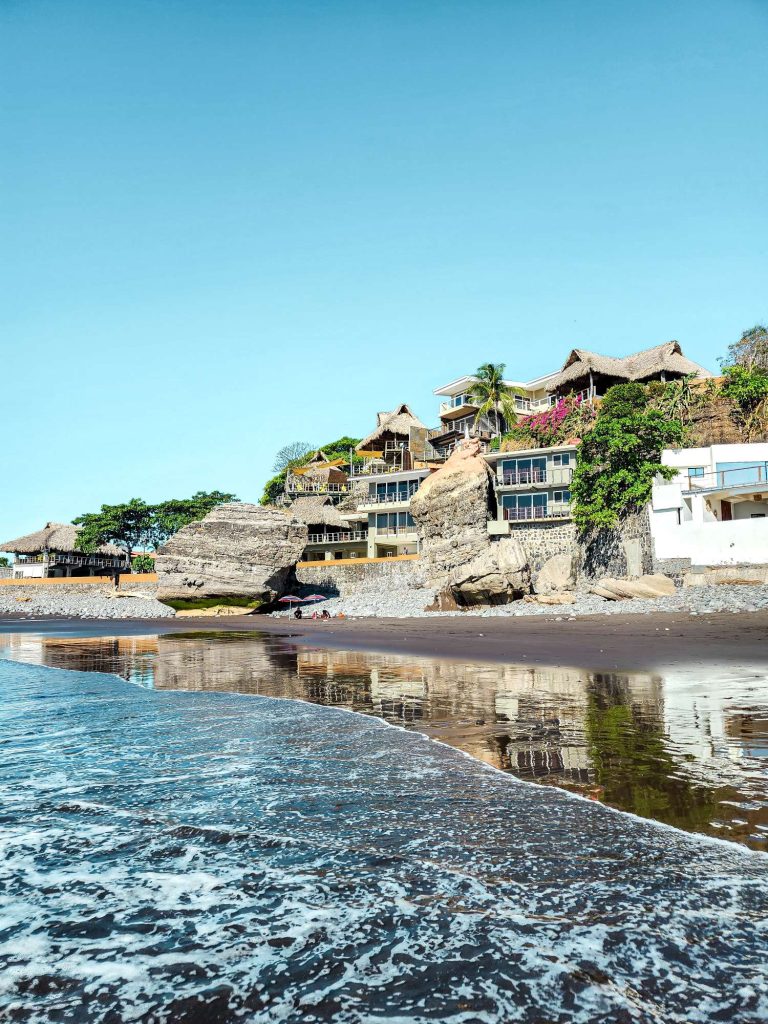

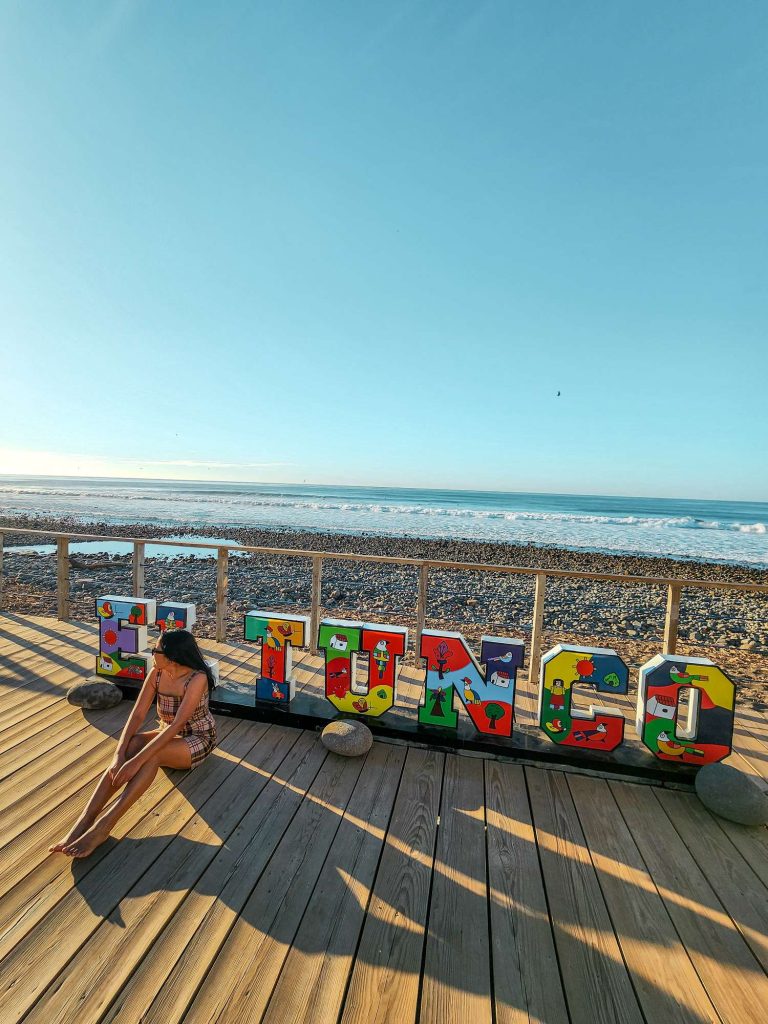
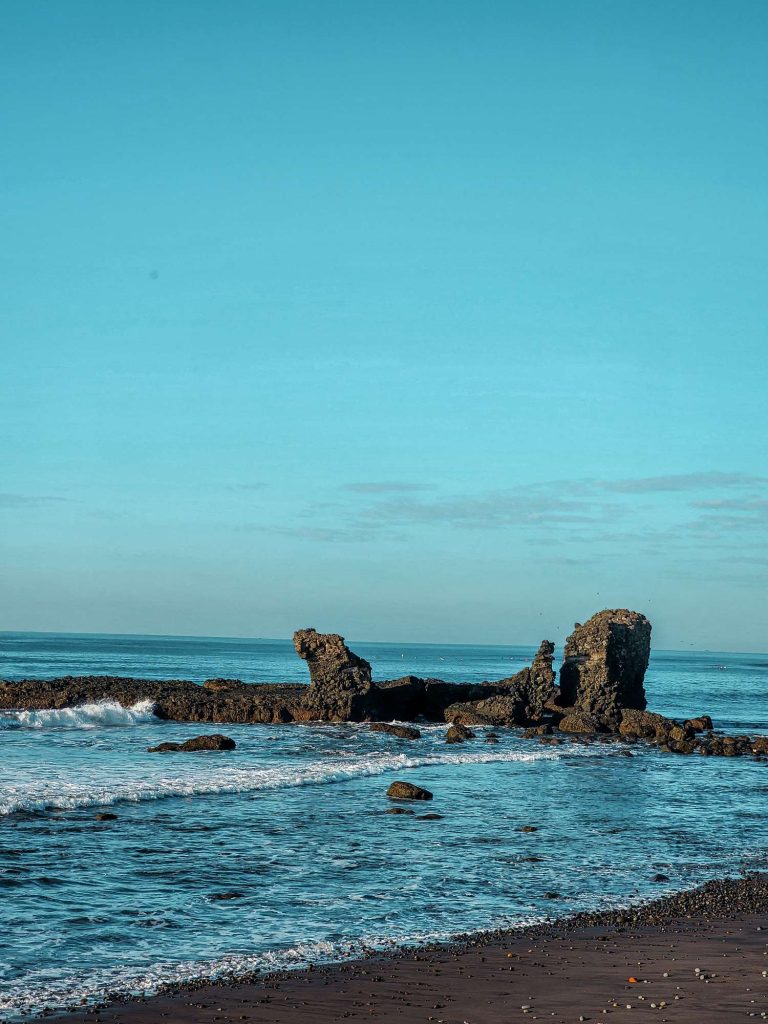

After spending a day in San Salvador and taking a day trip to Suchitoto the next day, I took the public local bus in the evening and arrived at El Sunzal Beach which is a good 20 mins beach walk to El Tunco beach. From San Salvador, the bus journey took about 1 hour and if you want another option, you can also Uber it to el tunco. It is a popular tourist destination located on the Pacific Coast of El Salvador. The beach is famous for its excellent surfing conditions, relaxed atmosphere, and beautiful natural scenery.
Other ways to get to El Tunco Beach from San Salvador include hiring a taxi but the most convenient way to travel is by car or private shuttle, which can be arranged through local tour operators or your hotel. The journey takes approximately 45 minutes to an hour, depending on traffic.
Once you arrive in El Tunco Beach, there are many activities to enjoy. Surfing is the most popular activity, and there are several surf schools and rental shops along the beach. You can also take a boat tour to explore the coastline, try your hand at fishing, or go for a hike in the nearby El Imposible National Park.
If you prefer a more laid-back experience as I did, you can simply relax on the beach and soak up the sun. The beach is lined with palm trees and has plenty of shady spots to relax, read a book, or take a nap. You can also enjoy a cold drink or a snack from one of the many beachside bars and restaurants.
When it comes to dining in El Tunco Beach, there are plenty of options to choose from. Many of the restaurants offer fresh seafood and traditional Salvadoran dishes, as well as international cuisine. Some popular restaurants include Sunzalito, Cafe Sunzal, and Beto’s Beach Bar.
Overall, El Tunco Beach is a must-visit destination for anyone traveling to El Salvador. Its relaxed vibe, beautiful scenery, and excellent surfing conditions make it an ideal place to unwind and enjoy the beauty of the Pacific coast.
5. Nicaragua (7 Days 7 Nights)
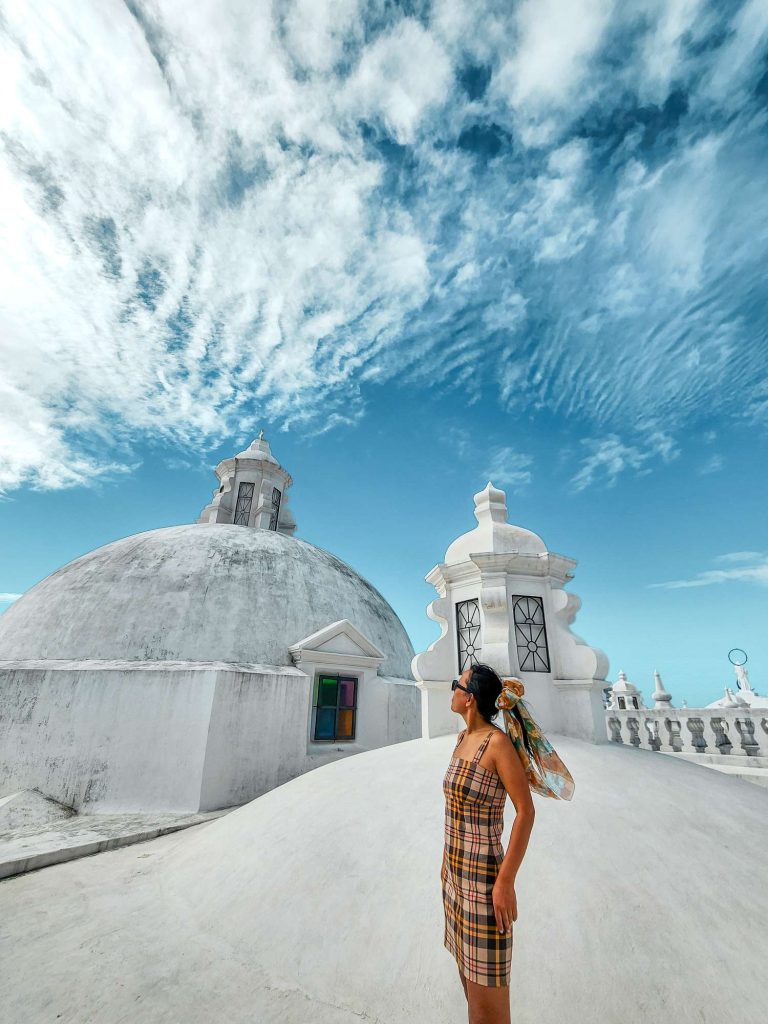
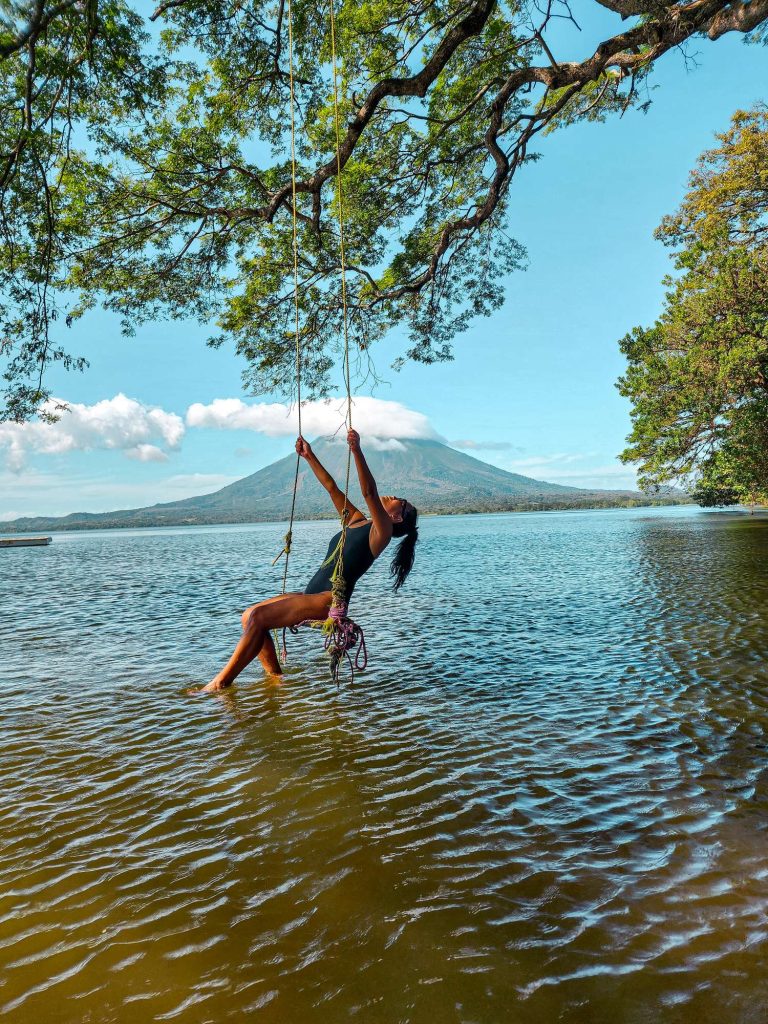

On this backpacking one-month in Central America itinerary, it is time to visit one of my favorite countries Nicaragua. It is a beautiful country bordered by Honduras to the north and Costa Rica to the south. It has a population of around 6 million people and its capital city is Managua. Nicaragua is known for its stunning natural landscapes, including volcanoes, lakes, and beaches, as well as its rich culture and history.
I spent 2 days in Leon, 2 days in Granada, and 3 days in Ometepe. ( more on these below) I skipped San Juan del Sur because wasn’t keen on visiting another beach on this trip.
Must admit though when I was ready to leave Nicaragua to go to Costa Rica, I realized my passport was missing! Long story short, I ended up staying a week extra in Nicaragua just waiting for my emergency passport. Luckily it arrived exactly within a week and I was able to continue this trip. Needless to say, it is good to have some buffer time in case something unexpected happens and take care of your belongings AT ALL TIMES.
Leon is a city located in the northwest of Nicaragua, about 90 km northwest of the capital city of Managua. It is the second-largest city in Nicaragua and is known for its colonial architecture, historic landmarks, and vibrant arts and culture scene. Some of the must-visit sites in Leon include the Cathedral of Leon, the Museum of the Revolution, and the Rubén Darío Museum.
Granada is a city located in the south of Nicaragua, about 45 km southeast of the capital city of Managua. It is one of the oldest cities in the Americas and is known for its colorful colonial architecture, historic landmarks, and beautiful natural landscapes. Some of the must-visit sites in Granada include the Granada Cathedral, the San Francisco Convent, and the Mombacho Volcano Nature Reserve.
Ometepe is an island located in the middle of Lake Nicaragua, which is the largest lake in Central America. The island is formed by two volcanoes, Concepción and Maderas, and is known for its stunning natural landscapes, including lush forests, beautiful beaches, and scenic hiking trails. Some of the must-visit sites on Ometepe include the Ojo de Agua natural pool, the Charco Verde Nature Reserve, and the San Ramón Waterfall.
How to go from El Tunco, El Salvador to Leon, Nicaragua?


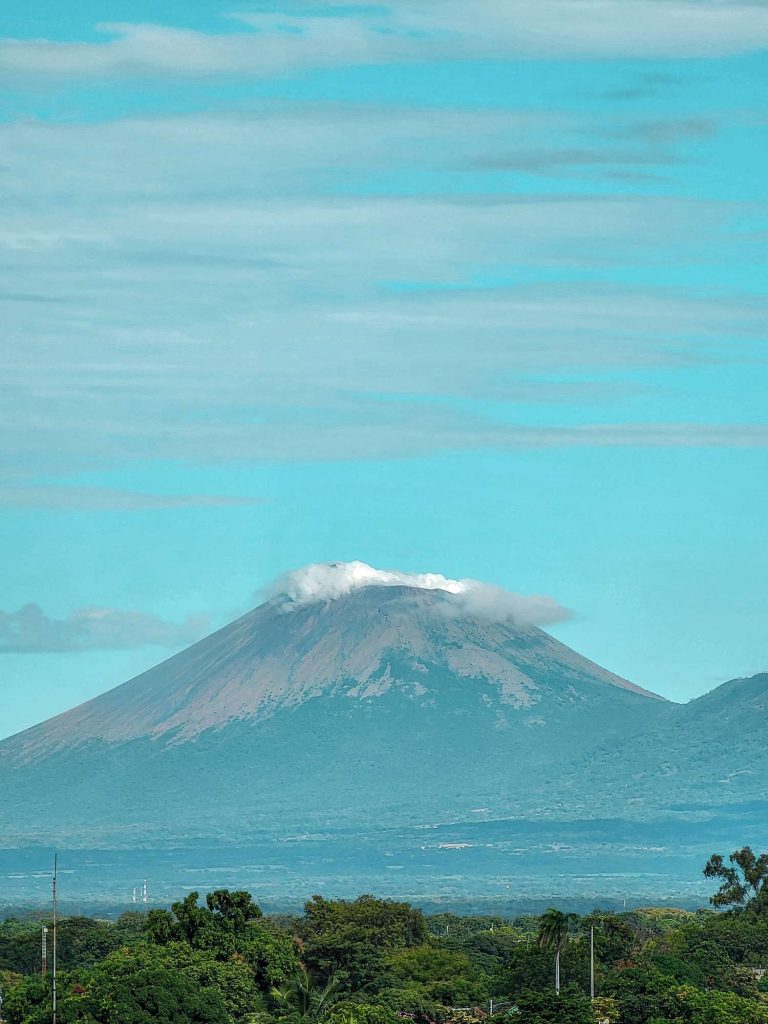

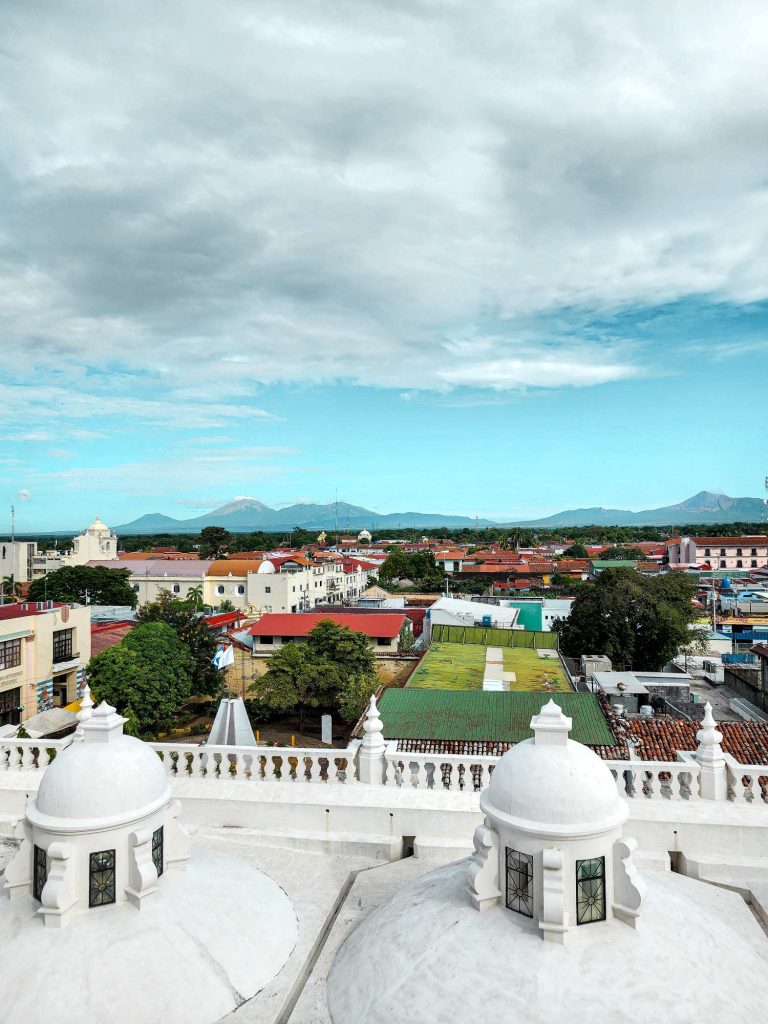
There are two ways you can cross the border from El Tunco to Leon. First one via boat and the second via land.
Boat from El Tunco to La Union:
To start your journey, you’ll need to go from El Tunco to La Union, which is located on the eastern coast of El Salvador. In La Union, there are boat operators that offer the boat service to cross the border, but the days they ran, it did not work with my travel plans so I had to think of an alternate way. Must add, this boat journey is a quicker way to arrive in Leon tho because it goes directly to Nicaragua than via land. You can ask around in El Tunco to find a reliable operator and it’s important to plan ahead and book your tickets in advance, especially for the boat ride from El Tunco to La Union, as this can be a popular route.
Border crossing via land from El Sunzal to Leon, Nicaragua
Just a heads up, the information below is a bit vague for a reason because this is what I found in my research. Basically, you have to stop and stamp in and stamp out 4 times in 3 countries, and just thinking about finding local buses after each stop and the time it will take seemed like a hassle to me at the time.
Plus having done all 3 previous border crossings independently, I decided to pay for a shuttle for this one. The shuttle I used is called Roneey Shuttle, they were having a reopening promo for $45 USD which seemed decent. They included help with immigration, and door-to-door service i.e. pick up from the hostel in El Sunzal to a hostel in Leon was included.
Note: El Tunco is only 10-15 mins on the beach walk from El Sunzal but with a backpack, it was handy to have a pickup. Accommodations were full in El Tunco so I stayed at El Sunzal and took a local bus from the capital San Salvador to get there.
More power to you if you complete this border crossing yourself, feel free to share the details here so others can learn from you too.
- From El Tunco, take a bus to the border town of Amatillo. The journey takes around 2-3 hours.
- Stamp out of El Salvador at the immigration
- Cross the border into Honduras and go through immigration to stamp the passport
- Get another bus to the border town of Choluteca in Honduras and go through immigration again to Stamp out
- Once you cross the border, go to the immigration and stamp in Nicaragua.
- Then take a bus to the city of Chinandega. The ride takes around 1-2 hours.
- From Chinandega, take a bus to Leon. This journey takes around 1-1.5 hours.
Cross the border: At the border, you’ll need to go through immigration and customs procedures for both El Salvador and Nicaragua. Be sure to have all necessary documents, such as your passport and visa (if required), ready for inspection.
Overall, this journey can take around 8-12 hours, depending on your mode of transportation and how long you spend at each step. Additionally, be sure to pack plenty of water and snacks for the journey, as it can be a long and tiring day of travel.
Is Nicaragua safe for solo female travellers?

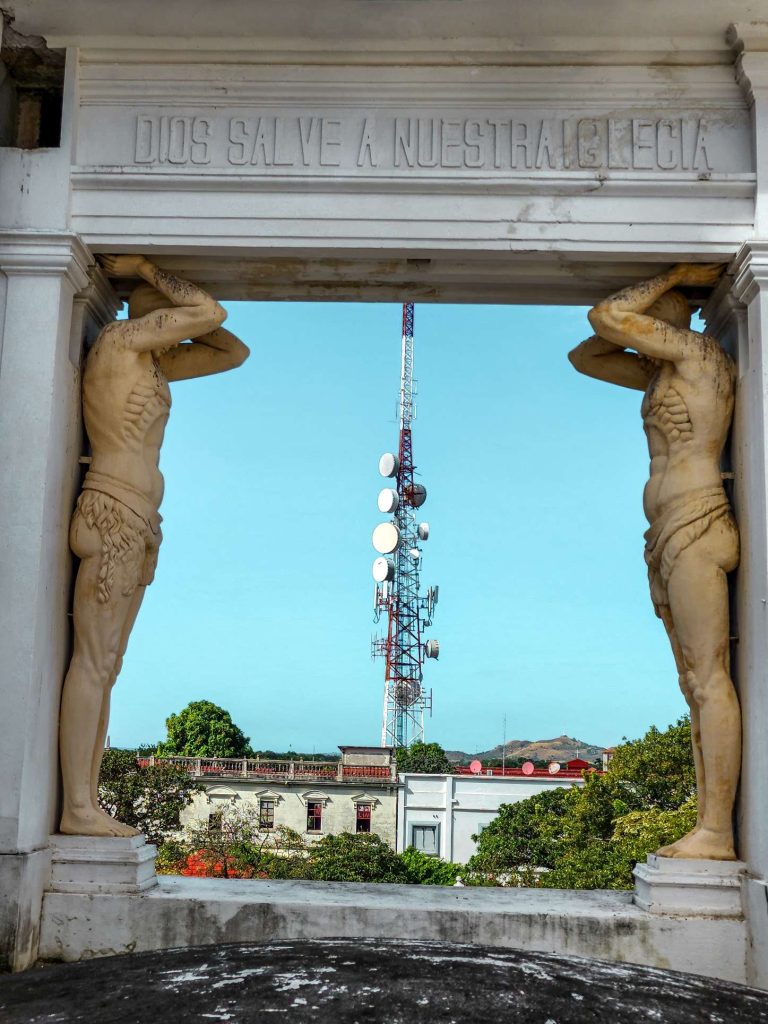



The safety of solo travel in Nicaragua can vary depending on a number of factors, including the specific areas you plan to visit, the time of day, and your own behavior and precautions. Nicaragua has experienced political and social unrest in recent years, which has led to some safety concerns, particularly in the capital city of Managua and other urban areas. However, many areas of Nicaragua, including popular tourist destinations like Granada and San Juan del Sur, are generally considered safe for travelers.
With that said, I felt completely safe in every city I visited in Nicaragua. As a solo traveler, it’s important to take extra precautions to stay safe tho, such as
- Stay in well-lit and busy areas, particularly at night.
- Avoid carrying large amounts of cash or valuable items with you.
- Be aware of your surroundings and stay alert at all times.
- Research your destination ahead of time and be informed about any safety concerns or risks in the area.
- Stay up to date on relevant local news and follow any travel advisories issued by your home country’s government
- Use licensed taxis or transportation services, particularly at night or when traveling to unfamiliar areas.
- Respect local customs and dress modestly to avoid unwanted attention or harassment.
- Be cautious when consuming alcohol and avoid overindulging or accepting drinks from strangers.
- Consider staying in reputable accommodation that has good security measures in place.
- Get a local sim card with data, I bought claro in Guatemala and it worked till I get to Nicaragua! lol Bought a new one here.
Overall, Nicaragua can be a safe destination for solo travelers with proper planning and precautions. However, it’s important to stay informed about local conditions and take necessary safety measures to ensure a safe and enjoyable trip.
Which hostels to stay in Leon, Granada, and Ometepe?
When it comes to hostels in Nicaragua, there are several great options in Leon, Granada, and Ometepe. Here are some recommendations:
In Leon:
In Granada:
In Moyogalpa, Ometepe:
How to go from Leon to Granada to Omtepe?

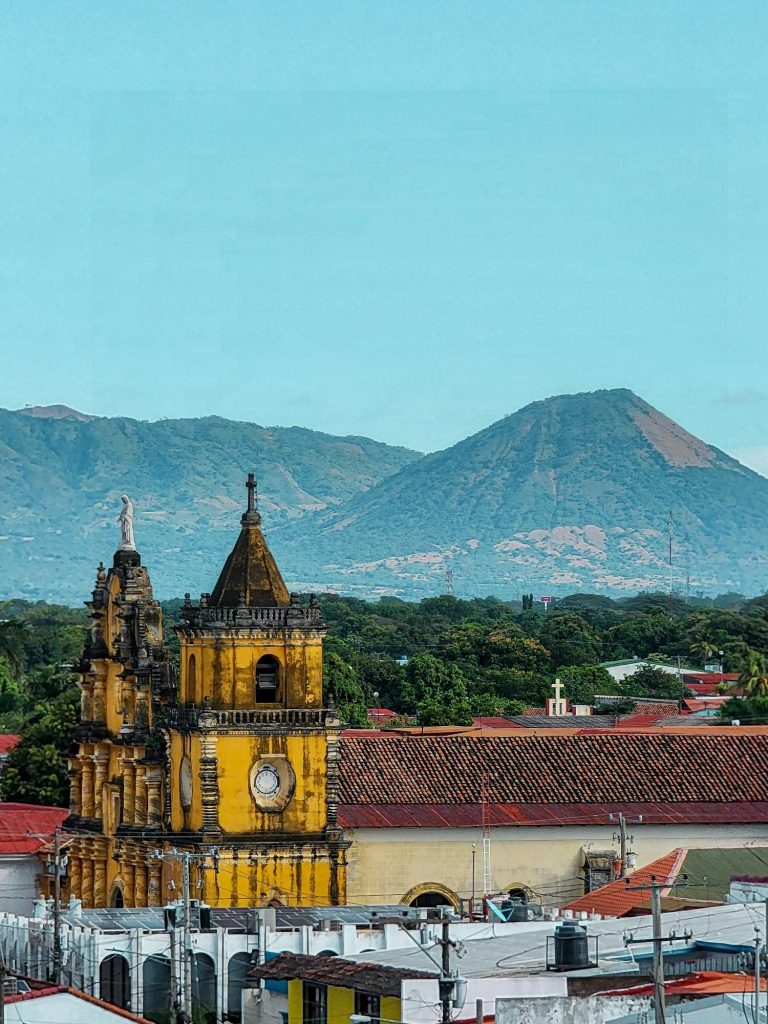
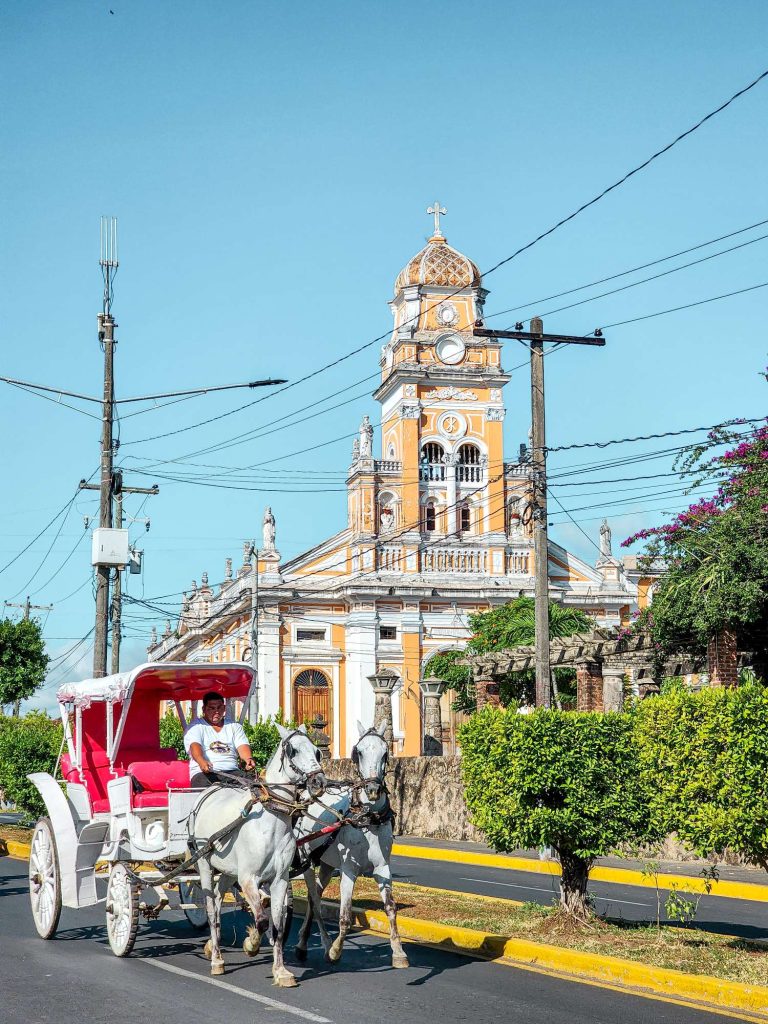
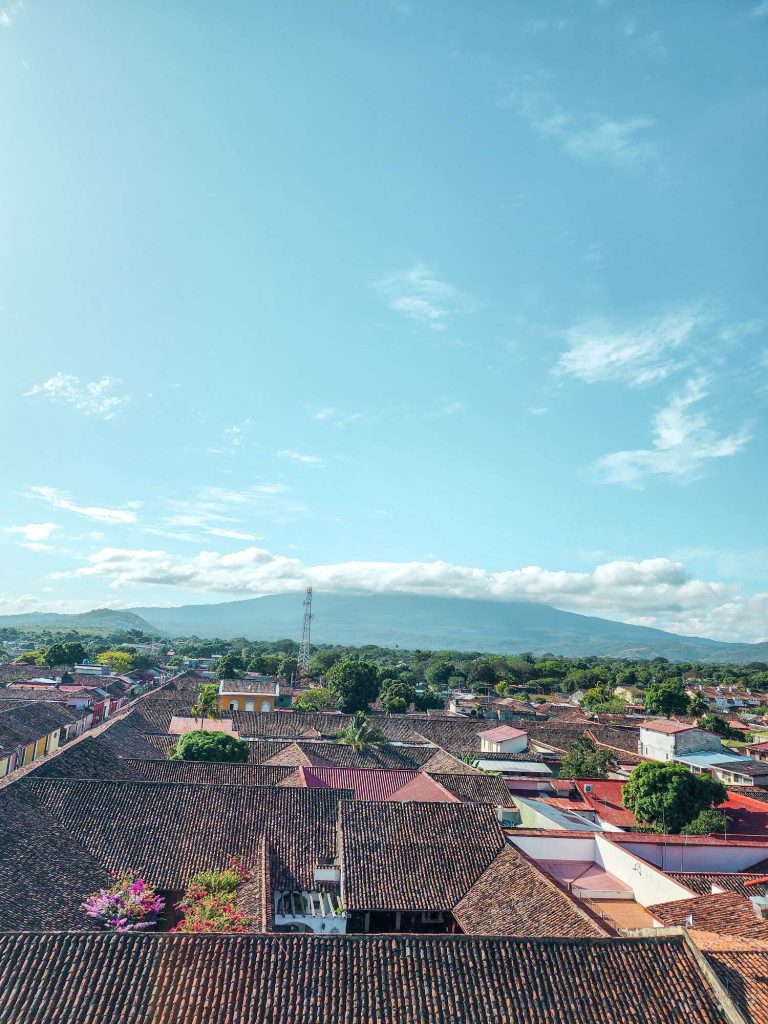
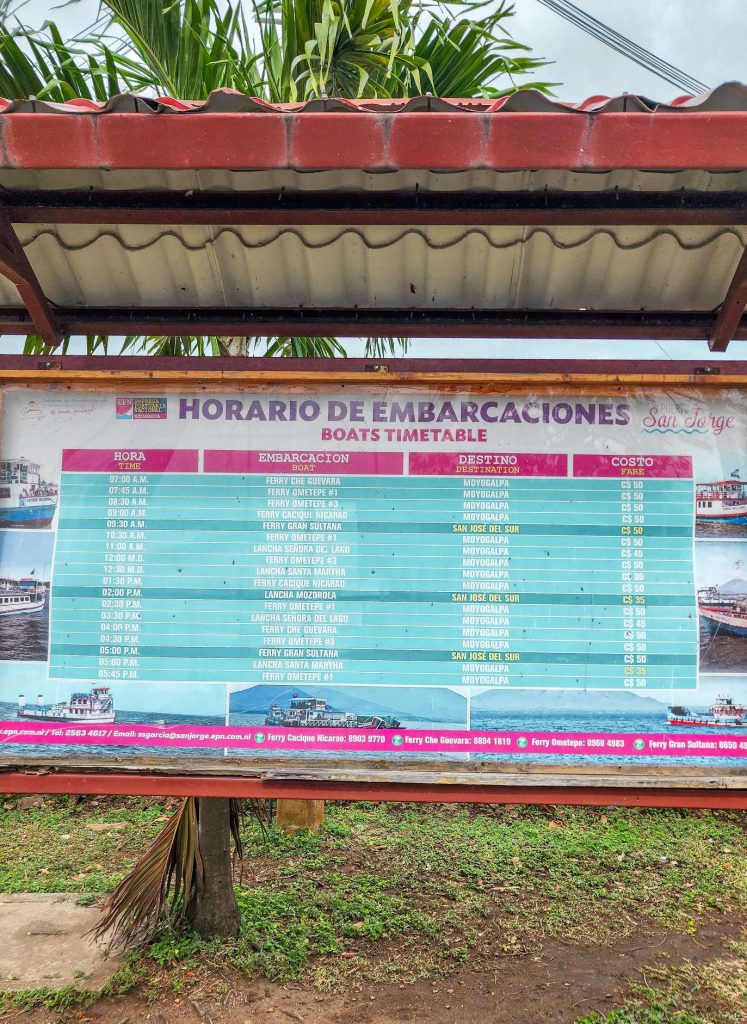
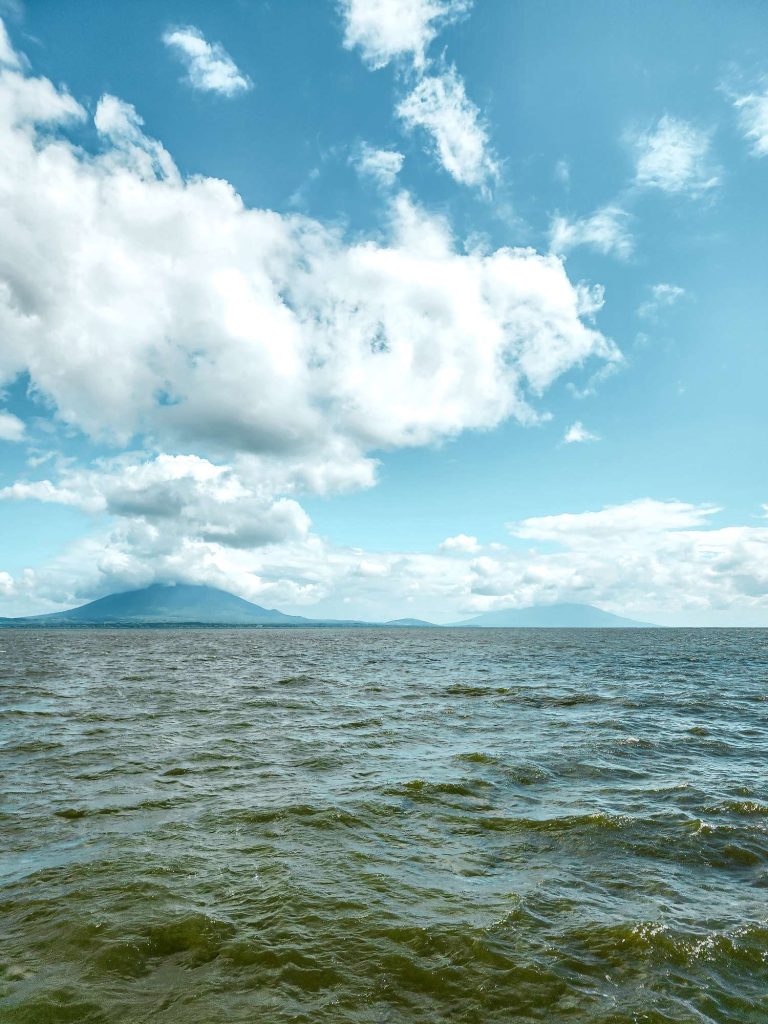
There are several options for getting from Leon to Granada and then to Ometepe:
- Private Transportation: You can hire a private taxi or van to take you from Leon to Granada, and then to the port in San Jorge, where you can catch a ferry to Ometepe. This option is convenient and comfortable, but it can be expensive.
- Public Transportation: This is what I did – You can take a local minibus from Leon to Granada, which takes about 1-2 hours depending on the traffic.
From Granada, you can take a local bus to Rivas, then pay about 30 Q for the taxi to the port in San Jorge, which takes about 1 hour. From there, you can catch a ferry to Ometepe. This option is more budget-friendly but can be less comfortable and time-consuming. - Shuttle Service: Many shuttle services operate between Leon, Granada, and San Jorge, which can be a convenient and affordable option. You can book these services online or through your hostel/hotel.
Regardless of which option you choose, it’s important to plan ahead and allow plenty of time for transportation, as travel times can vary depending on traffic and other factors. Also, make sure to check the ferry schedules ahead of time, as they can change seasonally or due to weather conditions.
Food and drink to try in Nicaragua and where?

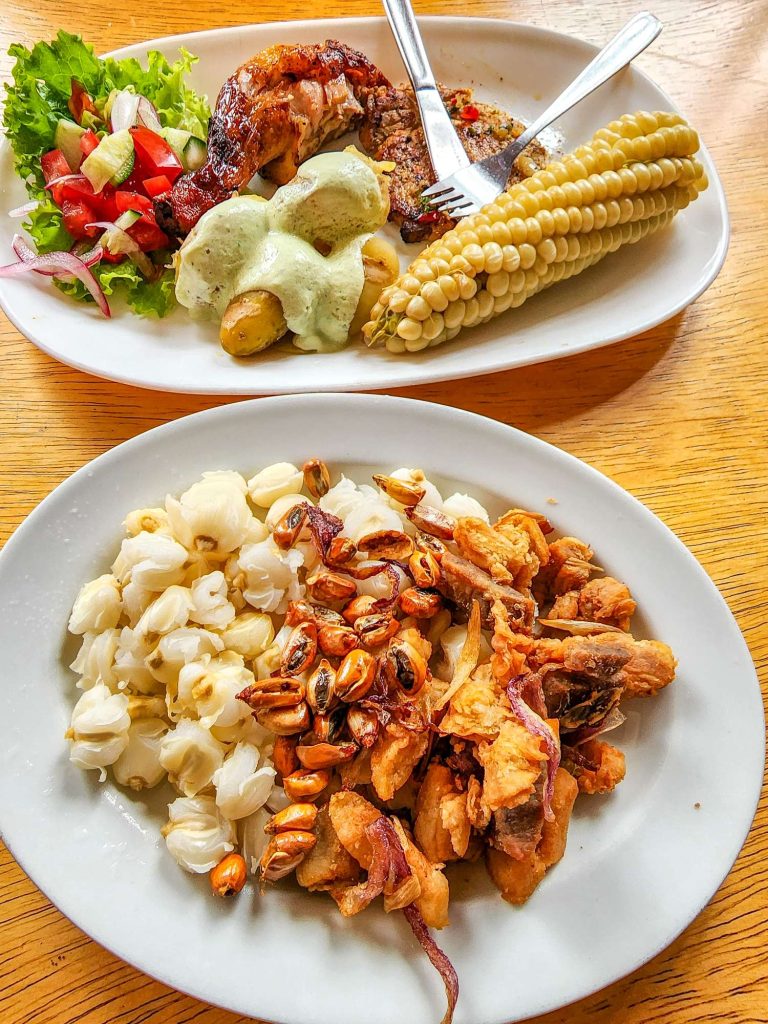
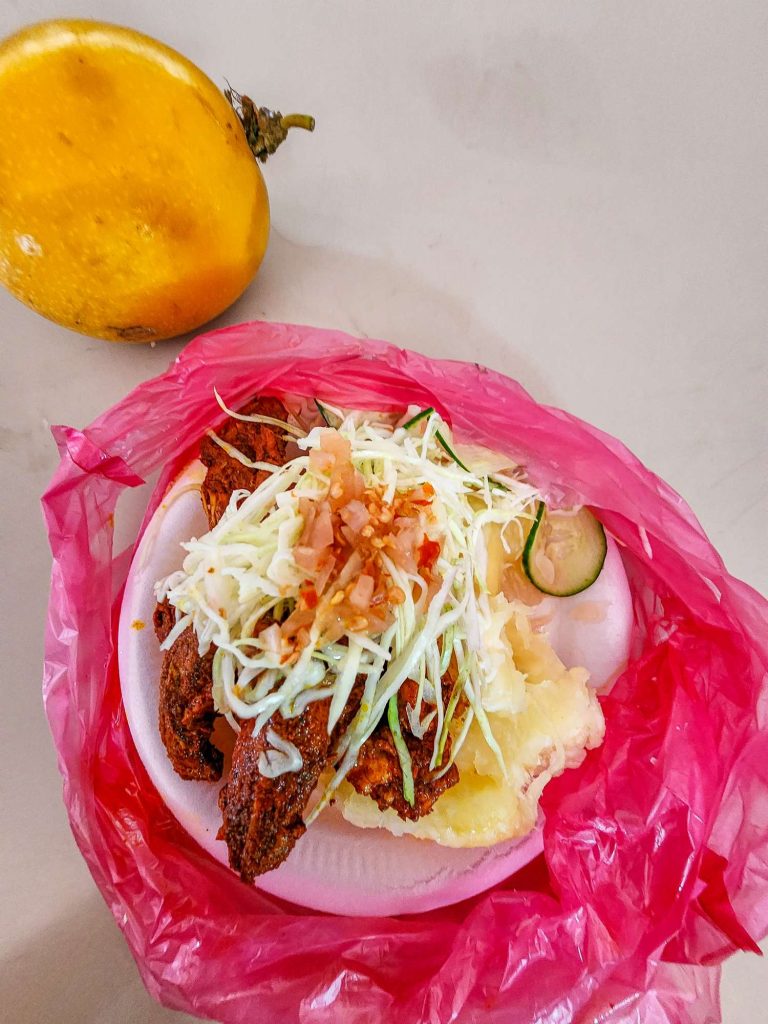
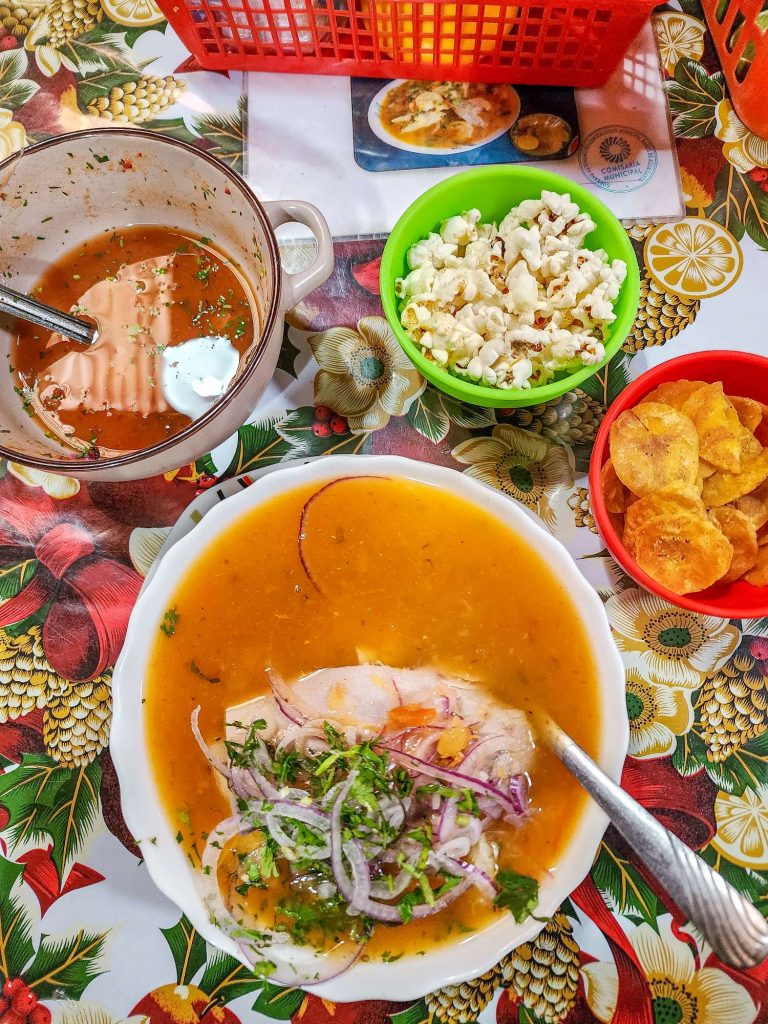
As for food in Nicaragua, there are plenty of delicious options to try. Here are some must-try dishes and recommended restaurants:
- Gallo pinto: a traditional dish made of rice and beans, often served for breakfast. You can find it at most local eateries.
- Nacatamales: similar to tamales, but made with corn dough and filled with meat, vegetables, and spices. You can find them at street food vendors or local restaurants.
- Vigorón: a popular street food made with boiled yucca, pickled cabbage, and chicharrón (fried pork rinds). Try it at Mercado Oriental in Managua, Mercado in Leon, and/or homemade at any residential street in Granada.
- Sopa de mondongo: a soup made with tripe, vegetables, and spices. You can find it at most local eateries.
- Seafood: Nicaragua has a long coastline, so seafood is plentiful and delicious. Try it at El Timón in Granada or any coastal town.
In terms of restaurants, here are some recommendations:
- Pita Pita in Granada: Best falafel wrap with a drink $5 can’t beat that!
Restaurante La Terraza in Granada: great for traditional Nicaraguan food and a lovely view of the city. - Café de los Sueños in Granada: a popular spot for breakfast and lunch with a beautiful courtyard
- El Zopilote in Ometepe: an eco-lodge and restaurant with delicious vegetarian and vegan options.
- La Cueva del Buzo in San Juan del Sur: a seafood restaurant with stunning views of the ocean.
- Asados El Gueguense in Managua: a casual restaurant with delicious grilled meats and traditional dishes.
Highlights in Leon
During 7 days in Nicaragua solo travel I stayed 2 days in Leon and managed to explore the local town with Leon Cathedral and some of the places below.
- Leon Cathedral: This impressive cathedral is the largest in Central America and a must-see attraction in Leon. Recommend paying $2 to go up on the roof for the view of the town and volcanos around. (white one pics above)
- Museum of the Revolution: Learn about Nicaragua’s revolutionary history at this museum, which is housed in the former presidential palace.
- Ruben Dario Museum: This museum is dedicated to Nicaragua’s most famous poet, Ruben Dario, and showcases his life and work.
- Art galleries: Leon has a thriving arts scene, and there are several galleries and studios worth visiting, including the Ortiz-Gurdian Foundation and the Fundacion Casa de los Tres Mundos.
- Cerro Negro volcano: Located just outside of Leon, Cerro Negro is an active volcano that’s popular for hiking and sandboarding.
- Juan Venado Island Nature Reserve: This protected area is home to a variety of wildlife, including sea turtles, crocodiles, and birds. Visitors can take a boat tour to explore the mangroves and beaches.
- Central Market: This bustling market is a great place to experience local culture and try traditional Nicaraguan food.
- Sutiaba neighborhood: This historic neighborhood in Leon is known for its colonial architecture and traditional crafts. Visitors can see artisans at work and visit the Sutiaba Museum.
- Flor de Cana Rum Distillery: This famous Nicaraguan rum is made in Chichigalpa, which is about an hour from Leon. Visitors can take a tour of the distillery to see how it’s made and sample some of the rum.
- Los Maribios Range: This range of volcanoes is located near Leon and offers stunning views and opportunities for hiking and exploring.
Highlights in Granada
On this 7 days in Nicaragua solo travel, I stayed 2 days in Granada initially and then went to Ometepe in the south but when I realized my passport was missing, I had to backtrack all the way to Managua, the capital city to apply for an emergency passport. (I will write a separate post on the process of it)
As I wanted to avoid busy Managua city, I chose to wait for my emergency passport in Granada. It was about an hour’s bus ride from the Consulate office in Managua to Granada which wasn’t too bad and a week later the emergency passport finally arrived from Mexico. So I ended up staying here longer which actually forced me to slow down and enjoy daily life for a bit.
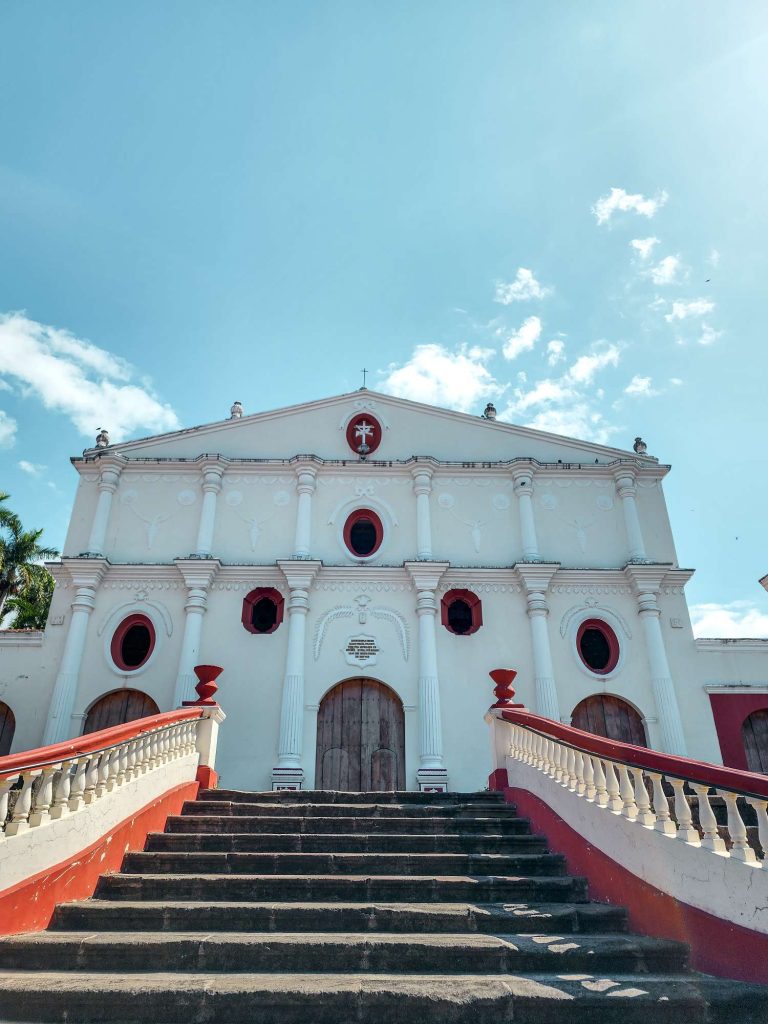


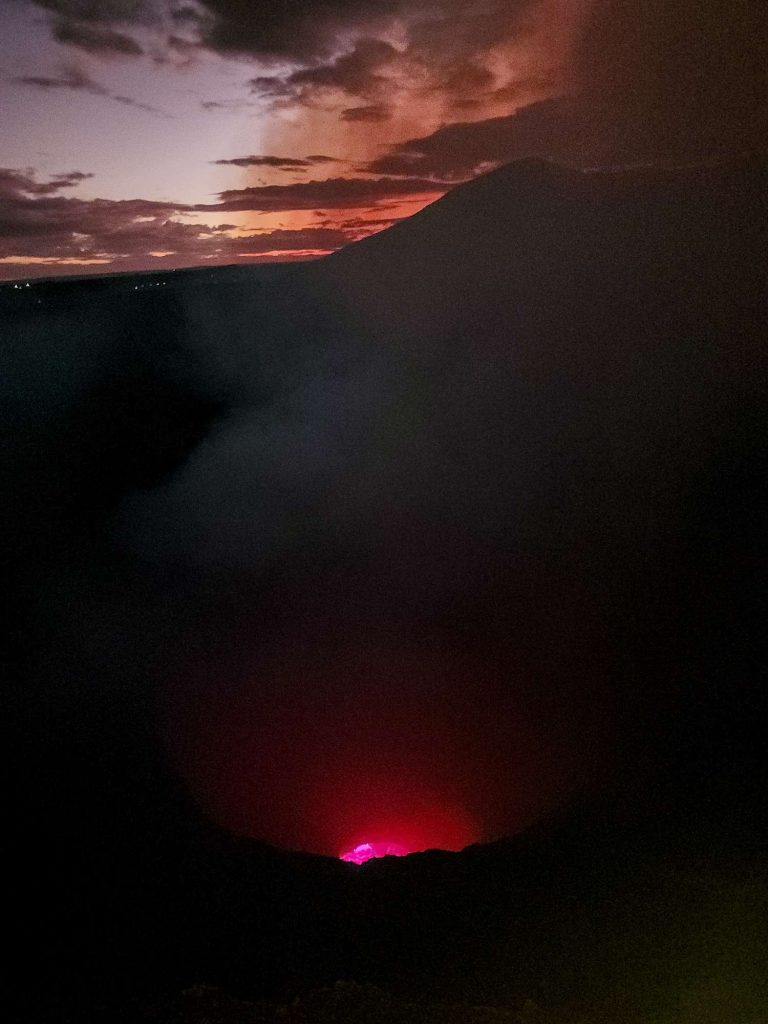

- Granada Cathedral: This stunning cathedral is one of the most iconic landmarks in Granada and is worth a visit for its architecture and historical significance. Additionally, you can pay to go up the bell tower of the cathedral for a great view of the city and surrounding area.
- Calle La Calzada: This pedestrian street in the heart of Granada is lined with restaurants, bars, and shops and is a great place to soak up the city’s lively atmosphere.
- Mi Museo: This museum showcases the private collection of Granada resident Karen Gritzma, featuring pre-Columbian ceramics, colonial-era paintings, and other historical artifacts.
- Lake Nicaragua: Granada sits on the shores of this massive lake, which is home to hundreds of small islands and offers opportunities for boating, fishing, and birdwatching.
- Masaya Market: This market, located just outside of Granada, is a great place to shop for local crafts and souvenirs, including ceramics, hammocks, and textiles.
- Las Isletas: These small islands in Lake Nicaragua can be explored by boat tour and offer opportunities for birdwatching and swimming.
- Iglesia de la Merced: This colonial-era church is known for its bright yellow facade and impressive bell tower, which offers great views of the city.
- Chocolate Museum: This museum, located in a restored colonial-era home, offers tours and tastings of Nicaraguan chocolate.
- Laguna de Apoyo: This volcanic crater lake, located about 30 minutes from Granada, offers opportunities for swimming, kayaking, and hiking.
- Mombacho Volcano: This active volcano is located just outside of Granada and offers opportunities for hiking and ziplining, as well as stunning views of Lake Nicaragua and the surrounding countryside.
Bonus tip: Granda has a secret Rave party on Fridays that runs in a Treehouse Hostel, among the forest at the base of Mombacho Volcano! 25$ for tickets and sells fast
Highlights in Ometepe
Lastly, during my 7 days in Nicaragua solo travel I spent 2 days on the beautiful island of Ometepe. It’s a unique destination in Nicaragua, located in the middle of Lake Nicaragua! The island is dominated by two large volcanoes, Concepción and Maderas, which give it its distinctive infinity sign shape.
In addition to the stunning volcanic landscape, Ometepe offers visitors a wealth of natural and cultural attractions to explore. The island is home to a number of beautiful beaches, waterfalls, and nature reserves, where visitors can hike, swim, and spot wildlife such as monkeys, birds, and butterflies.




Ometepe is a beautiful and unique destination in Nicaragua! Located in the middle of Lake Nicaragua, the island is dominated by two large volcanoes, Concepción and Maderas, which give it its distinctive infinity sign shape.
In addition to the stunning volcanic landscape, Ometepe offers visitors a wealth of natural and cultural attractions to explore. The island is home to a number of beautiful beaches, waterfalls, and nature reserves, where visitors can hike, swim, and spot wildlife such as monkeys, birds, and butterflies.
Ometepe also has a rich cultural heritage, with pre-Columbian petroglyphs, ancient ruins, and a vibrant artisan community that produces traditional ceramics, textiles, and other handicrafts. Visitors can learn about the island’s history and culture at local museums and cultural centers, or by attending one of the many festivals and celebrations that take place throughout the year.
Overall, Ometepe is a destination that offers something for everyone, whether you’re looking for adventure, relaxation, or cultural immersion.
Here are some of the top highlights to visit in Ometepe:
- Concepcion Volcano: This active volcano is one of the most prominent features of Ometepe’s landscape and offers opportunities for hiking and exploring.
- Ojo de Agua: This natural swimming pool is fed by underground springs and is a refreshing place to cool off on a hot day.
- Charco Verde Nature Reserve: This nature reserve offers hiking trails, birdwatching opportunities, and a beach with views of the Concepcion Volcano.
- San Ramon Waterfall: This waterfall is located in the hills of Ometepe and is a beautiful spot for a hike and a swim.
- Punta Jesus Maria: This narrow spit of land juts out into Lake Nicaragua and offers stunning views of the lake and surrounding landscape.
- Altagracia: This small town is home to a number of historical and cultural sites, including the Altagracia Church, which features murals depicting the island’s history.
- Museo El Ceibo: This museum offers exhibits on Ometepe’s history and culture, as well as a collection of pre-Columbian artifacts.
- Finca Magdalena: This coffee farm offers tours and tastings of Nicaraguan coffee, as well as a chance to learn about the coffee-making process.
- Santo Domingo Beach: This black-sand beach is a popular spot for swimming, sunbathing, and relaxing.
- Los Ojos de Agua: This natural spring offers crystal clear water to swim in, with a picnic area and facilities for visitors.
- Playa Mango: One of my fav spots in Omtepe, it offers a great view of the Conception Volcano, food, drinks, and also a decent place to do some work!
These are just a few of the many highlights to visit in Ometepe, so be sure to explore and discover more of what this beautiful island has to offer.
6. Costa Rica (3 Days 3 Nights)

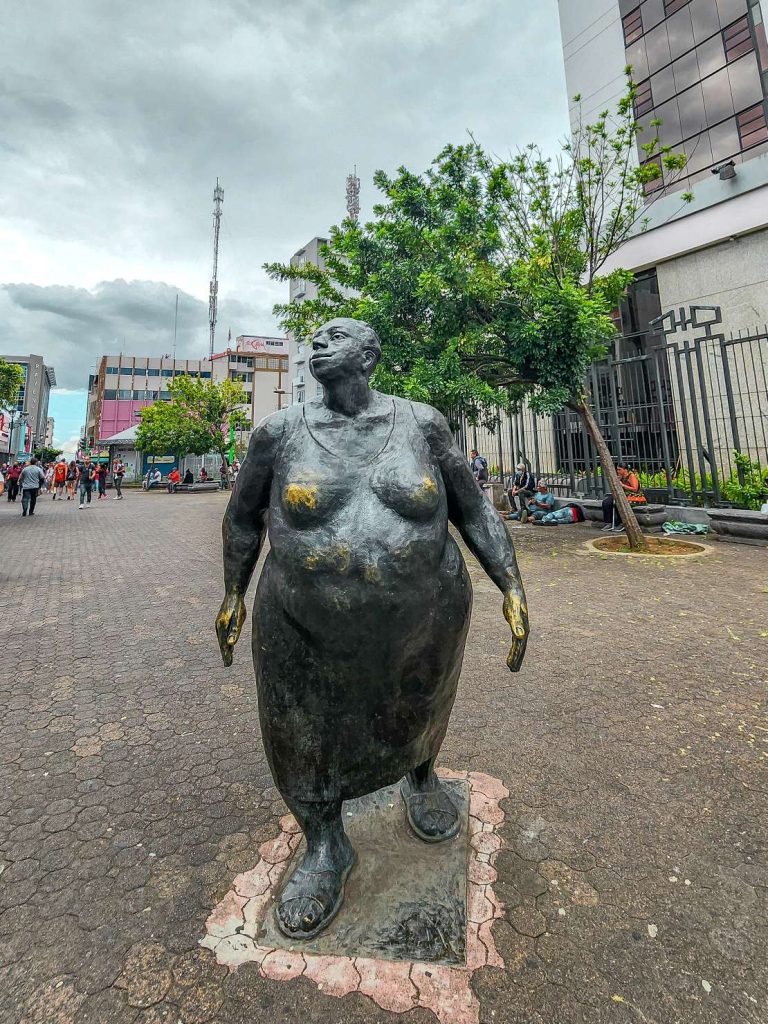
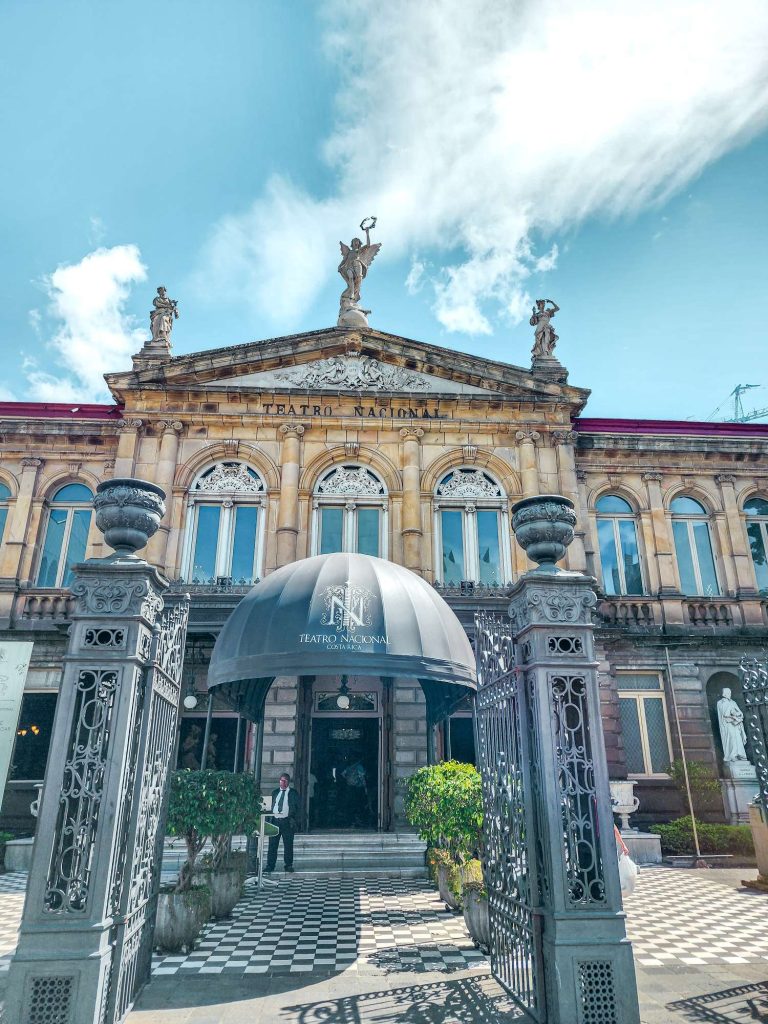

3 day Costa Rica Itinerary
Costa Rica is a small country located in Central America, bordered by Nicaragua to the north and Panama to the south. Known for its natural beauty, biodiversity, and eco-tourism opportunities, Costa Rica attracts millions of visitors every year. Its diverse landscape includes lush rainforests, active volcanoes, stunning beaches, and rugged mountains.
My goal for this central America trip was to see something unique in each of these 7 countries. So I skipped Monteverde Cloud Forest, La Fortuna, and Manuel Antonio National Park as have seen something similar with mountains, and hanging bridges many times before. Plus I had to spend 7 days extra waiting for my emergency passport in Nicaragua so I didn’t mind skipping the north of Costa Rica for the Capital city, & the coast. (more on this below)
How to go from Granada, Nicaragua to San Jose, Costa Rica?
There are a few different transportation options for traveling from Granada, Nicaragua to San Jose, Costa Rica:
- Bus: You can take a direct bus from Granada to San Jose, which usually takes around 8-10 hours. The bus journey involves crossing the border between Nicaragua and Costa Rica, which can take some time due to immigration procedures. There are several bus companies that operate this route, including Tica Bus, Nicabus, and TransNica.
I chose this option with an early start which meant I’d have to be at the bus stop in Granada at 530 A.M. You can buy the ticket on their website and take a taxi to the bus stop as it’s lil off the main square. was planning on walking but I cbb in the early morning as it was still dark & chilly.
Also, when I arrived in San Jose, had to take a taxi to the hostel because the bus wasn’t running frequently & again i cbb waiting around forever at the terminal. - Private Shuttle: Another option is to hire a private shuttle or taxi to take you from Granada to San Jose. This can be more expensive than taking the bus, but it offers the convenience of door-to-door service and may be faster.
- Fly: If you’re looking for a quicker and more convenient option, you can fly from Managua, Nicaragua to San Jose, Costa Rica. There are several airlines that operate this route, including Copa Airlines and Avianca. You can either take a taxi or shuttle from Granada to the airport in Managua.
Regardless of which option you choose, it’s important to check the latest travel advisories and border crossing requirements for Nicaragua and Costa Rica.
Is Costa Rica safe for solo travellers?
Costa Rica is generally considered to be a safe destination for solo travelers. The country has a stable democracy, a low crime rate compared to other Latin American countries, and a friendly and welcoming culture. However, as with any destination, it’s important for solo travelers to take some basic safety precautions:
- Be aware of your surroundings: Keep your belongings close to you and avoid walking alone in unfamiliar or isolated areas, especially at night.
- Use common sense: Don’t flaunt expensive jewelry or electronics, and avoid carrying large amounts of cash.
- Research your accommodations: Choose reputable hotels or hostels with good reviews and in safe neighborhoods. (recommended ones below)
- Learn some Spanish: Knowing some basic Spanish can help you communicate with locals and navigate more easily.
- If feeling unsure consider taking organized tours: Joining organized tours or activities can be a great way to meet other travelers and stay safe while exploring.
Overall, solo travelers should exercise caution and common sense while traveling in Costa Rica but should feel confident in exploring this beautiful and welcoming country.
Which hostels to book in San Jose?
There are many hostels in San Jose, Costa Rica that cater to different budgets and travel styles. Here are some popular options:
- Costa Rica Backpackers Hostel: This hostel is located in downtown San Jose and offers a variety of private and shared rooms, as well as a communal kitchen and lounge area.
- Selina San Jose: This stylish hostel is located in the trendy Barrio Otoya neighborhood and features a rooftop terrace, co-working space, and on-site restaurant.
- Hostel Casa del Parque: This eco-friendly hostel is located near the National Museum and features a garden, terrace, and communal kitchen.
- Casa Escalante Hostel: This budget-friendly hostel is located in the historic Barrio Amón neighborhood and features a communal kitchen and lounge area.
- Gaudys Eco Hotel: This upscale hostel is offers private and shared rooms, as well as a bar and outdoor pool.
These are just a few options among the many hostels available in San Jose. It’s always a good idea to read reviews, compare prices, and choose a hostel that fits your budget and travel style.
Highlights in San Jose

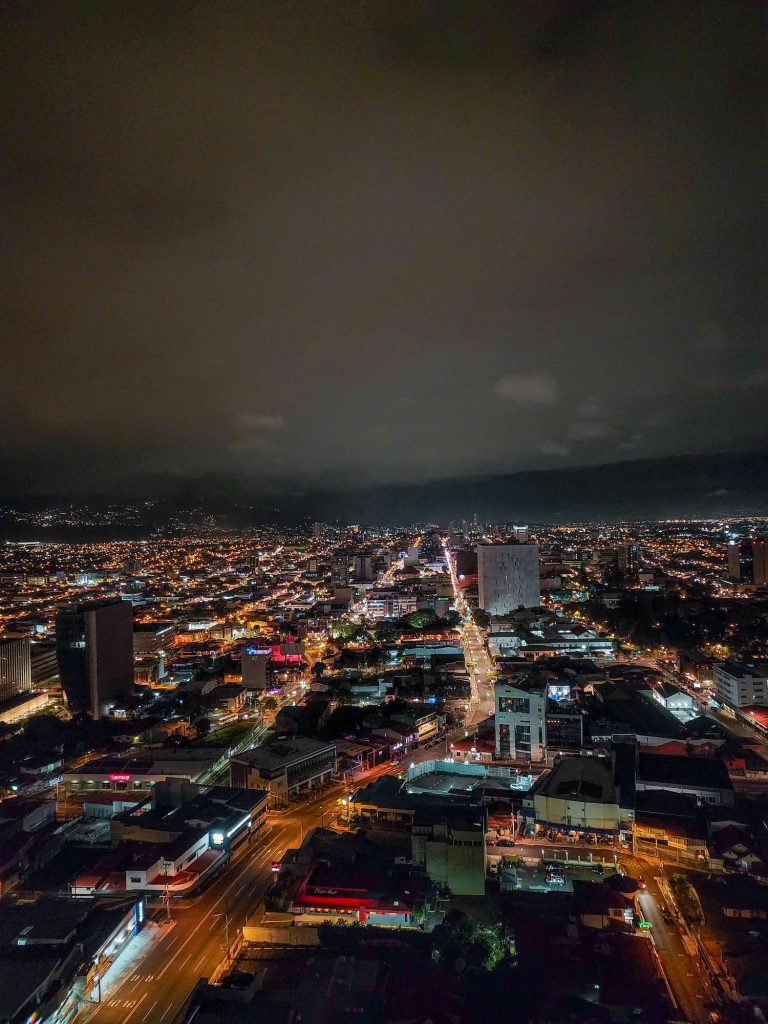
San Jose is the capital city of Costa Rica, located in the center of the country. It has a population of around 340,000 people and is the political, economic, and cultural center of Costa Rica. The city is home to many museums, art galleries, and cultural centers, as well as a vibrant nightlife. Plus, it is surrounded by natural beauty, including national parks, forests, and volcanoes, making it a great destination for outdoor activities such as hiking and whitewater rafting.
With its rich cultural heritage and natural attractions, San Jose, Costa Rica is a popular destination for tourists seeking both adventure and cultural experiences. Here are some of the top highlights to visit in San Jose:
- National Museum of Costa Rica: Housed in a historic fort, the museum offers exhibits on the country’s history, art, and culture.
- Gold Museum: This museum showcases an extensive collection of pre-Columbian gold artifacts and offers a glimpse into the history of the indigenous peoples of Costa Rica.
- Central Market: A bustling indoor market offering a variety of local foods, crafts, and souvenirs.
- National Theater: This beautiful theater was built in 1897 and features ornate decor and an impressive performance schedule.
- La Sabana Metropolitan Park: A large park offering green space, walking trails, and recreational facilities in the heart of the city.
- Jade Museum: A museum featuring a collection of jade artifacts from ancient civilizations in Costa Rica and Central America.
- San Jose Cathedral: A historic cathedral featuring beautiful stained glass windows and located in the heart of downtown San Jose.
- Costa Rican Art Museum: This museum showcases modern and contemporary art by Costa Rican artists.
- Mercado de Artesanias: An outdoor market offering a variety of handmade crafts and souvenirs from all over Costa Rica.
- Barrio Amón: A historic neighborhood with beautiful colonial architecture, home to many museums, art galleries, and cafes.
Overall, San Jose is a vibrant and diverse city with a rich cultural heritage and plenty of attractions to explore.
Which hostels to book in Puerto Viejo?
Puerto Viejo has several hostels to choose from, depending on your budget and preferences. Here are some popular options that you may consider:
- Rocking J’s Hostel: This hostel is located right on the beach and features colorful and unique accommodations, as well as a lively atmosphere with live music and events.
- Selina Puerto Viejo: This trendy hostel is located in the town center and features stylish and comfortable private and shared rooms, as well as a swimming pool, bar, and restaurant.
- Pagalu Hostel: This eco-friendly hostel is located near the beach and features private and shared rooms, as well as a garden and communal kitchen.
- The Lionfish Hostel: This budget-friendly hostel is located near the town center and features private and shared rooms, as well as a rooftop terrace and bar.
- Kalunai Hostel: This hostel is located near the beach and features private and shared rooms, as well as a communal kitchen and lounge area.
These are just a few options among the many hostels available in Puerto Viejo. It’s always a good idea to read reviews, compare prices, and choose a hostel that fits your budget and travel style.
Highlights in Puerto Viejo
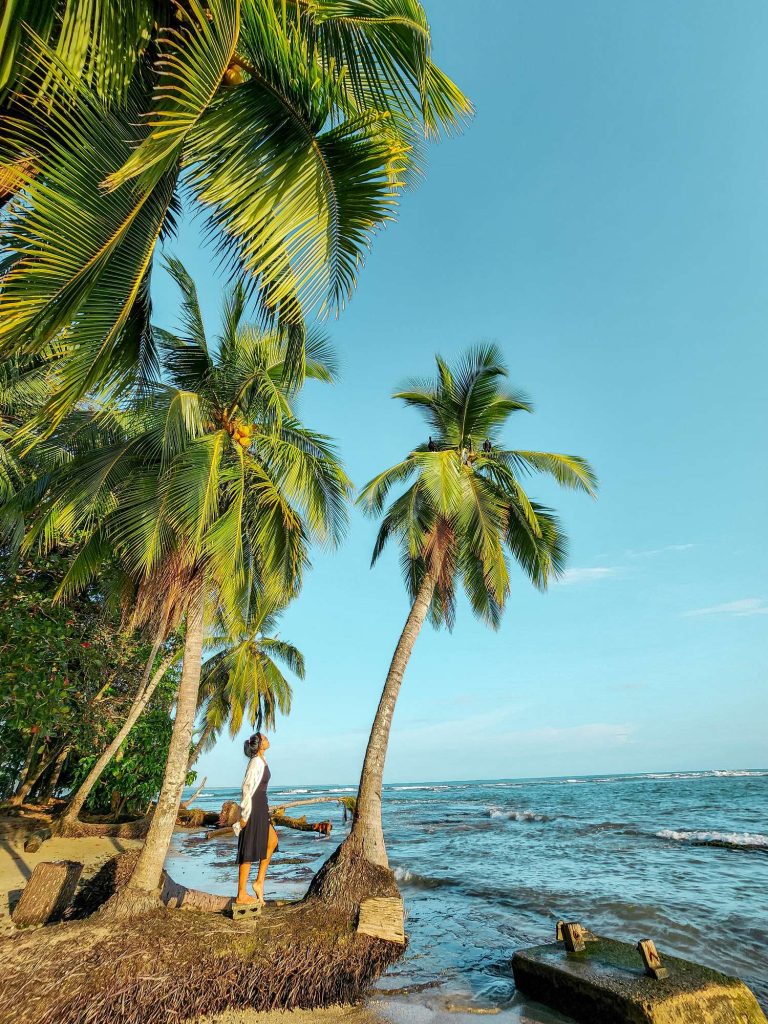
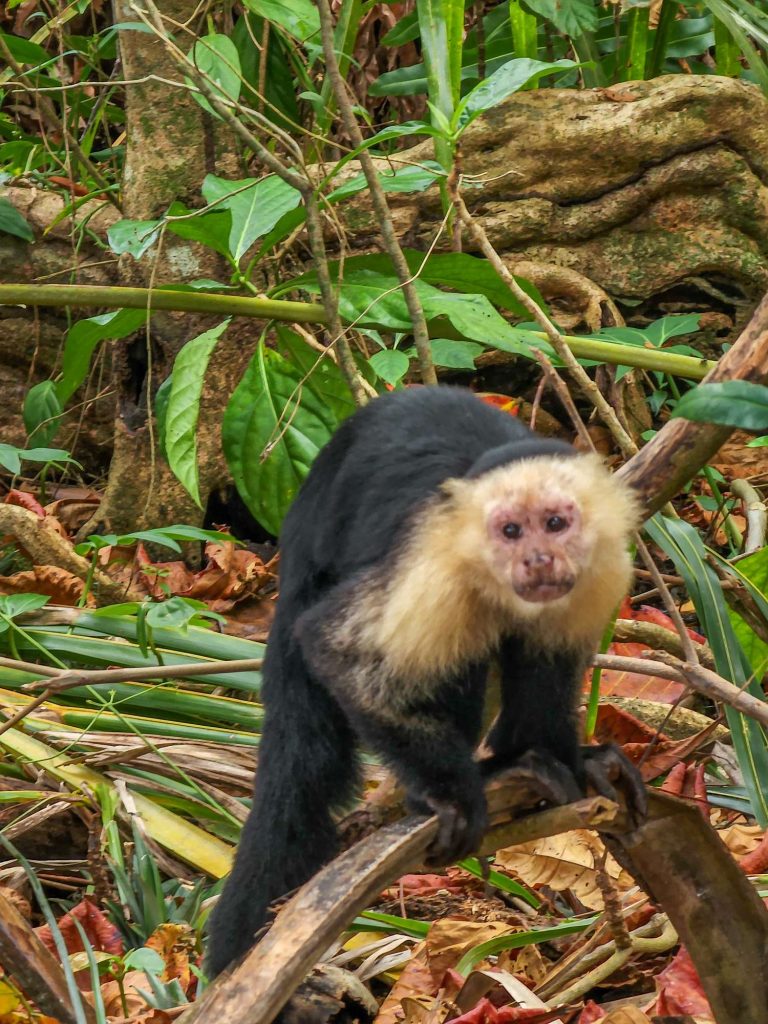

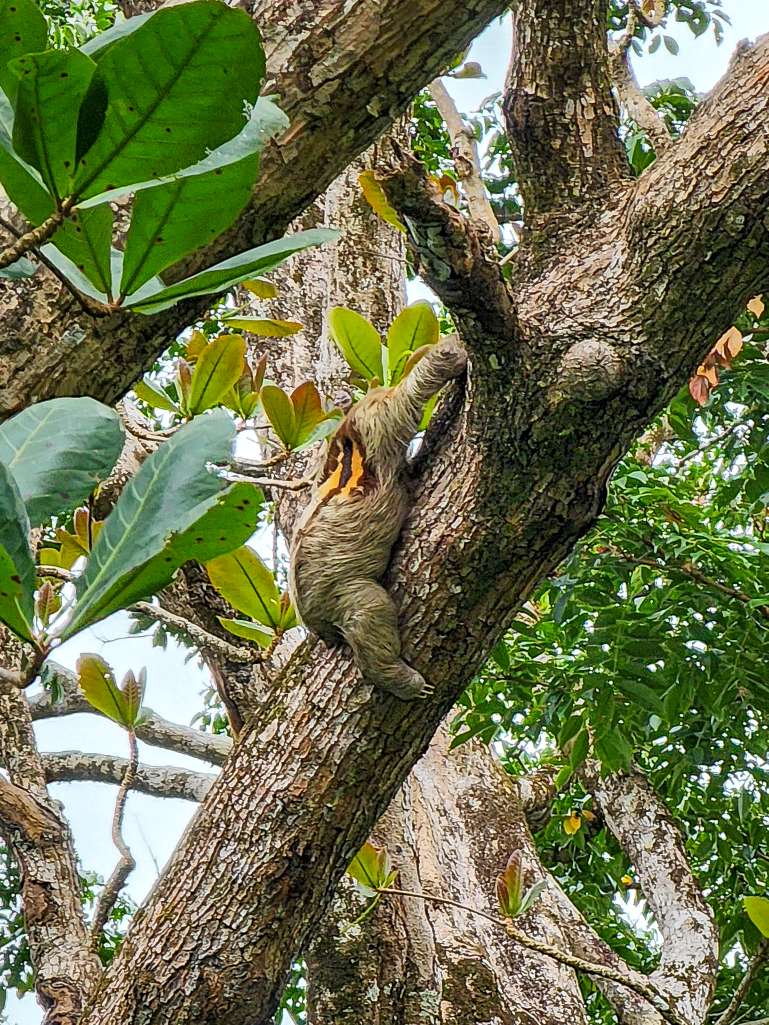
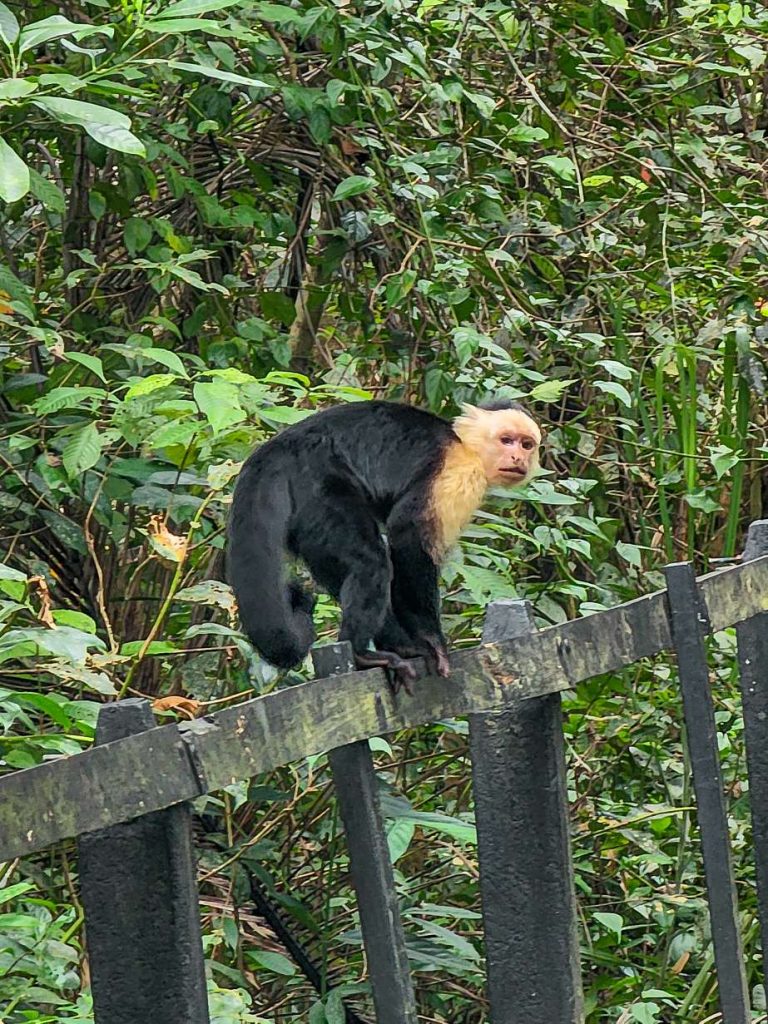
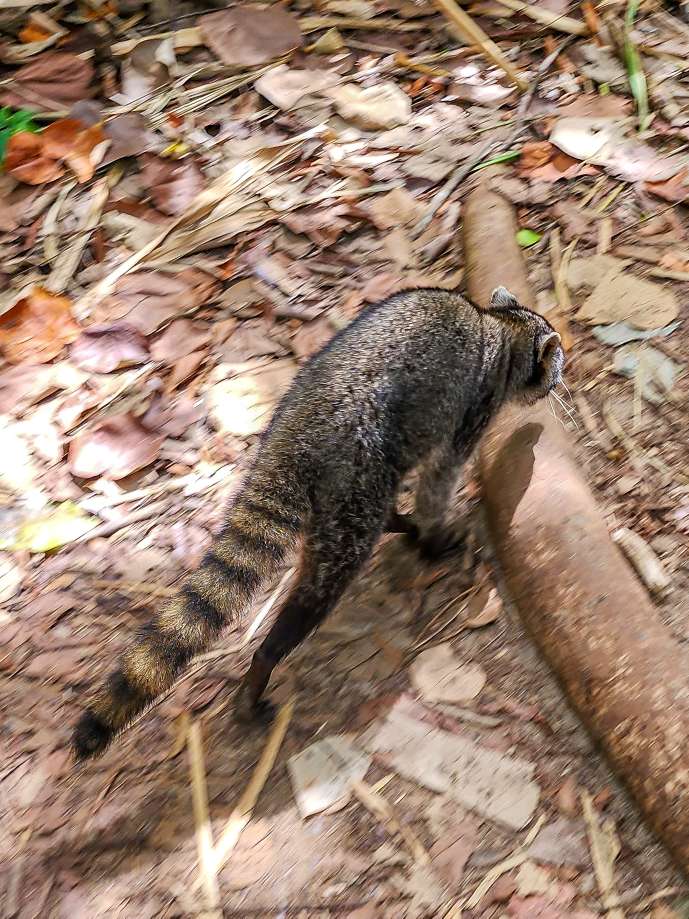

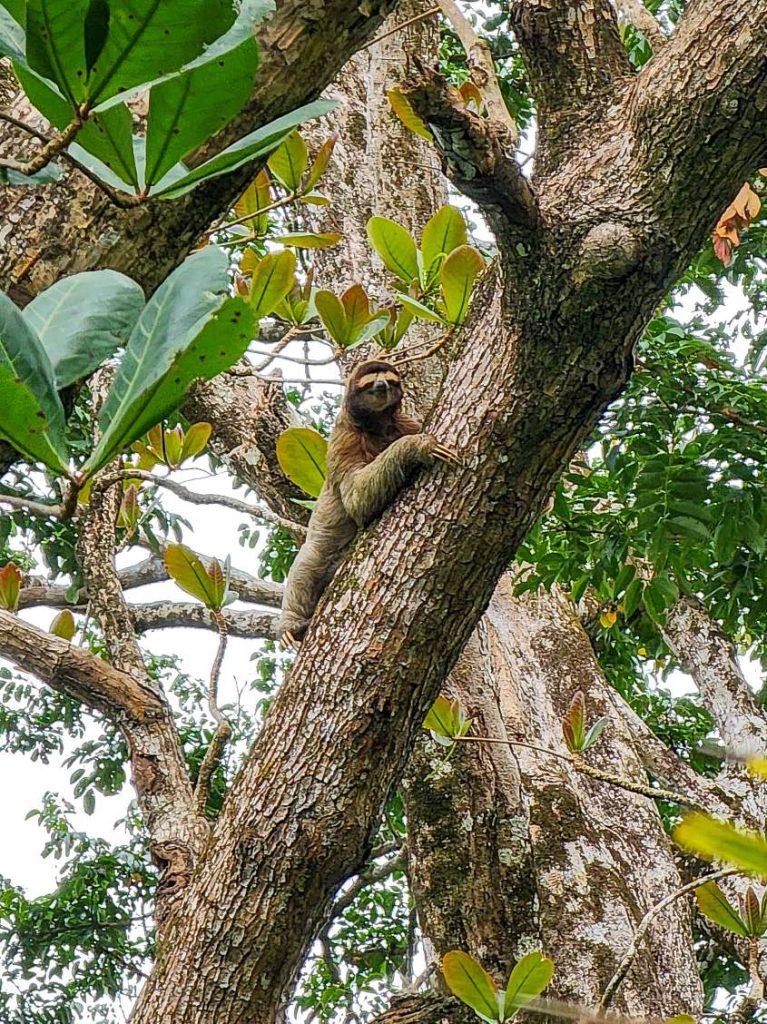

I spent 2 days in San Jose and then went to Puerto Viejo which is a charming town located on the country’s Caribbean coast. Puerto Viejo is known for its laid-back vibe, friendly locals, and stunning beaches. It’s a great place to relax, unwind, and soak up the sun but the main reason I came here was to check out the National Park,
The town is also famous for its many local restaurants and bars that serve up delicious Caribbean cuisine and feature live music performances. Visitors can enjoy fresh seafood, and tropical cocktails, and dance the night away to the sounds of reggae and calypso music. Btw kinda felt like Bangkok & Bali a bit in the main town..
Here are some of the top highlights to visit in Puerto Viejo:
- Beaches: Puerto Viejo is known for its beautiful beaches, including Playa Cocles, Playa Chiquita, and Punta Uva. These beaches offer great opportunities for swimming, surfing, and sunbathing.
- Jaguar Rescue Center: This animal rescue center is dedicated to rehabilitating and releasing injured or orphaned wildlife, including jaguars, monkeys, sloths, and birds.
- Cahuita National Park: A beautiful national park offering hiking trails, beaches – swim, snorkel, and sunbathe, and opportunities for wildlife watching – monkeys, sloths, and toucans. Entry is based on a donation & one short bus ride away from Puerto Viejo but if you are short in time, it’s a good idea to get off the bus from Nicaragua at Cahuita National Park, (the bus stop is literally 5 mins walk away from the entrance of NP, store your bag at the ticket office or spend a night here – few hostels) explore and then get on a bus to the town of Puerto Viejo upon return from the same bus terminal.
- BriBri Indigenous Reserve: A nearby indigenous reserve offering opportunities to learn about the BriBri culture and visit waterfalls and cacao plantations.
- Surfing: Puerto Viejo is a popular surfing destination, with several surf schools and rental shops offering lessons and equipment.
- Nightlife: Puerto Viejo has a lively nightlife scene, with bars and clubs offering live music and dancing.
- Sloth Sanctuary: A sloth rescue center located a short drive from Puerto Viejo, offering opportunities to see and learn about these unique animals.
- Caribeans Chocolate Factory: A small chocolate factory offering tours and workshops on the chocolate-making process, using locally sourced cacao.
Overall, Puerto Viejo is a laid-back and beautiful destination with plenty of opportunities for outdoor adventure, cultural experiences, and laid-back Caribbean charm.
Recommend food/drink in Costa Rica?


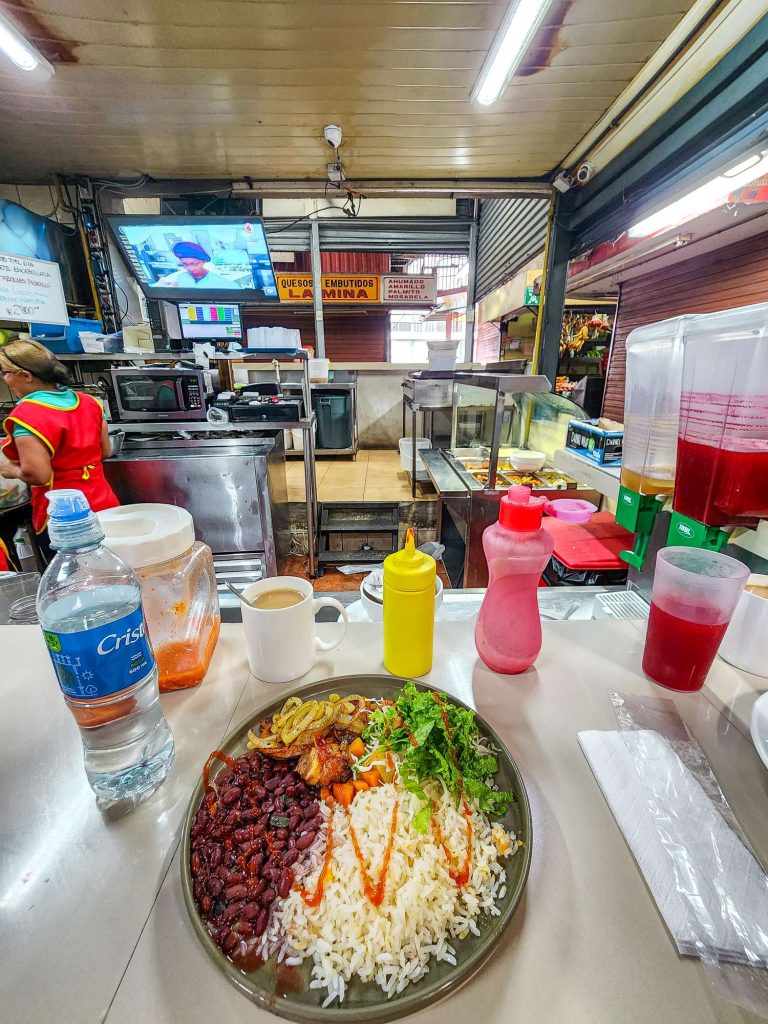
Costa Rican cuisine is diverse and flavorful, with many delicious dishes and drinks to try. Here are some popular foods and drinks to try while in Costa Rica:
- Gallo Pinto: This is a traditional Costa Rican breakfast dish made with rice and beans, often served with eggs, sour cream, and tortillas.
- Casado: This is a typical Costa Rican lunch or dinner dish that includes rice, beans, salad, and a choice of meat, such as chicken, beef, or fish.
- Ceviche: This is a popular seafood dish made with raw fish marinated in lime juice and mixed with onion, cilantro, and other seasonings.
- Chifrijo: This is a tasty appetizer made with rice, beans, fried pork, avocado, and pico de gallo.
- Arroz con leche: This is a sweet dessert made with rice, milk, sugar, and cinnamon.
As for drinks, Costa Rica is known for its coffee, which is grown in the highlands and is considered some of the best in the world. You can also try a variety of fruit juices, such as guanabana (soursop), mango, and papaya. Another popular drink is the guaro sour, made with local liquor called guaro, lime juice, and sugar.
Of course, there are many other delicious foods and drinks to try in Costa Rica, so be sure to explore and try new things during your visit
7. Panama (4 Days and 5 Nights)
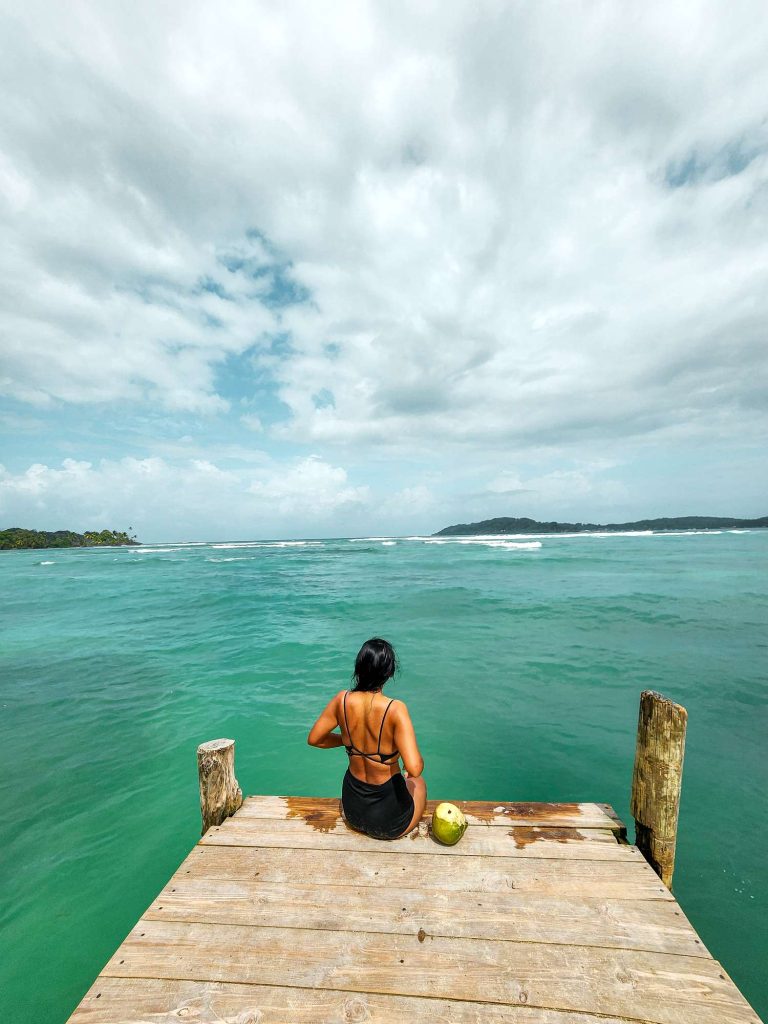

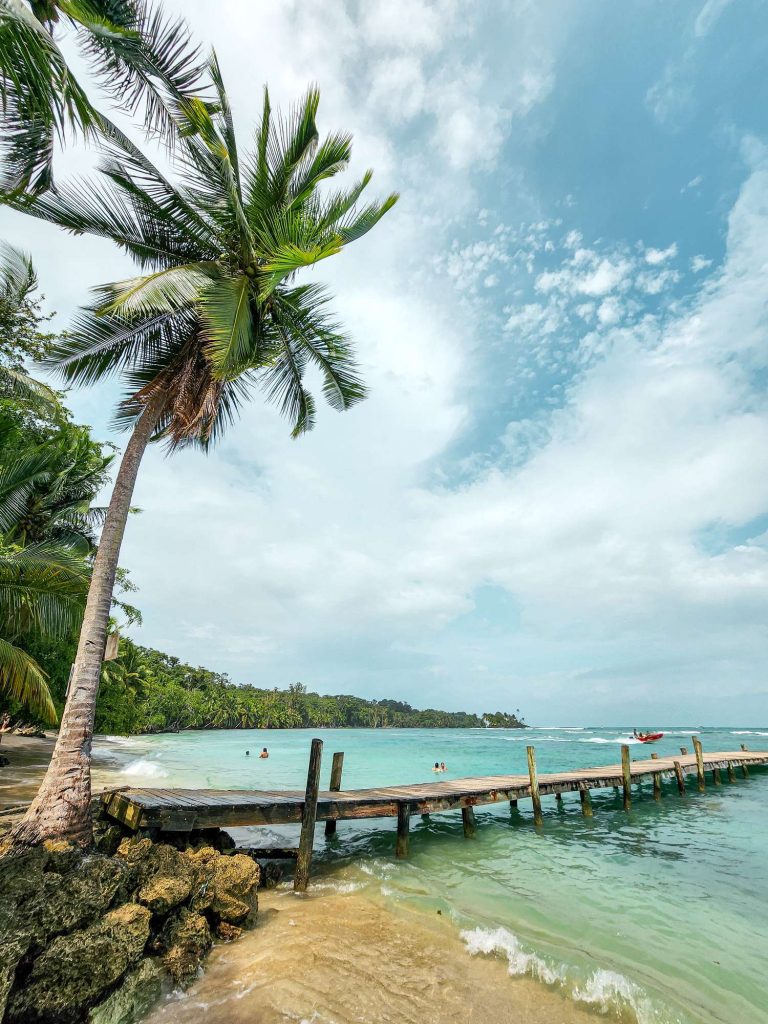
Finally the last country in this backpacking one month Central America itinerary. Panama is a Central American country situated between Costa Rica to the north and Colombia to the south. It is best known for the Panama Canal, which connects the Atlantic and Pacific Oceans and is a vital shipping route for global commerce. The country’s official language is Spanish, and its capital city is Panama City.
In addition to the Panama Canal, Panama is home to a diverse range of natural landscapes, from rainforests to beaches to mountains. The country also has a rich cultural heritage, with indigenous populations, Afro-Caribbean communities, and Spanish colonial influences all contributing to its unique identity. Overall, Panama offers visitors a blend of natural beauty, cultural richness, and modern amenities that make it a fascinating destination to explore.
How to go from Puerto Viejo, Costa Rica to Bocas Del Toro, Panama?
To travel from Puerto Viejo, Costa Rica to Bocas del Toro, Panama, you will need to take a combination of land and water transportation.
Before I share how to do it, I want to give you a heads-up that Costa Rica immigration will most likely ask for your exit plan. So, while waiting in the queue I bought a shuttle ticket from Costa Rica to Panama online because I knew my exact dates so that helped. Shuttle transport was a door-to-door service but it was around 50 USD! I met another traveler who had bought a cheaper shuttle but not sure if that went ahead as she mentioned they never got the confirmation email, mine came through and the company was very responsive however. ( I did have a second thought afterward that I may want to stay longer in Costa Rica but they were welcoming me changing dates- if you are interested the company is called Caribe Shuttle.
This is something to consider or buy a first-class plane flight and cancel WITHIN 24 hours for a full refund. I never used the other services online that provide fake. plane tickets so can’t advise on that.
With that said here’s an overview of the journey:
- Take a bus from Puerto Viejo to Sixaola: From Puerto Viejo, you can take a local bus (Autotransportes MEPE) to the town of Sixaola, which is located on the border between Costa Rica and Panama. The journey takes about 1.5 to 2 hours, depending on traffic and road conditions.
Recommend starting your day early & catch an earlier enough bus because the border is only open until 5 pm daily. Stamp out of Costa Rica - Cross the border: Walk across the bridge to the Panamanian side of the border. Be sure to have your passport and any necessary travel documents on hand to stamp In Panama
- Take a shared taxi to Almirante: After crossing the border, you can take a shared taxi to the town of Almirante, which is located on the coast of Panama. The journey takes about 30 to 45 minutes.
- Take a boat to Bocas del Toro: From Almirante, you can take a water taxi to the town of Bocas del Toro, which is located on the Isla Colón. The journey takes about 30 to 45 minutes, depending on the weather and sea conditions.
Overall, the journey from Puerto Viejo to Bocas del Toro can take several hours, and it’s important to plan ahead and make sure you have all the necessary travel documents and arrangements in place.
Is Panama safe for solo travellers?
Panama is generally considered a safe destination for solo travelers. While it has a relatively low crime rate, it’s still important to take appropriate safety precautions as you would when traveling to any destination. It’s recommended to be aware of your surroundings, especially in tourist areas, and to avoid carrying large sums of cash or wearing expensive jewelry. It’s also a good idea to keep your passport and other important documents in a safe place and to stay alert when using public transportation or walking alone at night.
What and Where to eat in Panama?
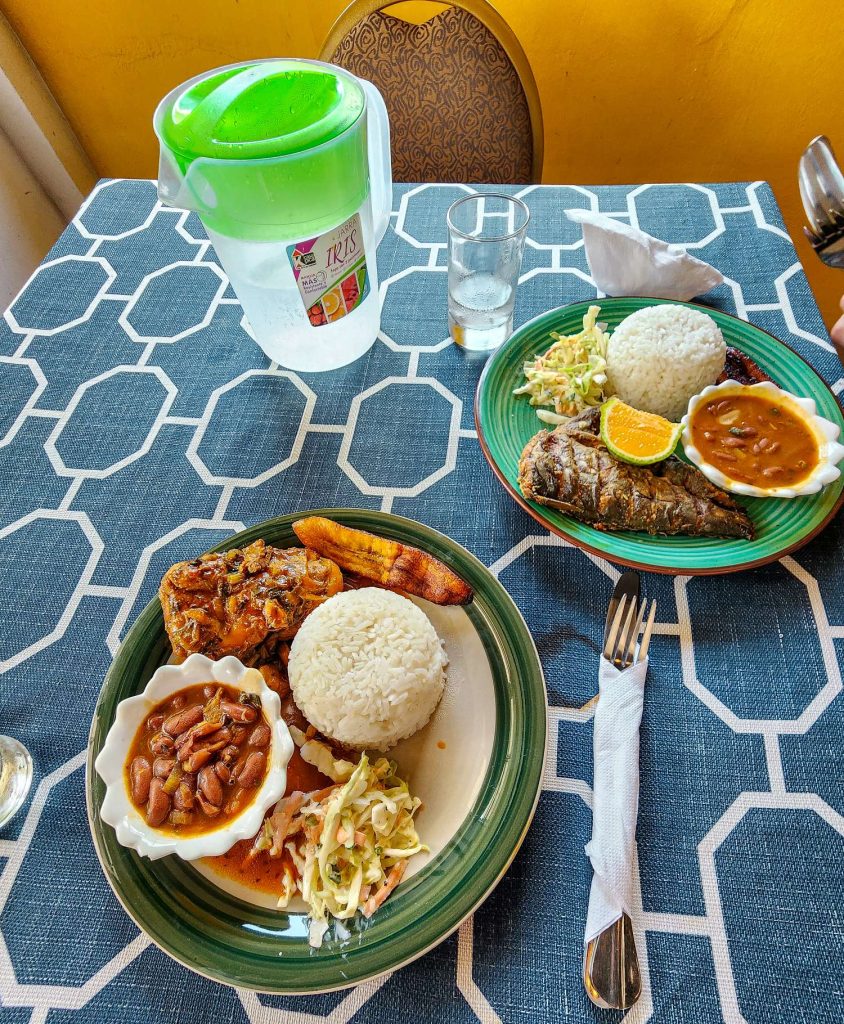
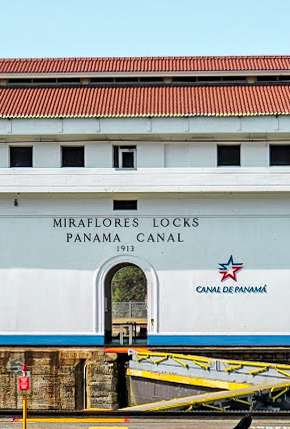
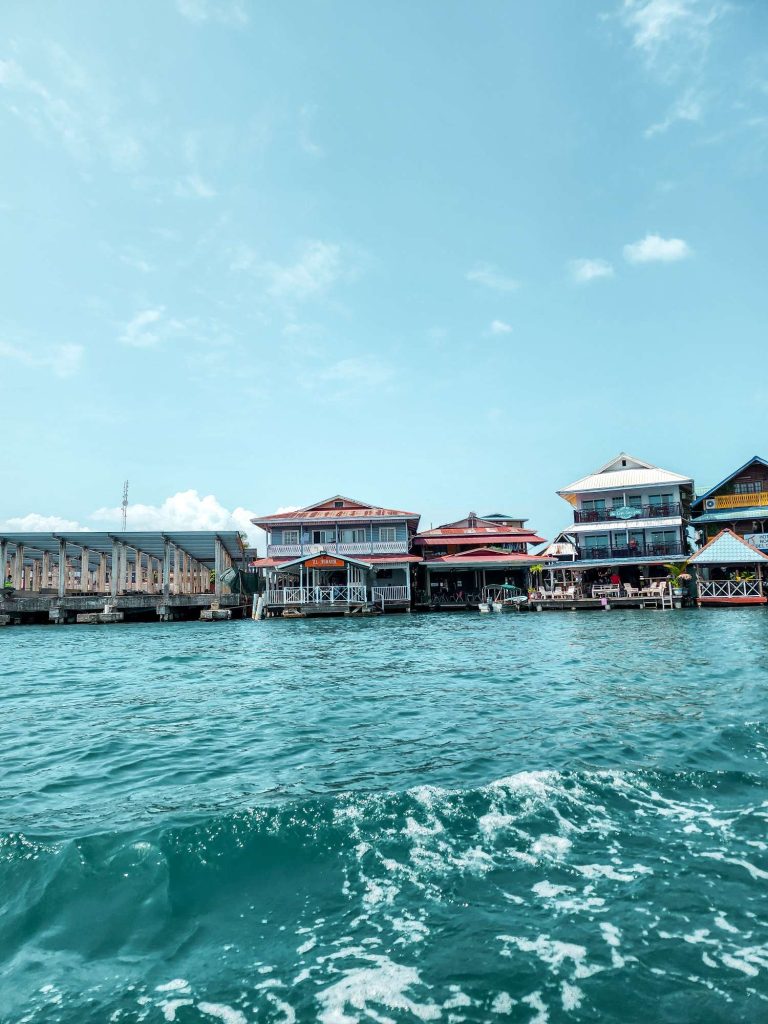
Panama offers a wide range of cuisine options, including traditional Panamanian dishes, as well as international cuisine from around the world. Here are some popular foods to try and places to eat in Panama:
- Sancocho: a hearty soup made with chicken, yucca, and other vegetables. It’s a staple in Panama and can be found in most local restaurants.
- Empanadas: a fried pastry filled with meat, cheese, or vegetables. They’re a popular snack or street food in Panama and can be found at many food stalls and local eateries.
- Ceviche: a seafood dish made with raw fish or shrimp marinated in lime juice, onions, and cilantro. It’s a refreshing dish that’s perfect for a hot day and can be found in many seafood restaurants in Panama City.
- Arroz con pollo: a classic dish of rice with chicken, onions, peppers, and other vegetables. It’s a filling and flavorful meal that’s popular in many Panamanian restaurants.
- Patacones: fried plantain slices that are often served as a side dish or appetizer. They’re crispy and delicious and can be found at many local restaurants and food stalls.
As for where to eat in Panama, here are some popular restaurants and food markets:
- Street Taco Bocas – This is a great spot for authentic Mexican street tacos in Bocas del Toro. They have a variety of delicious fillings and toppings, and the prices are very reasonable.
- Happy Mama’s Bocas – If you’re looking for healthy, organic food options in Bocas del Toro, Happy Mama’s is a great choice. They offer a variety of vegan and vegetarian dishes, as well as fresh juices and smoothies.
- In Anton Valley – On the main street recommend a hamburger place opposite the market (coconuts here) and local restaurants offering menu dias.
- Mercado de Mariscos: This seafood market in Panama City is a must-visit for seafood lovers. You can buy fresh fish and seafood to cook at home, or dine at one of the many stalls that serve ceviche, fried fish, and other seafood dishes.
- Mi Ranchito: a popular Panamanian restaurant with multiple locations in Panama City. They serve traditional dishes such as sancocho and arroz con pollo.
- Tinajas – Located in the heart of Panama City’s historic Casco Viejo district, Tinajas offers traditional Panamanian cuisine in a lively, festive atmosphere. They have live music and dancing on some nights, making it a great spot for a fun night out.
These are just a few of the many great places to eat in Panama. Whether you’re looking for street food or fine dining, there’s something for everyone in this diverse country.
Which hostels to stay in Bocas Del Toro, Panama?
I stayed 2 days and 2 nights in Bocas, another 2 days and 2 nights in Anton Valley, 1 night on the bus traveling from Bocas to Anton Valley, and 1 till mid night in Panama City to catch the next flight.
There are many great hostels to choose from in Bocas del Toro. Whether you’re looking for a social atmosphere or a quiet retreat, there’s a hostel to suit your needs and budget. Here are some recommended ones:
- Selina Bocas del Toro – This trendy hostel is located right on the beach and offers a variety of private and dormitory-style rooms. The hostel also has a pool, bar, and restaurant on-site, as well as a range of activities and events for guests.
- Spanish by the Sea – Located in the heart of Bocas Town and only 5 mins from the ferry dock. This hostel offers affordable dormitory-style rooms and private rooms. The hostel has a communal kitchen, a rooftop terrace, and Spanish lessons too.
- Twin Fin Hostels– This colorful hostel is located in a historic building in the heart of Bocas Town. The hostel offers private rooms and dormitory-style rooms, as well as a communal kitchen, rooftop terrace, and a lively bar on the ground floor.
- Bastimentos Hill Guest House – This small, family-run hostel is located just outside of Bocas Town, in a quiet, residential area. The hostel offers private rooms and dormitory-style rooms, as well as a communal kitchen and a lovely garden with hammocks and outdoor seating.
- Las Olas Hostel – This hostel is located just a short walk from Bocas Town. The hostel offers private rooms and dormitory-style rooms, as well as a communal kitchen, outdoor seating areas, and a range water sports activities.
Highlights in Bocas Del Toro, Panama

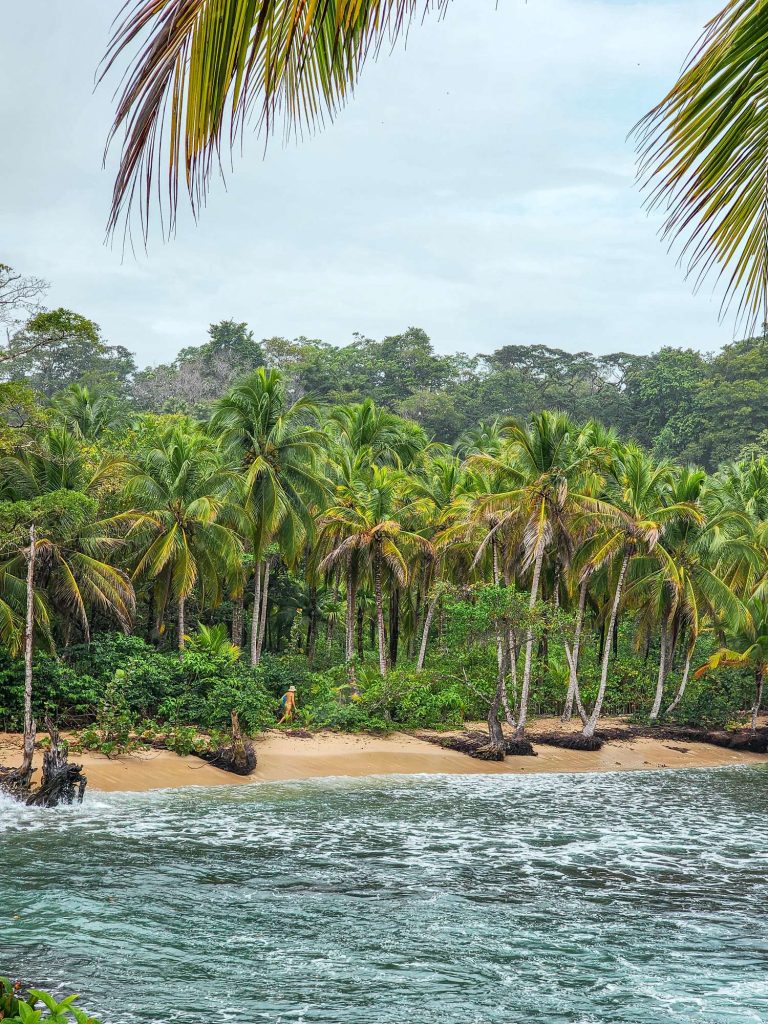
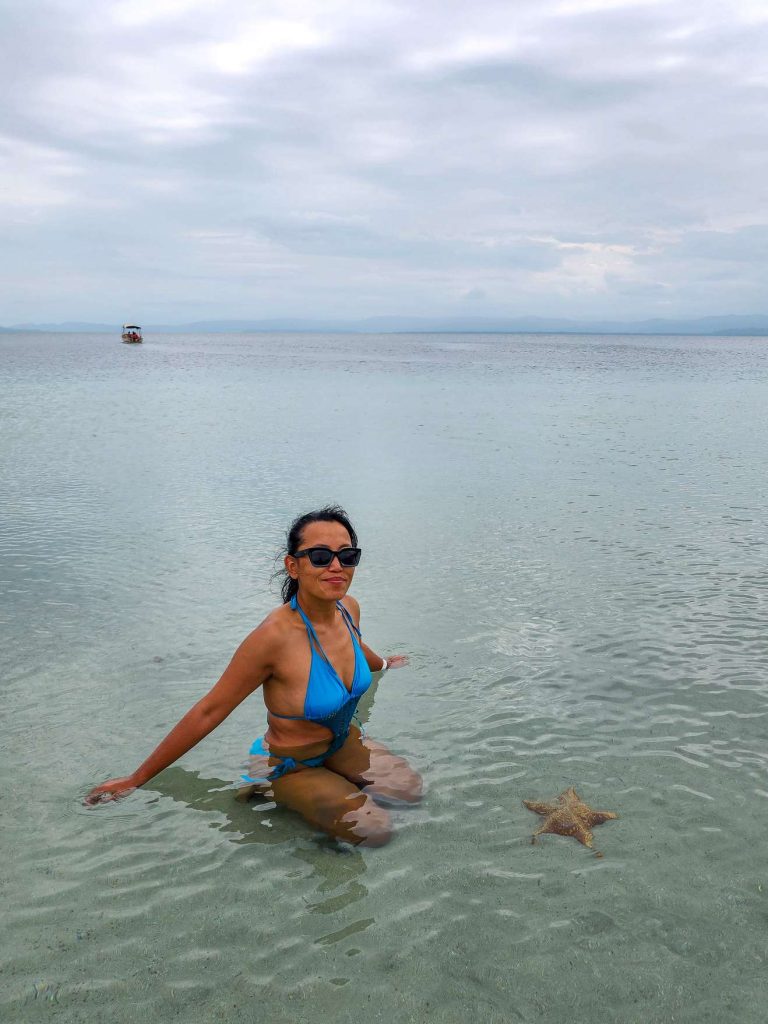
- Carenero Island – This picturesque island is just a short boat ride from Bocas Town, and is a great spot for swimming, sunbathing, and snorkeling. The island is known for its calm, crystal-clear waters, and beautiful coral reefs.
- Star Beach – Located on Isla Colon, Star Beach is another popular spot for swimming and sunbathing. The beach has soft, white sand and clear, shallow waters, making it a great place for families with young children.
- Bastimentos National Marine Park – This protected area encompasses a group of islands and coral reefs and is home to a diverse range of marine life. Visitors can take a boat tour or go snorkeling to see colorful fish, sea turtles, and other marine creatures.
- Red Frog Beach – Located on Isla Bastimentos, Red Frog Beach is one of the most famous beaches in Bocas del Toro. The beach gets its name from the tiny red frogs that inhabit the surrounding jungle. Visitors can relax on the beach, hike through the jungle, or take a guided tour to learn more about the local wildlife.
- Bocas Town – The main town on Isla Colon, Bocas Town is a colorful, lively place with a laid-back Caribbean vibe. Visitors can explore the town’s narrow streets, check out the local shops and restaurants, or take a boat tour to see the surrounding islands.
- Dolphin Bay – This sheltered bay on Isla San Cristobal is home to a large population of bottlenose dolphins. Visitors can take a boat tour to see the dolphins up close and learn more about these intelligent creatures.
These are just a few of the many highlights of Bocas del Toro. Whether you’re interested in beaches, wildlife, or local culture, there’s something for everyone in this beautiful part of Panama.
Which hostels to stay in in Anton Valley, Panama?
Anton Valley is a popular destination for nature lovers and adventurers in Panama. Here are some hostels you might want to consider when visiting Anton Valley:
- Hostal La Casa de Juan
- Bodhi Hostel & Lounge
- El Zumbito
- DondeJosé
- Valle Paradise
- El Valle de Anton La Chachalaca
These are just a few of the many great places to stay in Anton Valley. Whether you’re looking for a luxury spa experience or a budget-friendly guesthouse, there’s something for every type of traveler in this beautiful part of Panama.
Highlights in Anton Valley, Panama


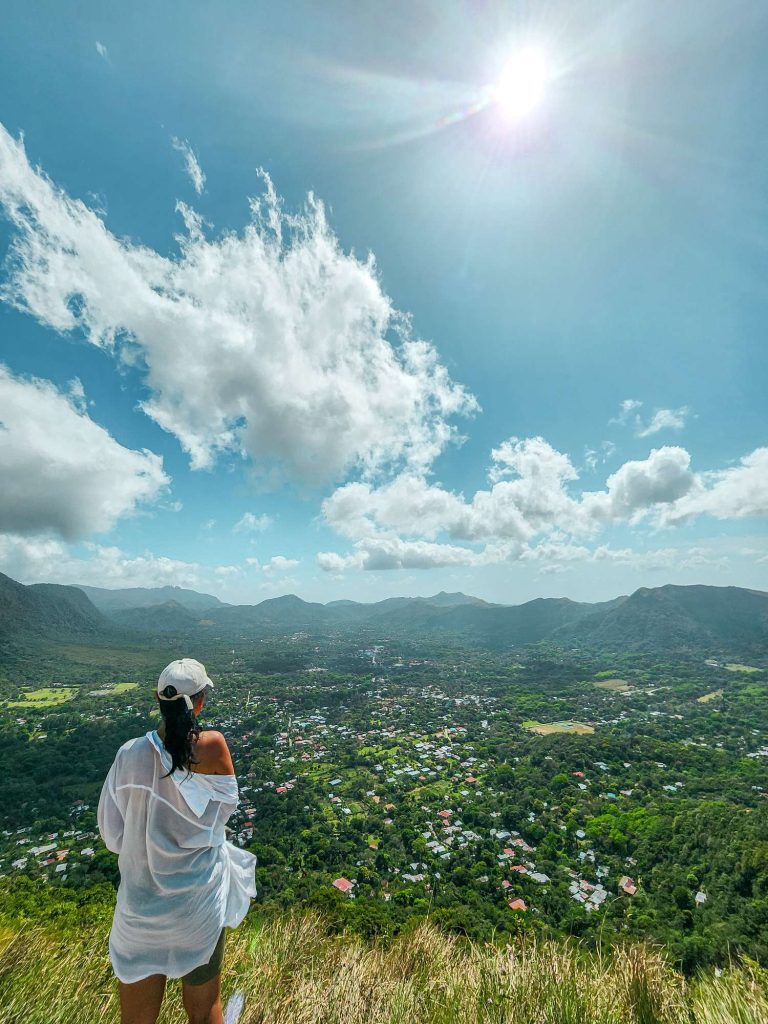
Anton Valley is a stunning destination in Panama, known for its lush forests, scenic hiking trails, and natural wonders. It’s one of my fav destination in Central America as well and is situated inside a dormant volcanic crater. One of the must-do hikes in Anton Valley is the La India Dormida Trail, which offers breathtaking views of the valley and the surrounding countryside.
The La India Dormida Trail is named after a rock formation that resembles a sleeping Indian woman. The trail is approximately 4.5 km long and takes around 3-4 hours to complete. It starts at the base of La India Dormida and winds its way up the mountain through lush tropical forests, rocky terrain, and steep inclines.
Hostel advised that recently there have been some robberies happening on this trail and not to go solo. So, I went with a fellow traveller and recommned the same.
As you climb higher, the trail opens up to reveal stunning panoramic views of the valley, including the town of Anton and the surrounding mountains. Along the way, you’ll encounter a variety of flora and fauna, including exotic birds, butterflies, and orchids.
The legend behind La India Dormida is that a beautiful Indian princess fell in love with a Spanish conquistador. Her tribe disapproved of the relationship and forced her to marry another man. Heartbroken, the princess climbed the mountain and fell asleep, turning into a rock formation that still stands today.
The La India Dormida Trail
This is a challenging hike that rewards those who make the effort with unforgettable views and a fascinating backstory. It’s a must-do hike for anyone visiting Anton Valley, and it’s sure to leave a lasting impression.
I must add that, there are many stories and legends surrounding La India Dormida, and the one I shared is just one of them. I’d be happy to share another story about this iconic rock formation.
According to another legend, La India Dormida is named after an indigenous woman who lived in the valley a long time ago. She was known for her beauty and wisdom and was greatly respected by her people. One day, a group of Spanish conquistadors arrived in the valley and began to plunder and destroy the land.
The indigenous woman, feeling a great sense of responsibility to protect her people and the land they lived on, decided to take matters into her own hands. She climbed to the top of the mountain, where she prayed to the gods for strength and guidance.
As she prayed, she fell into a deep sleep and turned into the rock formation that still stands today. The legend goes that she continues to watch over the valley and protect it from harm, even in her eternal slumber.
This legend, like the first one, highlights the rich cultural history and deep spiritual connection that the people of Anton Valley have with their land and natural surroundings. Regardless of which legend you choose to believe, the La India Dormida Trail remains a must-do hike for anyone visiting the area, offering a glimpse into the unique culture and history of this beautiful part of the world.
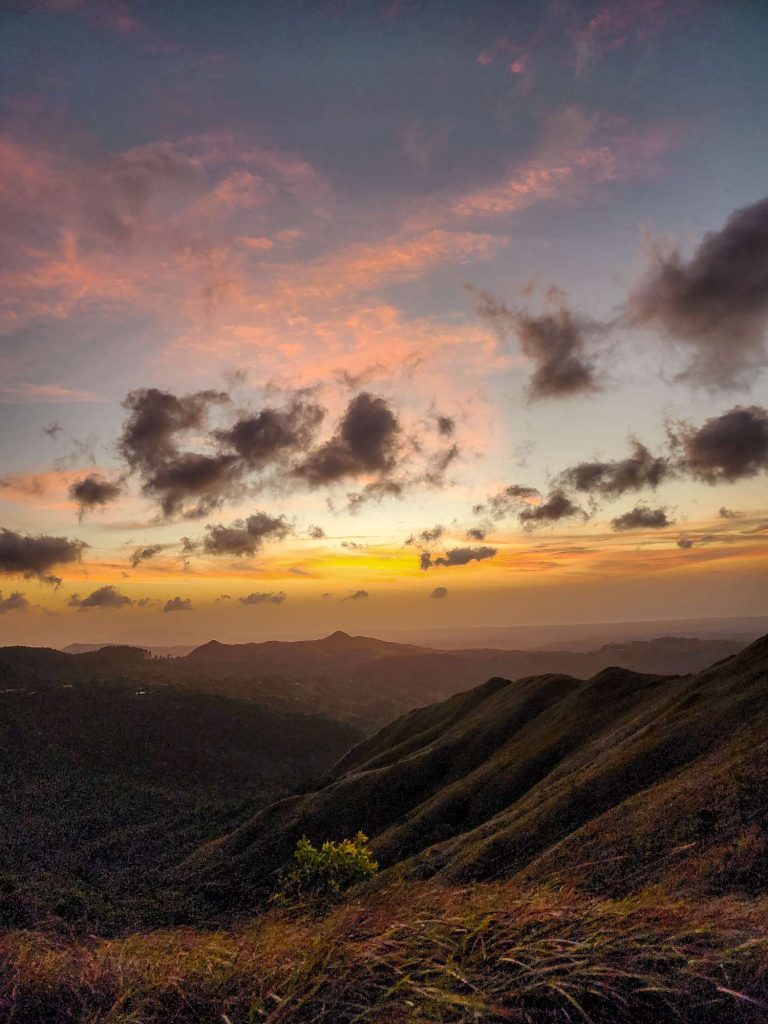


Cerro La Silla – La Pita Trail
This trail takes you to the summit of Cerro La Silla, a mountain peak that offers stunning views of the valley. The hike is challenging, but the reward of watching the sunrise from the top of the mountain is worth the effort. On the way back down, the La Pita Trail takes you through lush tropical forests and past beautiful waterfalls.
Los Cajones de Chame Trail
This challenging hike takes you through narrow canyons, over boulders, and across streams. The reward is a series of beautiful waterfalls and natural pools that are perfect for a refreshing swim. This hike is best done in the morning or early afternoon.


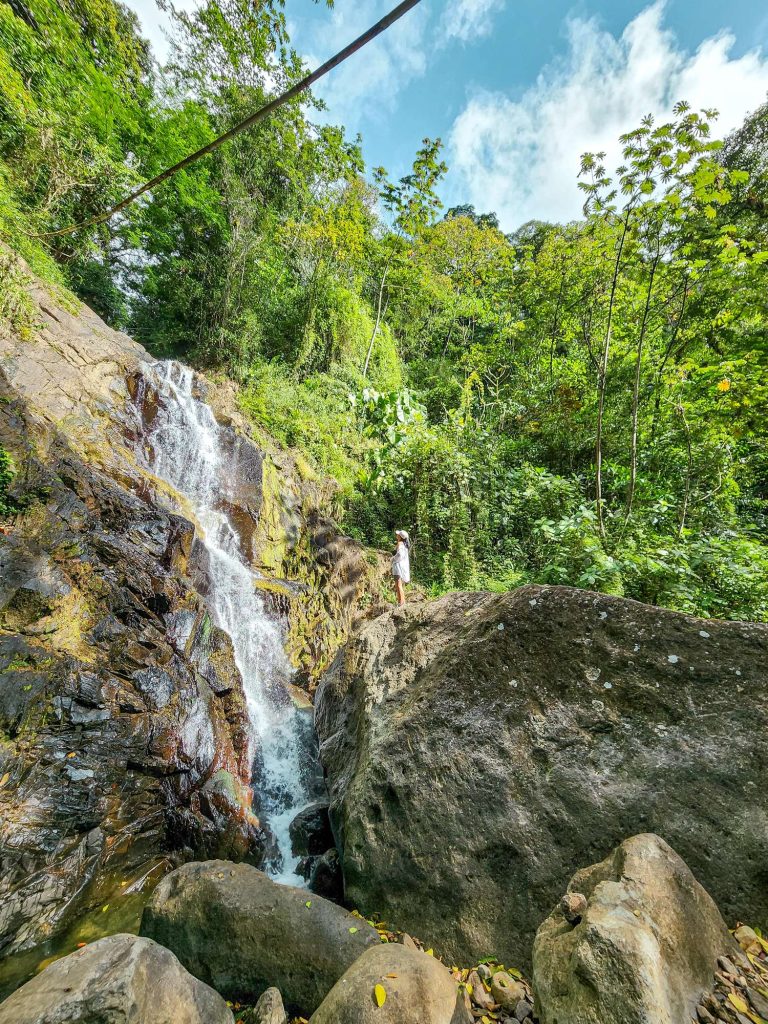
Cerro Cara Iguana Trail
This difficult hike takes you through dense forest and up steep inclines to a peak that offers panoramic views of the entire valley. It is best done in the late afternoon, as the sunset from the summit is breathtaking.
Chorro El Macho – La Piedra Pintada – Agua Buena Trail
This combination trail takes you to three different destinations, including the stunning Agua Buena natural pool and waterfall. Along the way, you’ll also have the opportunity to explore the La Piedra Pintada site and swim in the Chorro El Macho waterfall. This hike is best done in the mid-morning or early afternoon.
No matter which hikes you choose to do, Anton Valley’s unique geological features and rich cultural history make it a must-visit destination for any hiking enthusiast.
Go on a wildlife tour: Anton is home to a variety of wildlife, including monkeys, sloths, toucans, and parrots. You can go on a wildlife tour to see these animals in their natural habitats.
Visit the Anton Valley Butterfly Haven
This is a beautiful butterfly garden where you can see dozens of species of butterflies in all their colorful glory.
Soak in the hot springs
The El Valle de Anton is known for its natural hot springs, which are said to have healing properties. There are several hot spring resorts in the area where you can relax and rejuvenate.
El Nispero Zoo and Botanical Garden
This zoo and botanical garden is home to a wide variety of exotic animals and plants, including monkeys, sloths, toucans, orchids, and bromeliads. Visitors can take a guided tour or explore the gardens on their own.
Which hostels to stay in in Panama City?
There are many great hostels to choose from in Panama City. Here are a few options to consider:
Highlights in Panama City
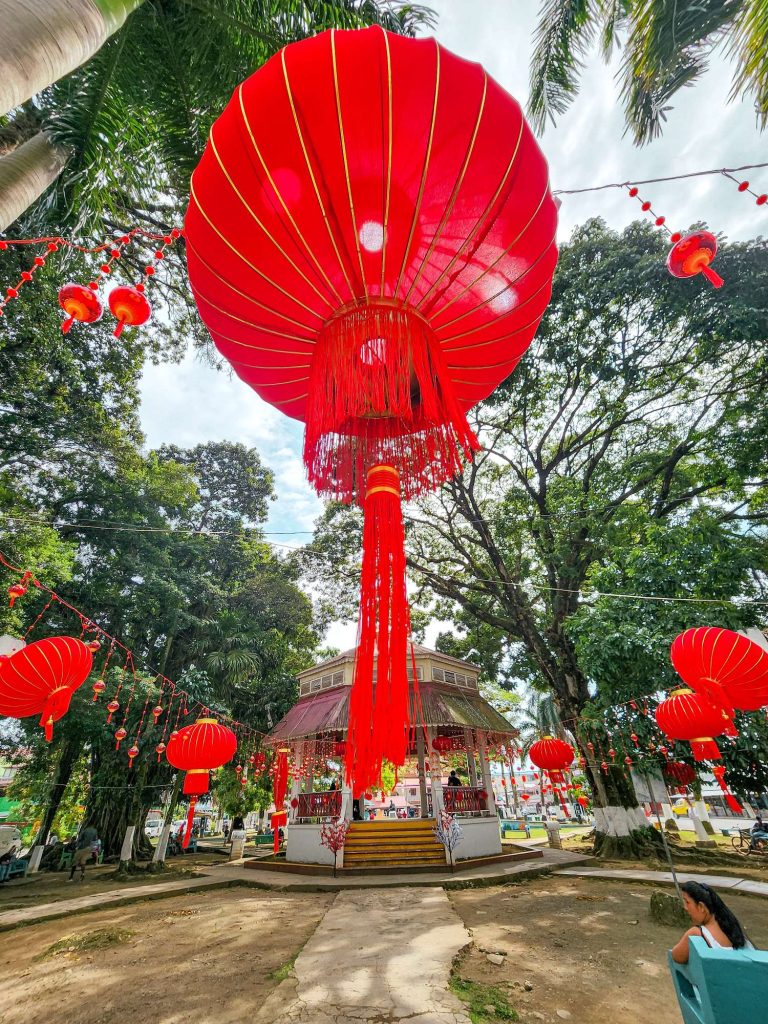

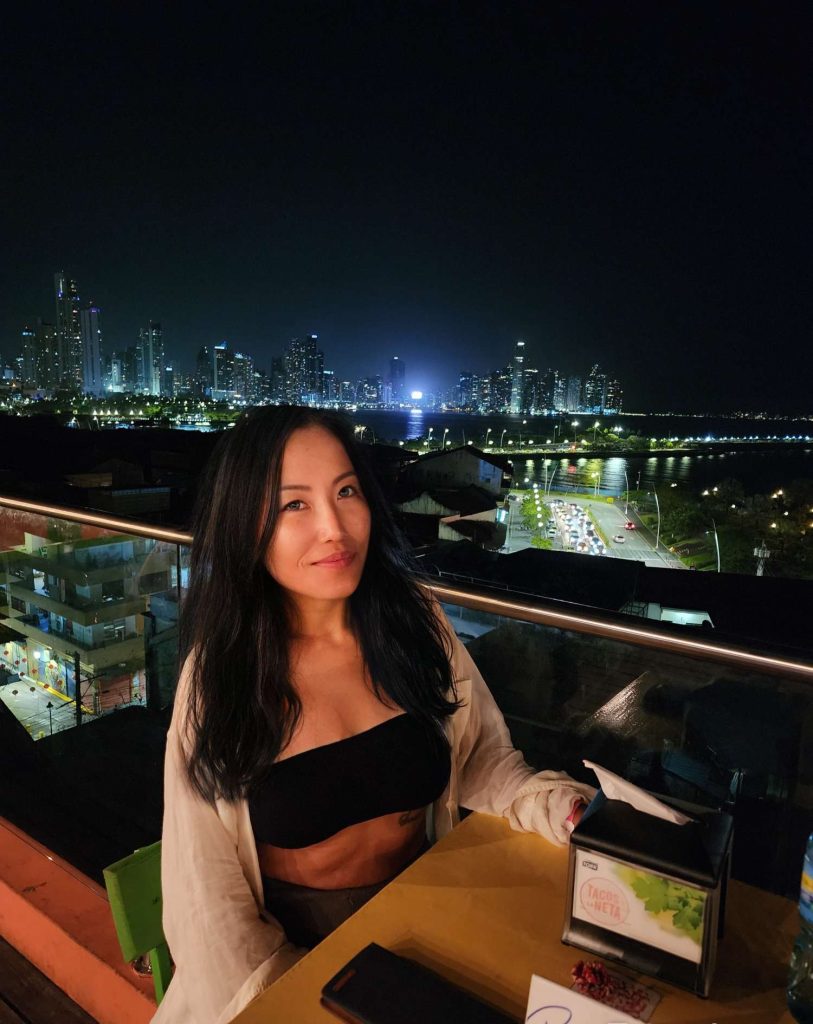

Panama City is a vibrant and cosmopolitan city with a rich history and culture. Here are some of the top highlights to explore during your visit:
- Panama Canal: If you are into Canals, you don’t want to miss out on Panama Canal. You can take a tour of the locks, visit the museum, or even take a boat ride through the canal.
- Casco Viejo: This historic district is a UNESCO World Heritage Site and is home to charming colonial architecture, colorful buildings, and lively plazas. You can stroll through the streets, visit historic landmarks, and enjoy the vibrant atmosphere.
- Biomuseo: Designed by famous architect Frank Gehry, this museum is dedicated to the biodiversity of Panama and features interactive exhibits, outdoor spaces, and stunning views of the city.
- Ancon Hill: This natural landmark offers panoramic views of the city and the surrounding rainforest. It’s a popular spot for hiking and nature walks.
- Amador Causeway: This scenic causeway connects Panama City to three small islands in the Pacific Ocean. It’s a great place to bike, walk, or enjoy a drink or meal with a view of the water.
- Metropolitan Natural Park: This nature reserve is located in the heart of the city and offers a peaceful escape from the hustle and bustle. You can hike through the forest, spot wildlife, and enjoy stunning views of the city skyline.
- Panama Viejo: This historic site was the original location of Panama City before it was destroyed by pirates. You can explore the ruins, visit the museum, and learn about the history of the city.
There are many other things to see and do in Panama City, but these highlights are a great place to start.
If you have more time, San Blas islands as the next stop are recommended then towards boat or plane to Colombia or perhaps a flight to Quito, Ecuador.
So there you have it. Backpacking through central America for one month route and itinerary.
CA-4:
It won’t apply to you if you are traveling for only one month in central America but in case you do decide to extend. Note that there is a thing called the CA-4 group which includes Honduras, Guatemala, Nicaragua, and El Salvador and they permit free travel between them all. This means they spread your 90 days between these four countries. To avoid any fines make sure your stay in these 4 countries is within 90 days.



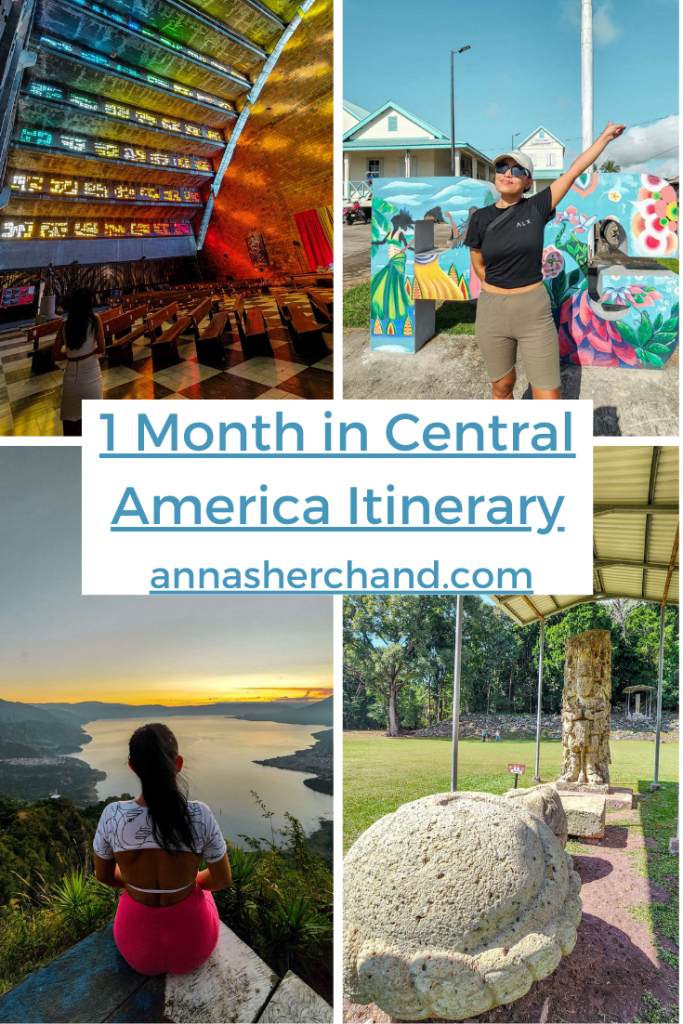
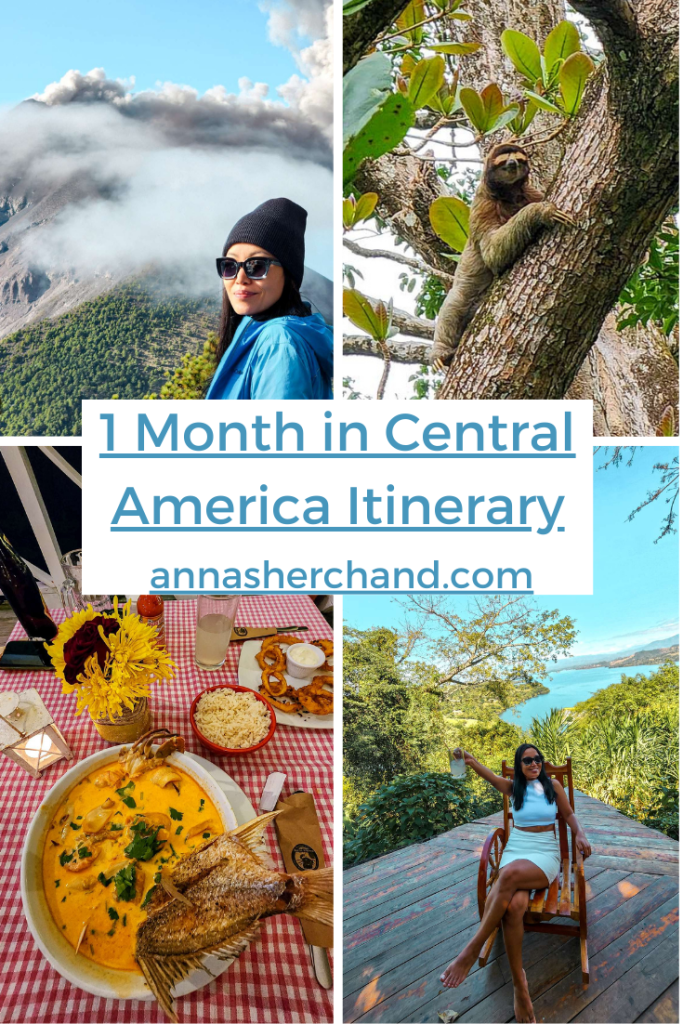

Let me know in the comments:
If you have any questions about backpacking One month in Central America itinerary
Venezuela itinerary and travel tips
5 days in Uruguay itinerary
Backpacking Paraguay Itinerary + Travel Tips
Solo trip to Peru One month itinerary
Solo female travel Colombia
7 days backpacking in Ecuador itinerary
Solo female travel to Georgetown Guyana
5 days in Oaxaca itinerary
2 days in Mexico City itinerary
7 Days Itinerary in Georgia
4 Days in Azerbaijan Itinerary
Best places to visit from Split
2 days in Split, Croatia
Solo traveling to Mostar
Solo female travel to Kotor
Solo female travel to Budva
Solo female travel Albania
Warsaw by Train covers warsaw travel tips
Check out One day in Luxembourg, western Europe
Day trip from Zurich to Liechtenstein
Travel tips to South America
Fiji solo travel guide
Australia east coast must-see
Backpacking in Melbourne, Australia
Digital nomad guide to Melbourne
14 best area to stay in Melbourne CBD
Master Sydney travel guide
Solo travel guide to Brisbane
Exploring Adelaide the best way is a must-read
Important travel tips for Uluru trip
Melbourne day trips in winter
Day Hikes in Melbourne
Weekend getaway? Check out things to do in Ballarat
Perth solo itinerary
Top 5 must do in Darwin, Australia
How to go from Dublin to Howth
Solo female travel Romania
Read a recent day trip to Zaanse Schans from Amsterdam
How about a solo itinerary to Canberra– Australia’s capital city?
Solo trip to Peru, travel tips to South America
Check out the 7 days Hanoi travel guide.
Book accommodation through trusted Booking.com
I have detailed travel resources right here. Save money, learn what and how.
If you like this article, follow my adventures on Instagram, Facebook, YouTube, Twitter, and Pinterest, or read about me travel blogger from Australia but most importantly sign up to my e-mail list to keep up with updates and travel posts!

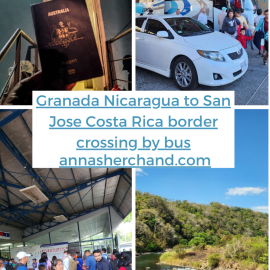
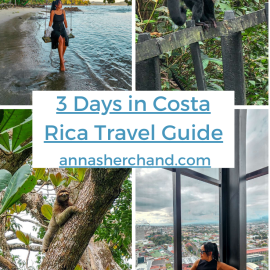

I wanted to get some information on the total cost of doing something like this, so that I can look ahead on how to budget for it. I’m currently an undergrad student finishing up my junior year, so I wanted to do something like this before I graduate and the best year to do it would probably be right after the holidays. Any feedback would be greatly appreciated!!
Hi Victor,
Thanks for dropping by. The total cost depends on individual circumstances and other variables which is why I didn’t put it on the blog. That said, here is my suggestion – first look at the flight price from where you will be flying to the destination, then whether you need the visa or not if you do, how much that would cost, and how long you want to stay in each of these 7 countries? Once you have these 3, look at hostels/hotels (the links are above on the blog too) whichever you prefer in each place to gain a better understanding of the costs. (also I have mentioned things you can do in each place above that are not super expensive but due to inflation prices may go up) I am not saying you should book every accommodation in advance but suggest booking the first 3 nights or a week to gain momentum in a new place. Plus factor in travel insurance especially if you will be doing extreme sports. Now, if you have looked at all of the things I mentioned, that should give you an estimate of how much you would need. Also, keep in mind there are ways to cut down costs too like volunteering, etc, and don’t forget your passport costs! Hope this helps!
nice information and good article thank you
You are welcome, glad it was helpful!
Hello Anna,
Thank you for these explanatory details! We are looking forward to doing a similar trip, however we are not very sure about the costs.
Can you share roughly what was the cost for the entire month? Not looking for something specific, only if it would be more than 3000/5000 USD per person or more including everything. Of course the expenses differ based on everyone’s expectations&possibilities, but was curious on your case — so we could know if we could cover & start booking stuff 🙂
Thanks a lot!
Gabriela
Hi Gabriela,
You are welcome. There’s a lot to unpack here as I mentioned on one of the previous comment replies. Including everything meaning incl flights, insurance, tours or excl that will help to provide estimate too.
I just want to pop by and say- thank you! I am planning a one month trip around Central America this summer, and I resonated with your blog for a number of reasons. You caught me when you called out the blogs that want you to stay in one country for 3 weeks to see it, but we just don’t all have that kind of time or are in that season of life. I’m going to try what you did, adding a few different things and removing others here and there. But you have given such thoughtful and helpful information here. Thank you!!
Hi Michaella, thanks for dropping by and commenting here. I’m glad it was helpful and relatable. I hope you will have the best adventure in Central America 🙂
Hi, thank you so much for your comprehensive cover on Central America. It has helped steer a decision on where to go for the time I will spend there. You capture all the right locations and after tons of reseach I have a clear idea, much due to the contents on your webpage. As the saying goes “fail to plan, might as well plan to fail” and this is mitigated by content like yours. Best wishes, and enjoy your future travels. Donald.
Hi Donald, You’re welcome, thanks for dropping by with your lovely comment. And yes I agree with the quote 100% Safe travels!